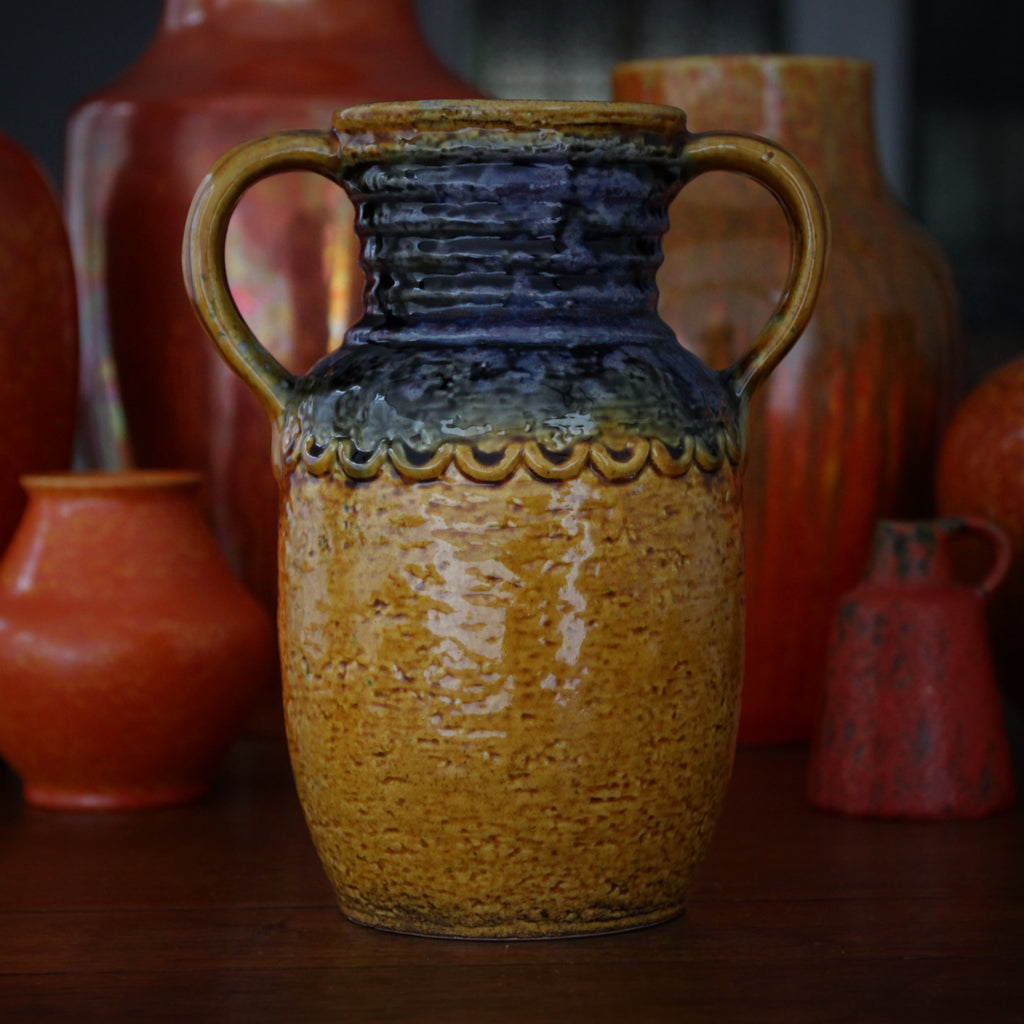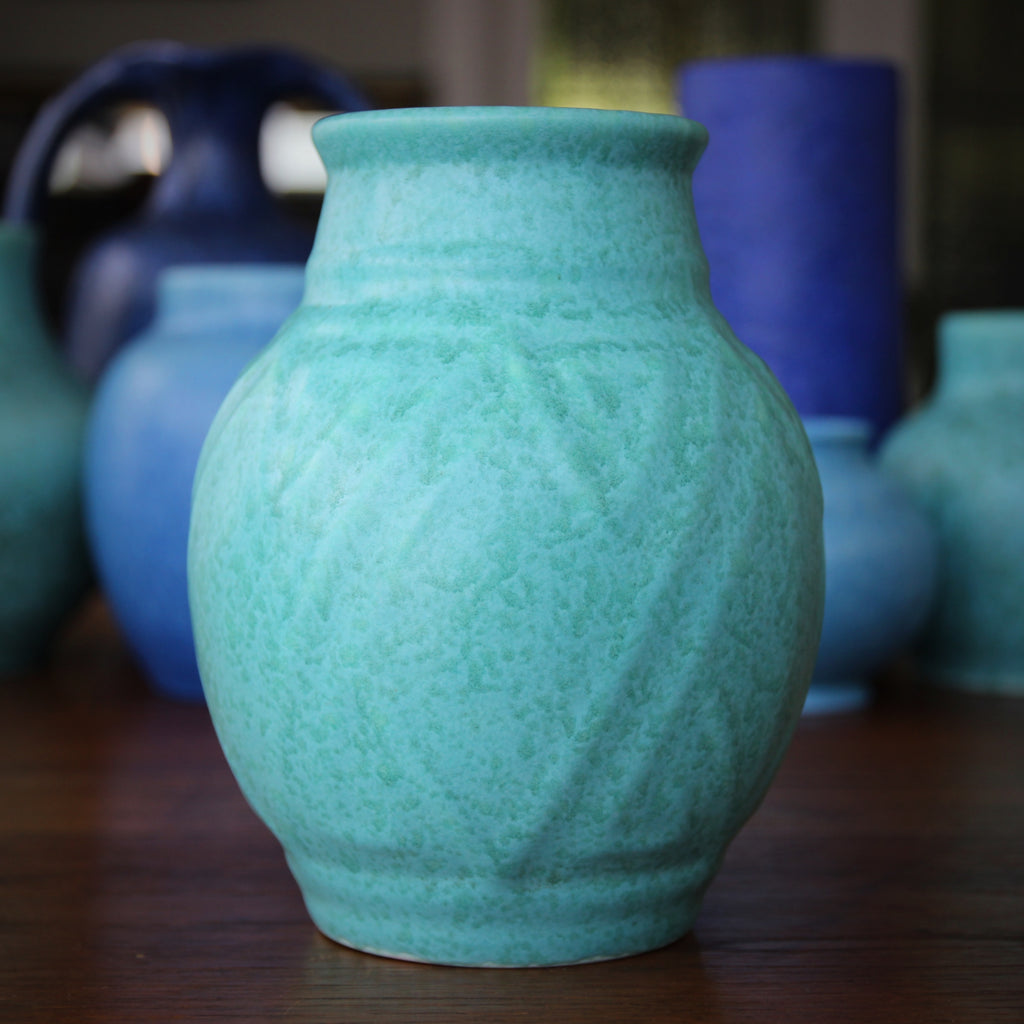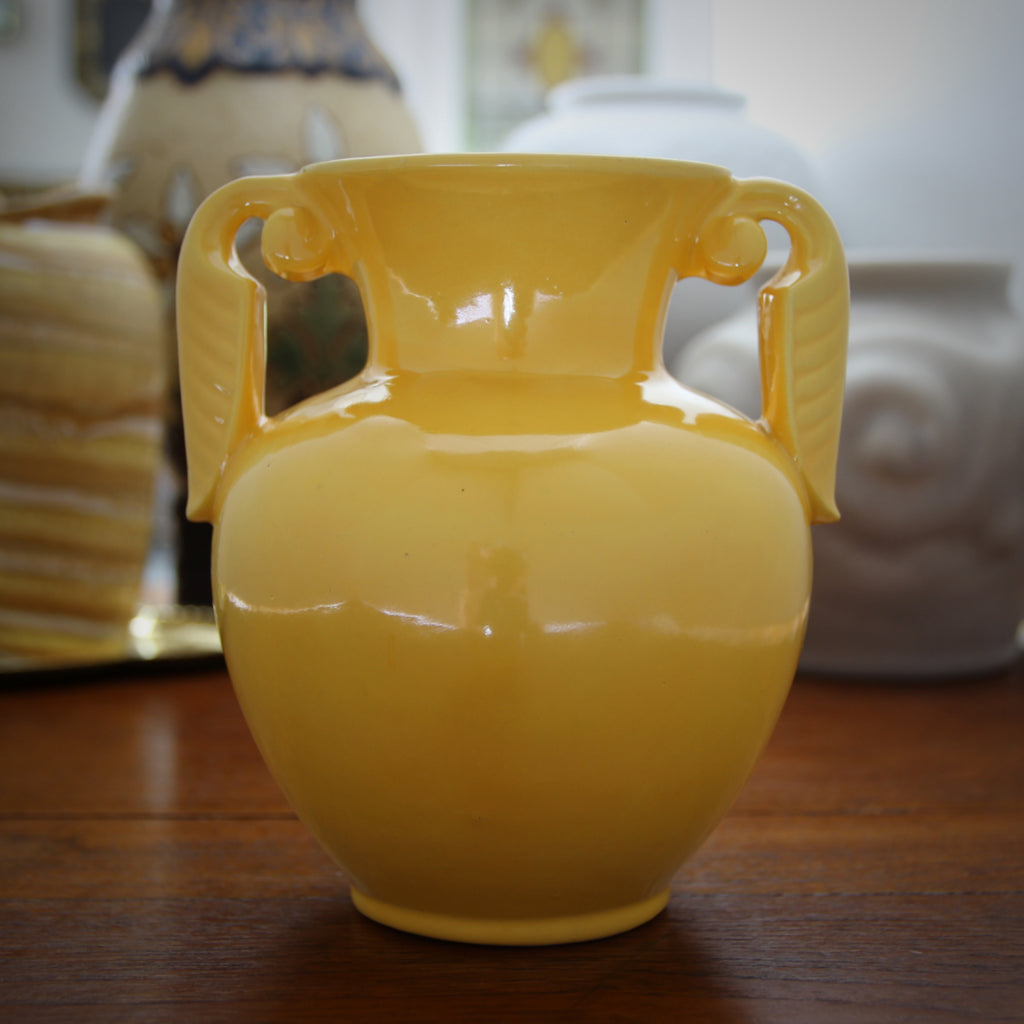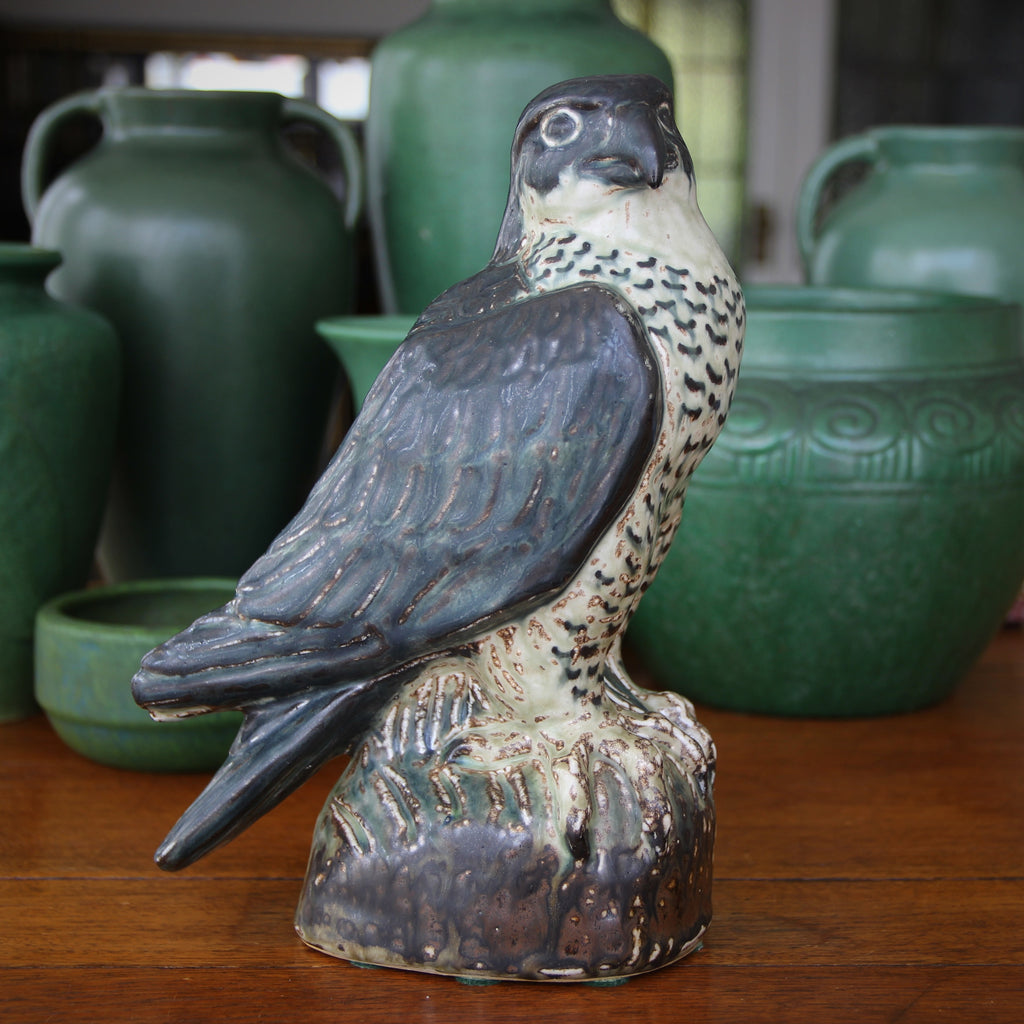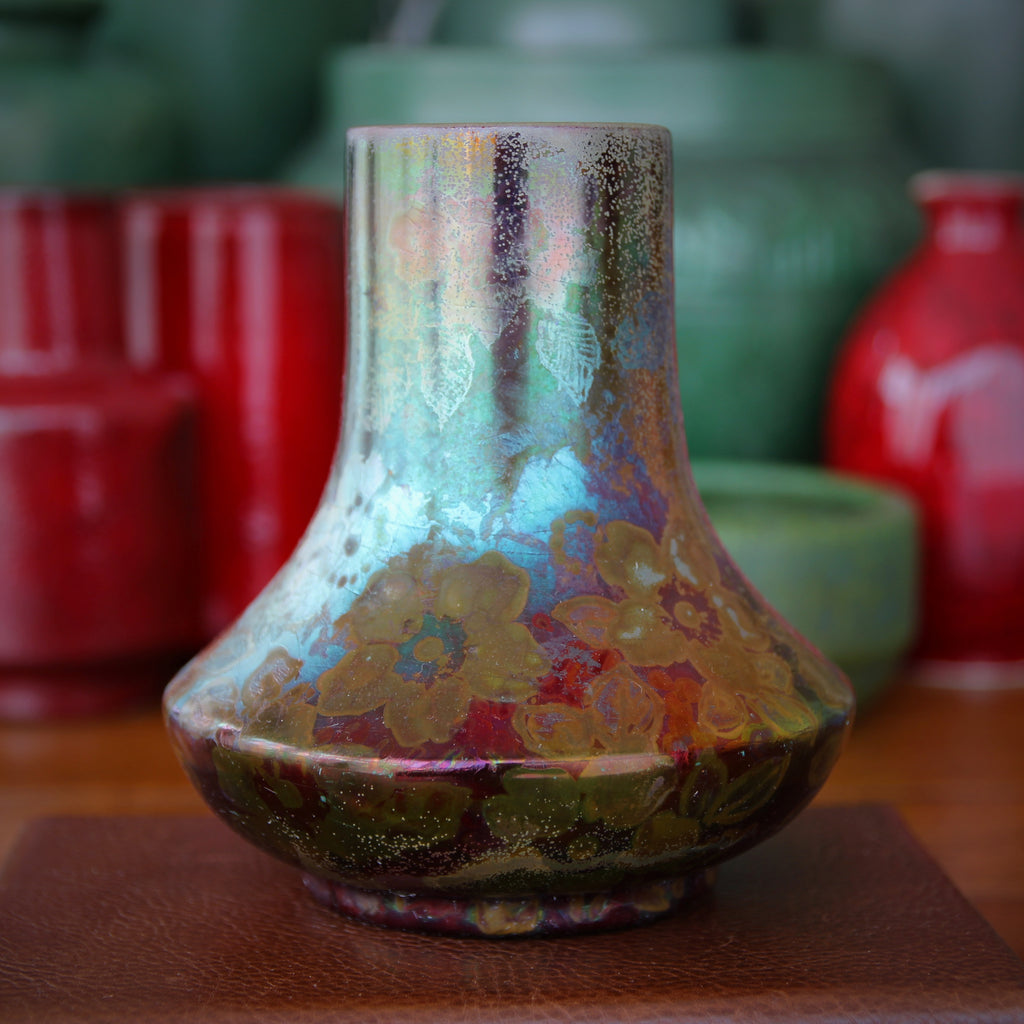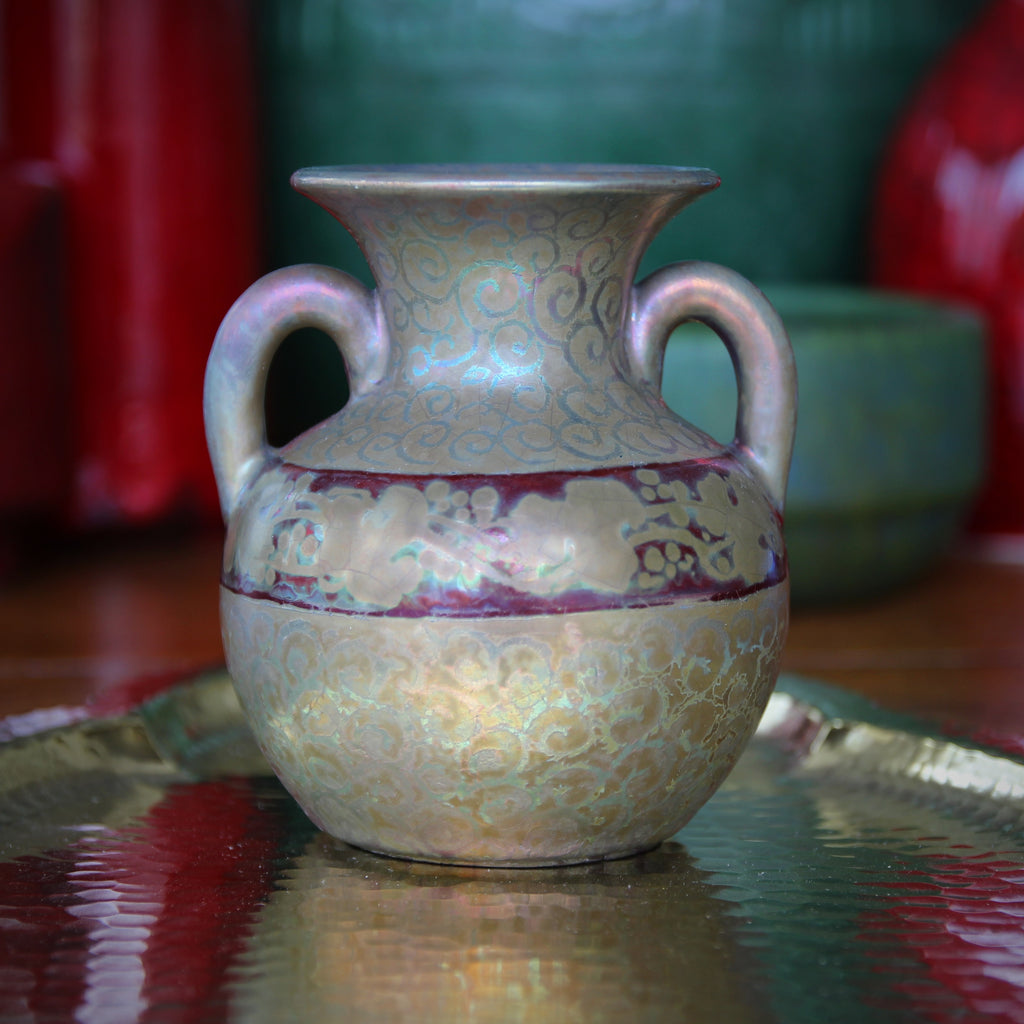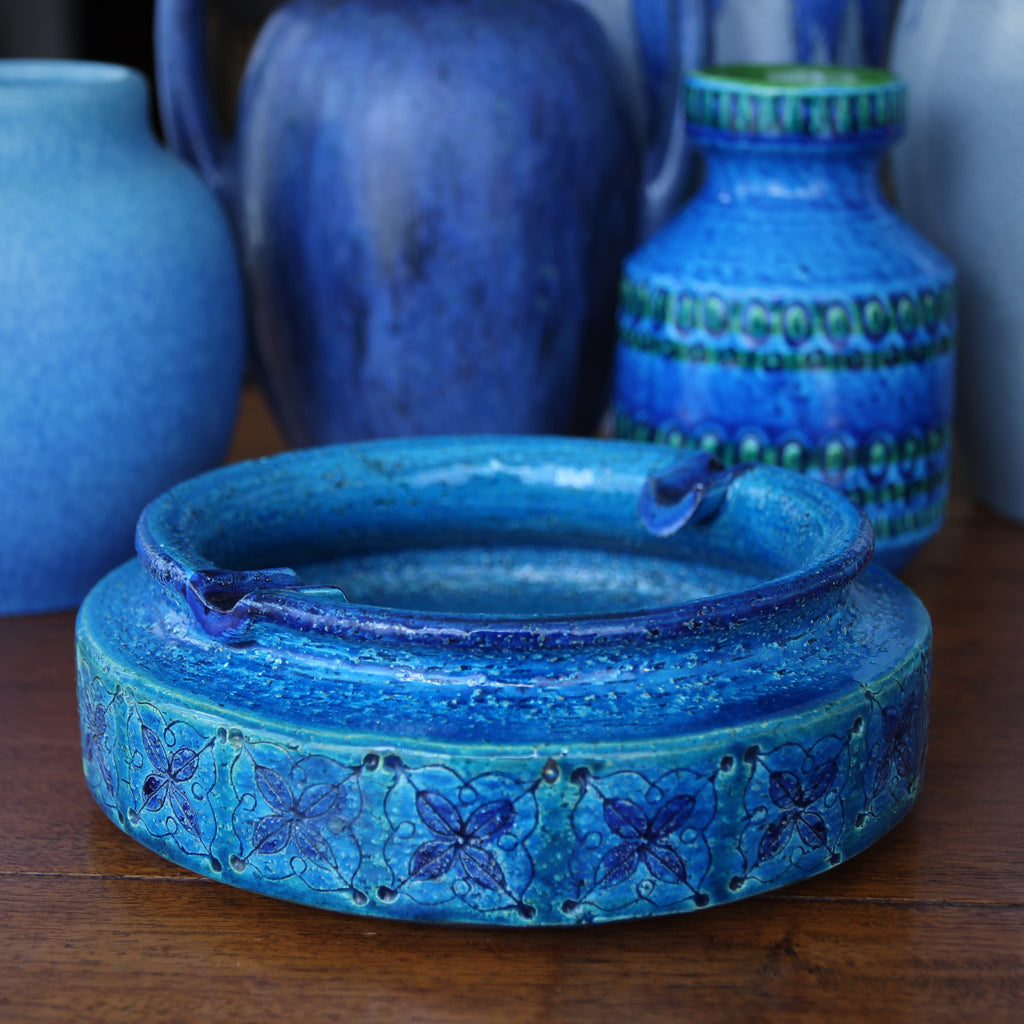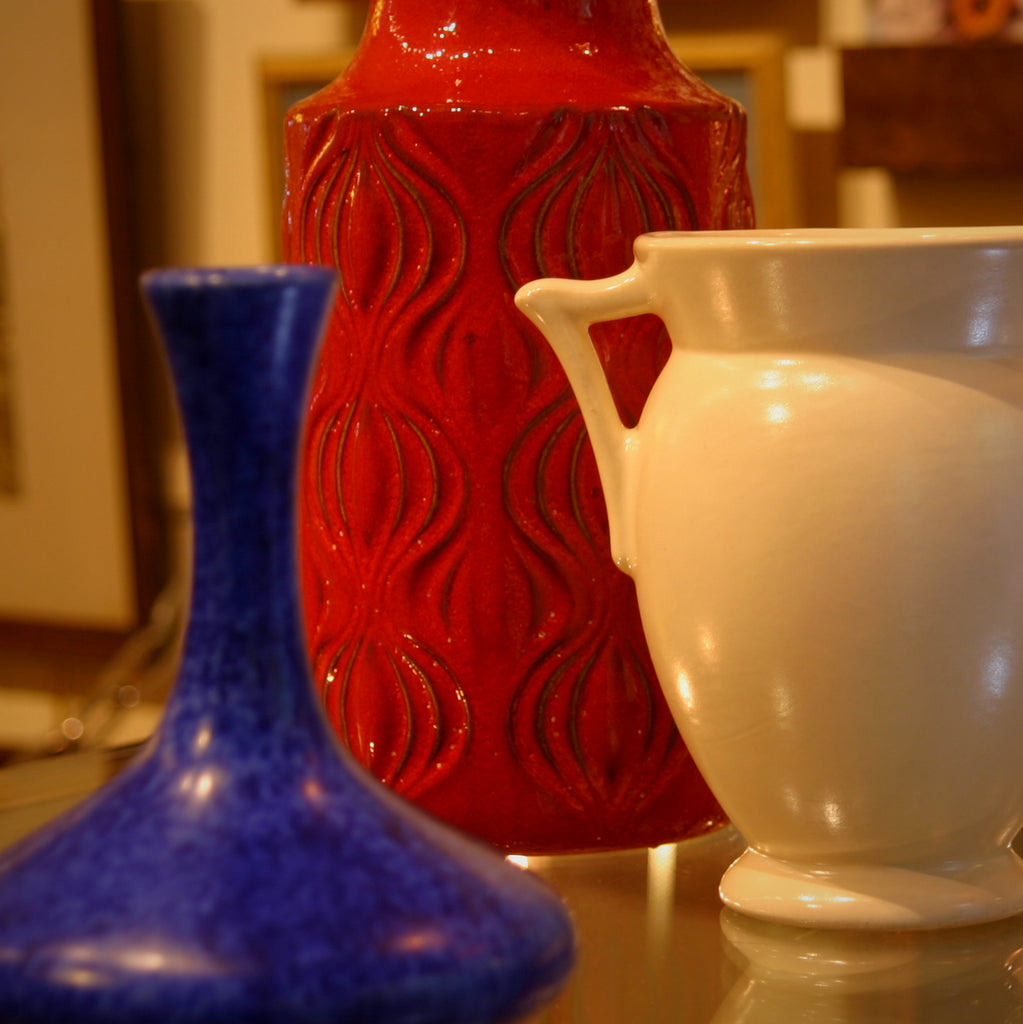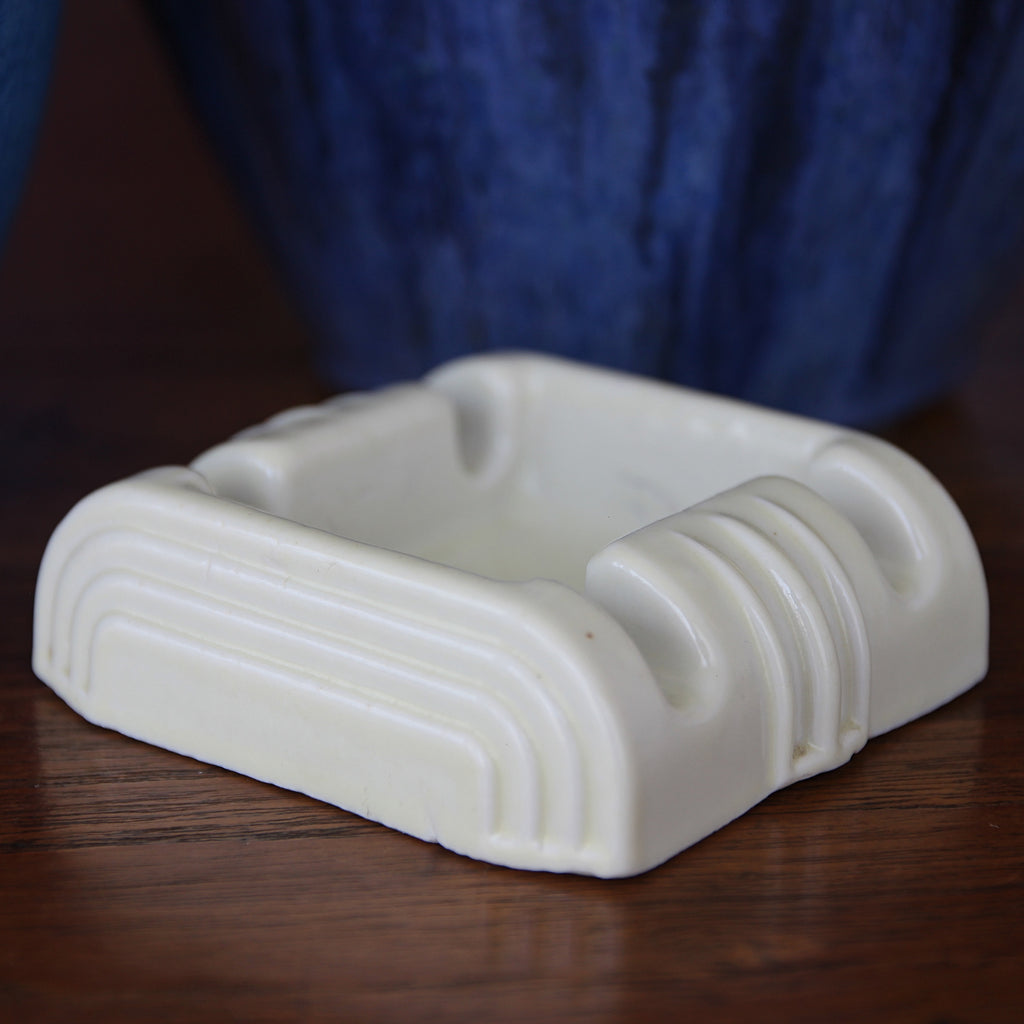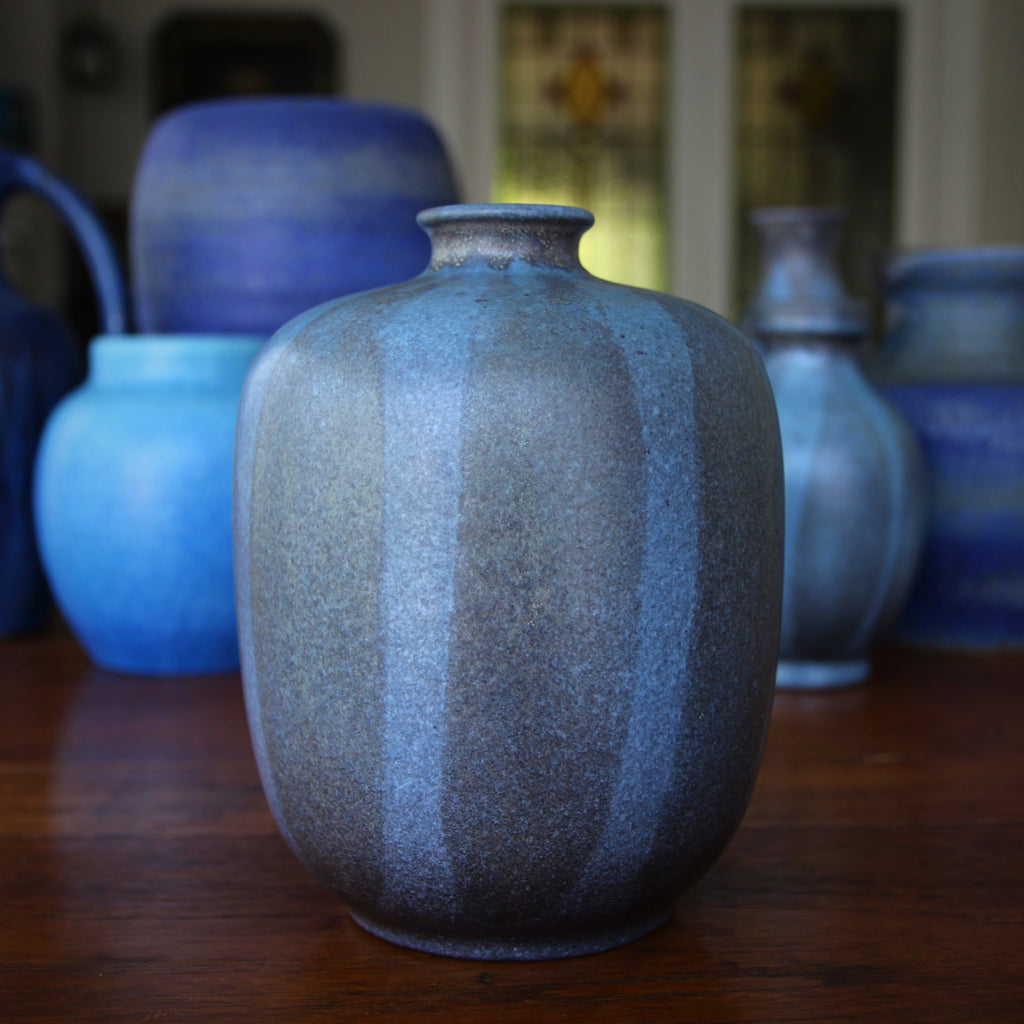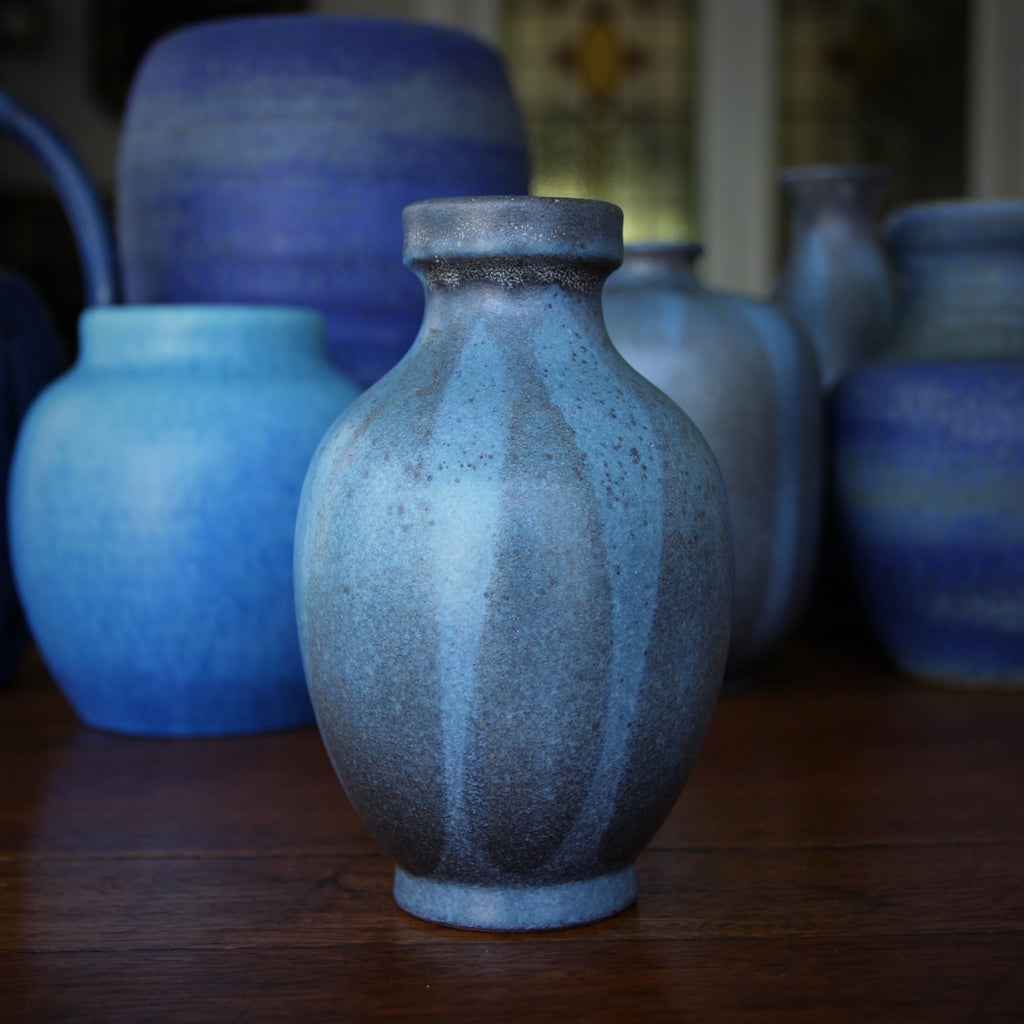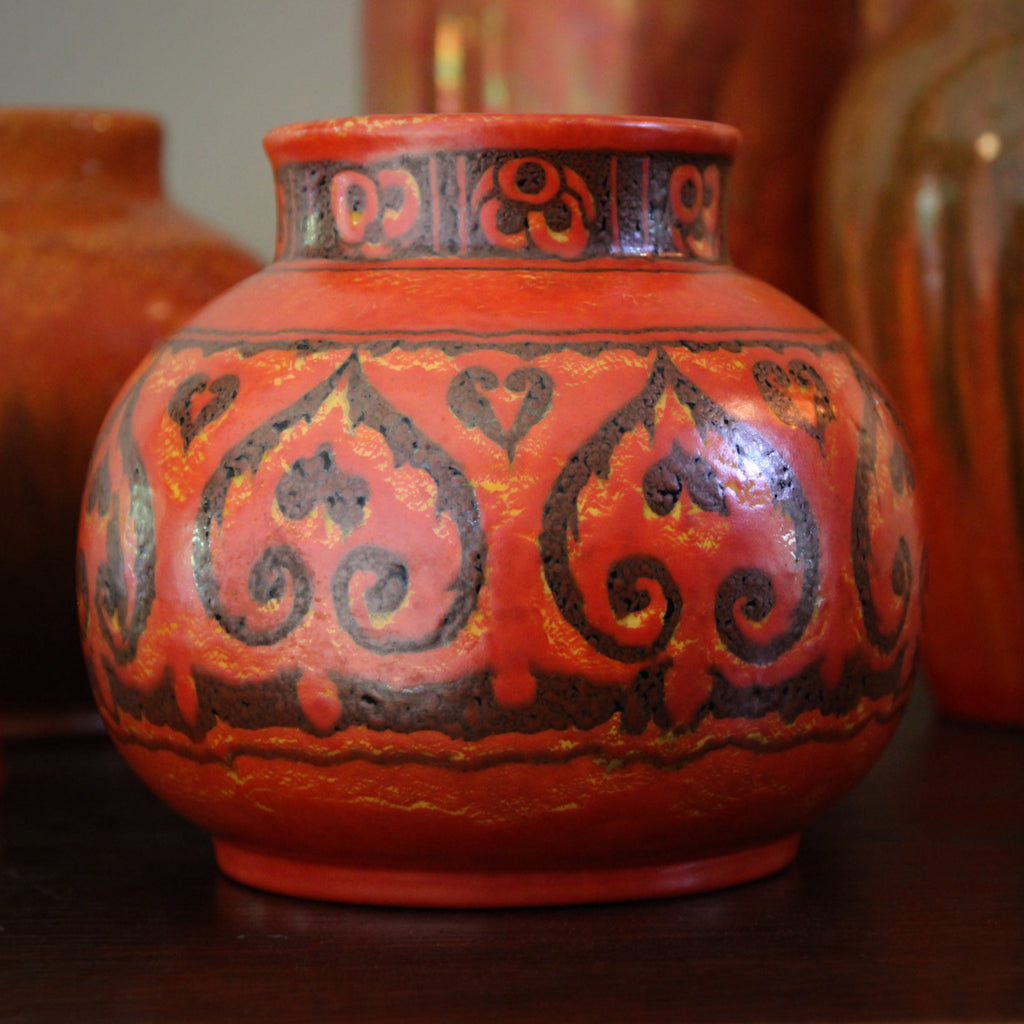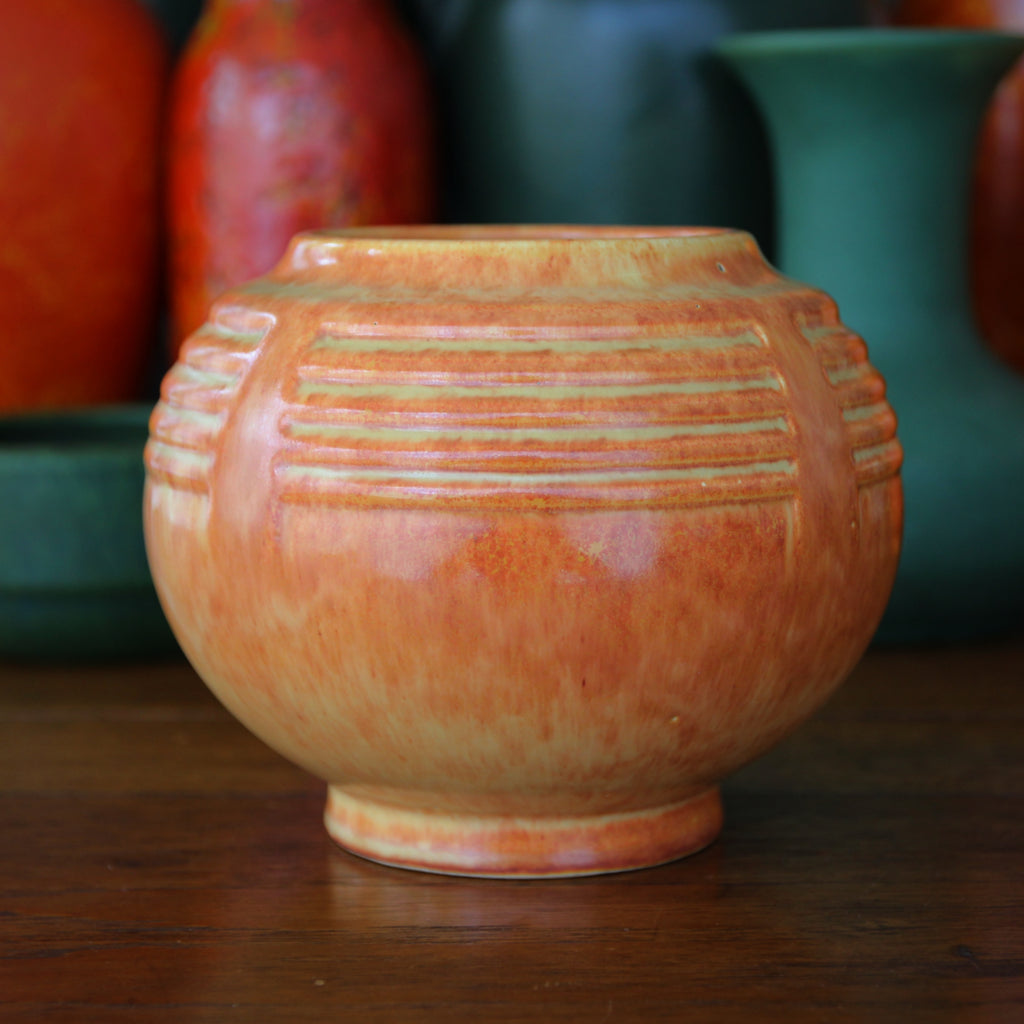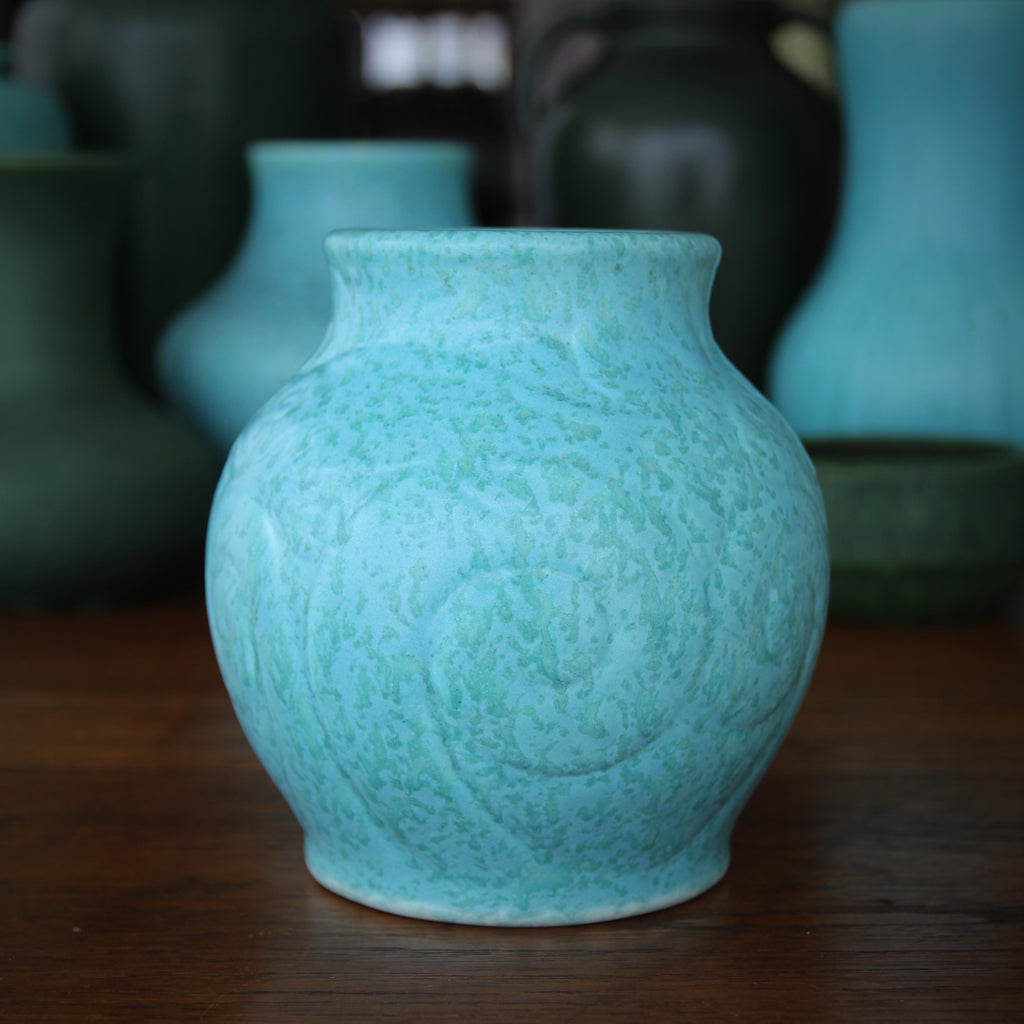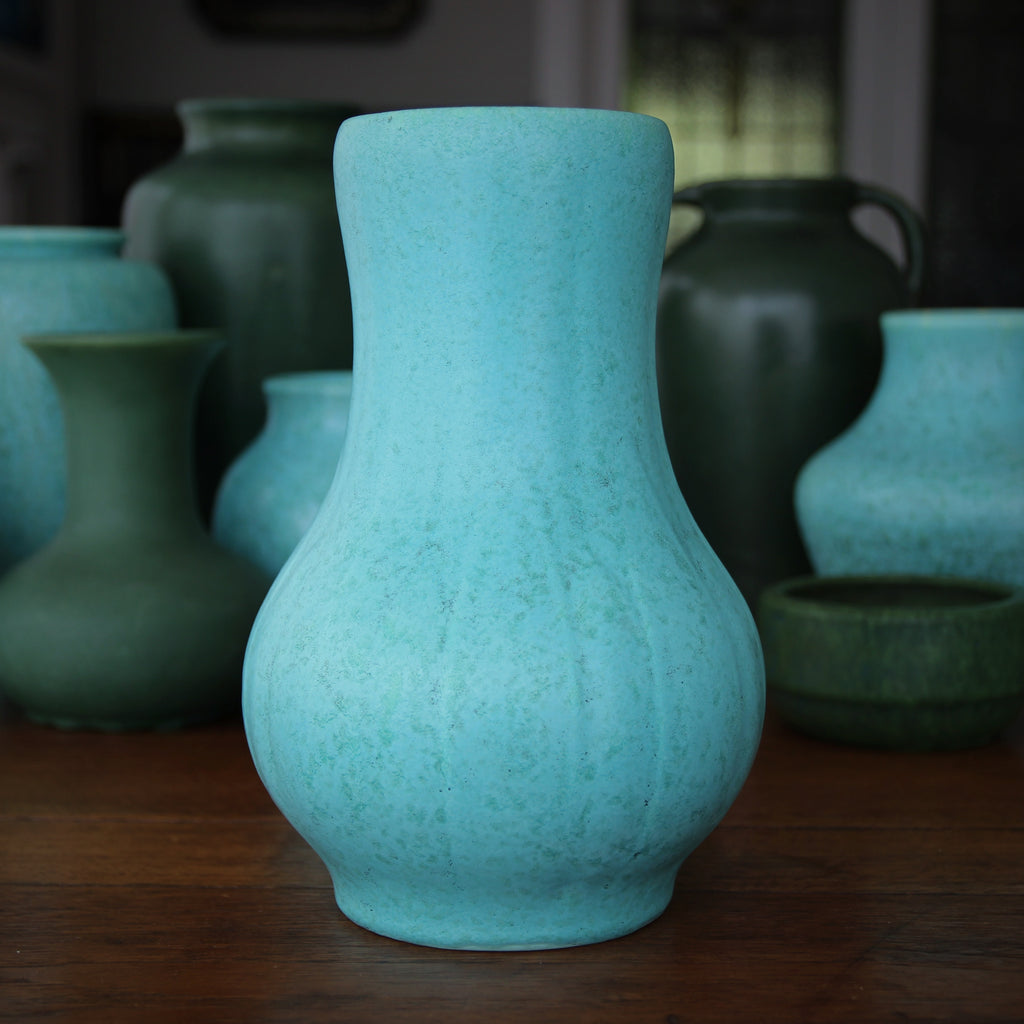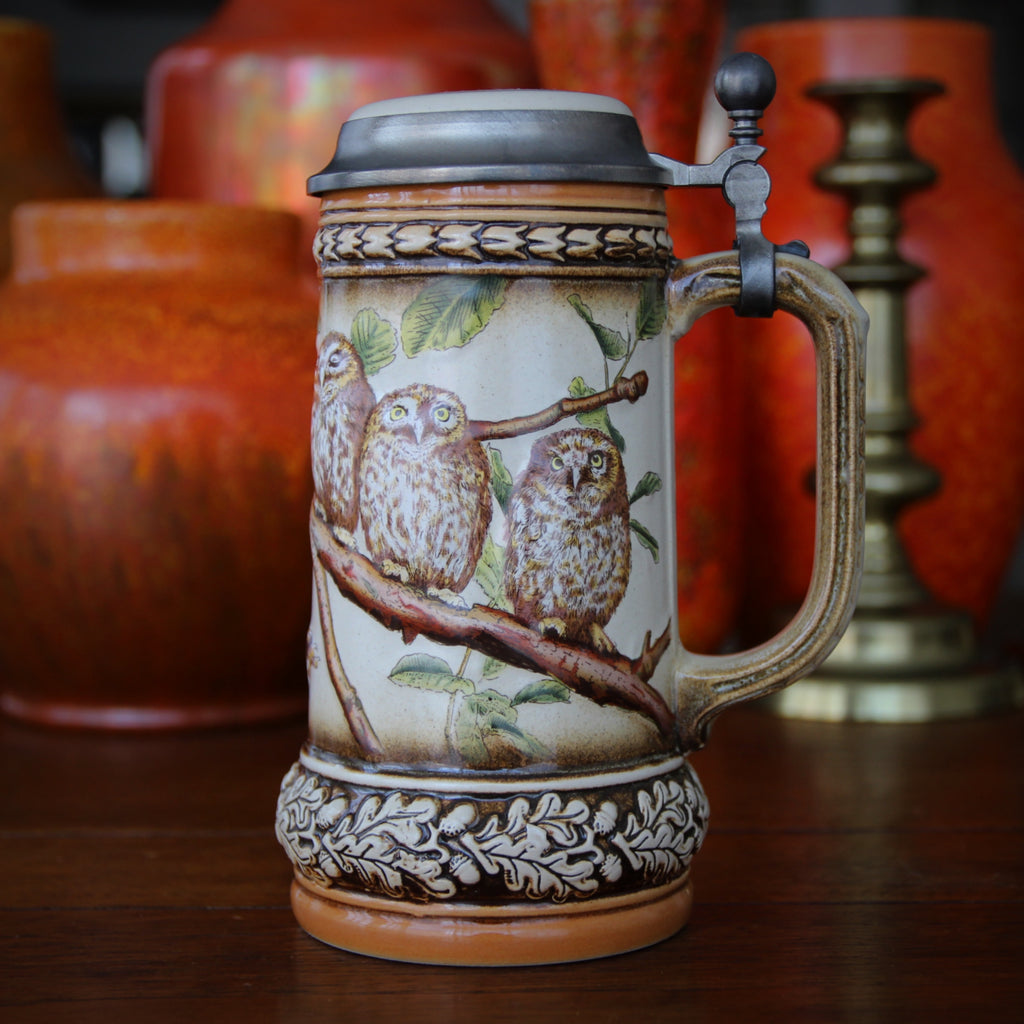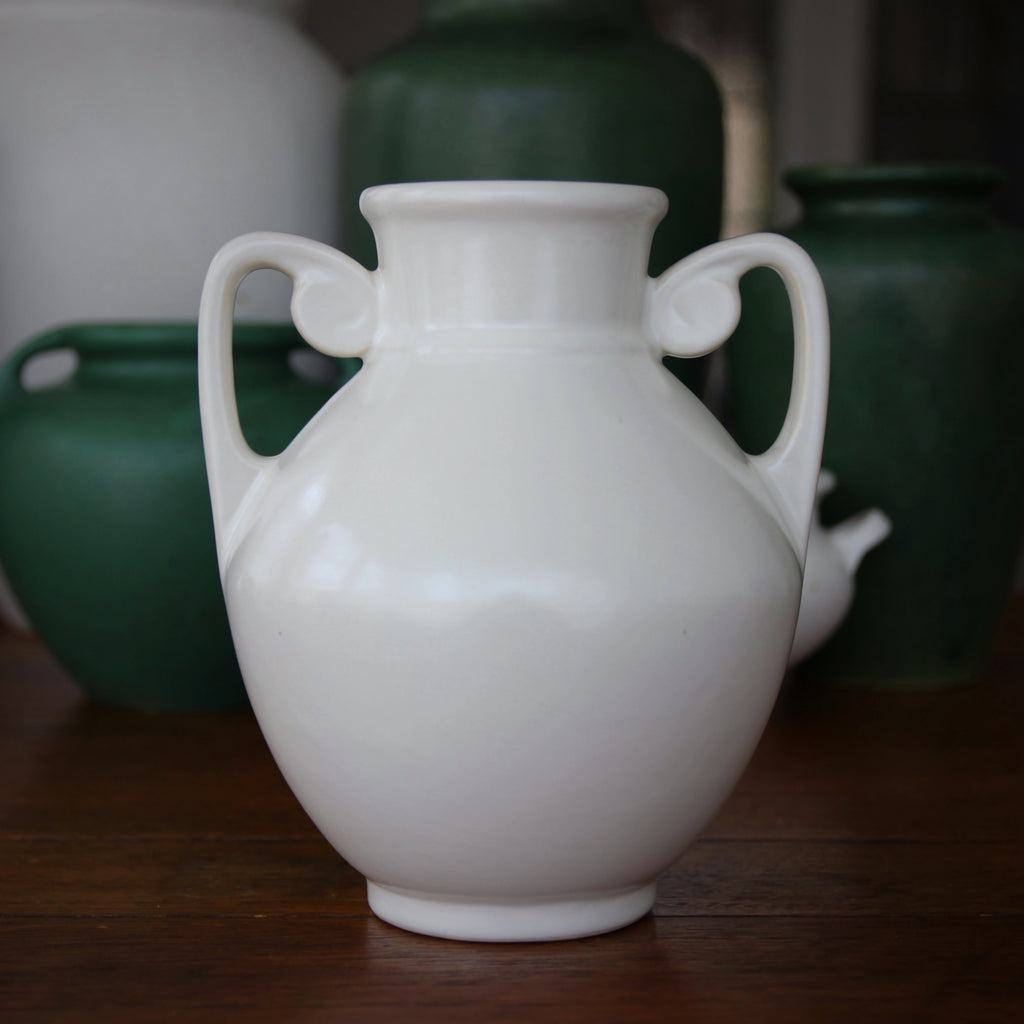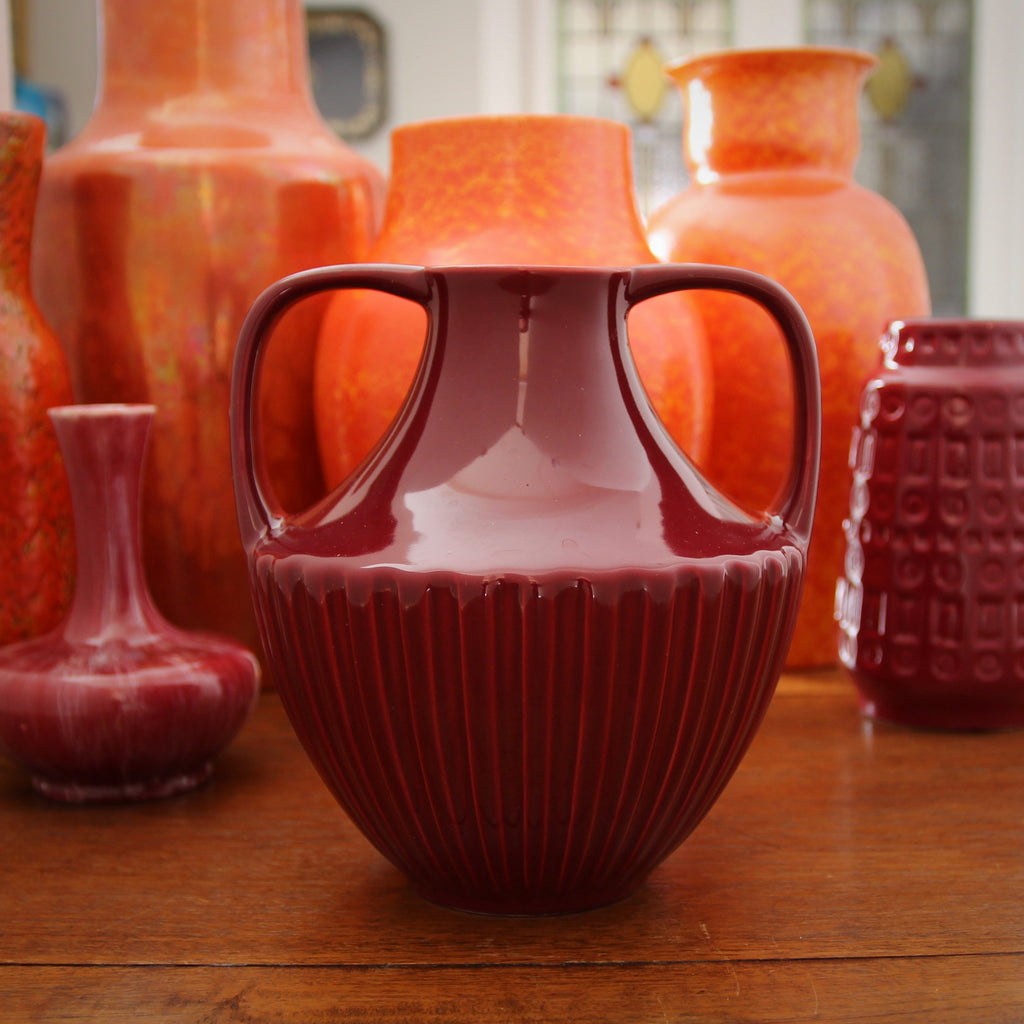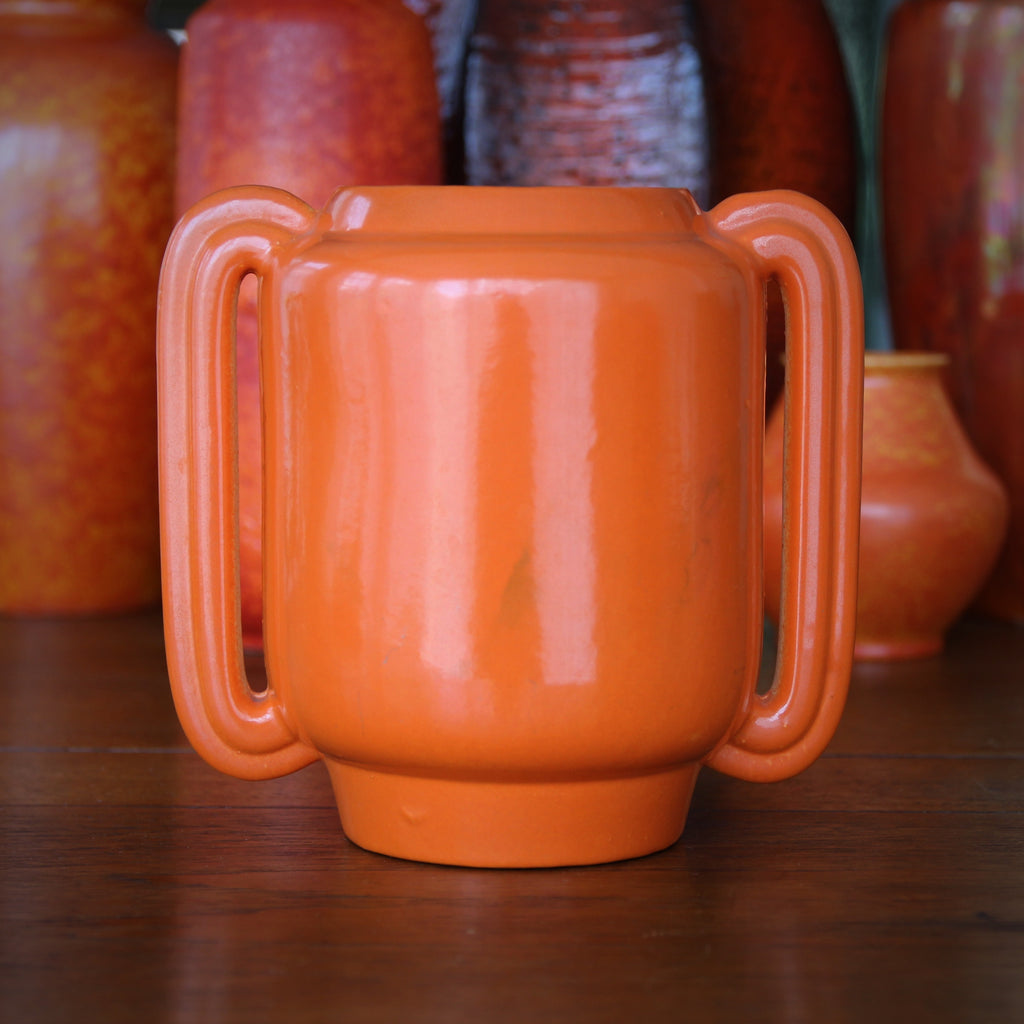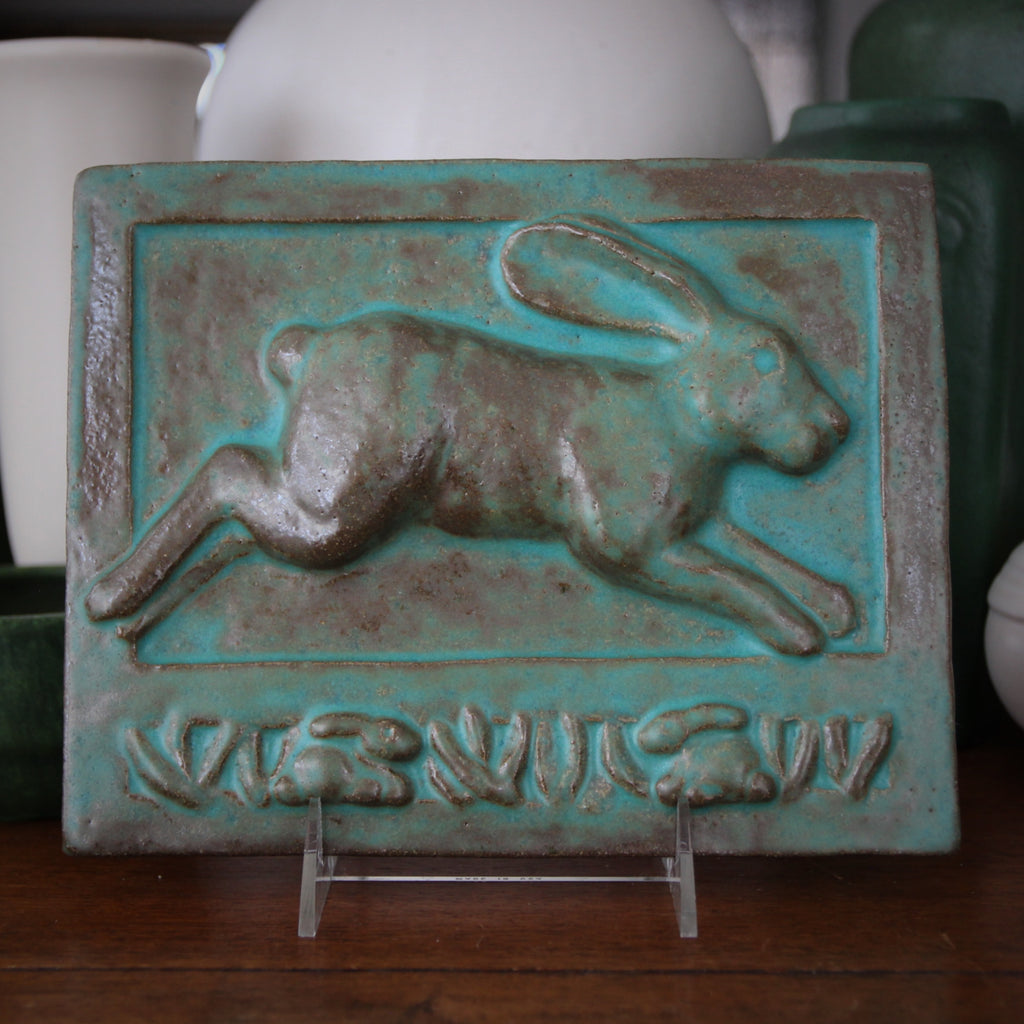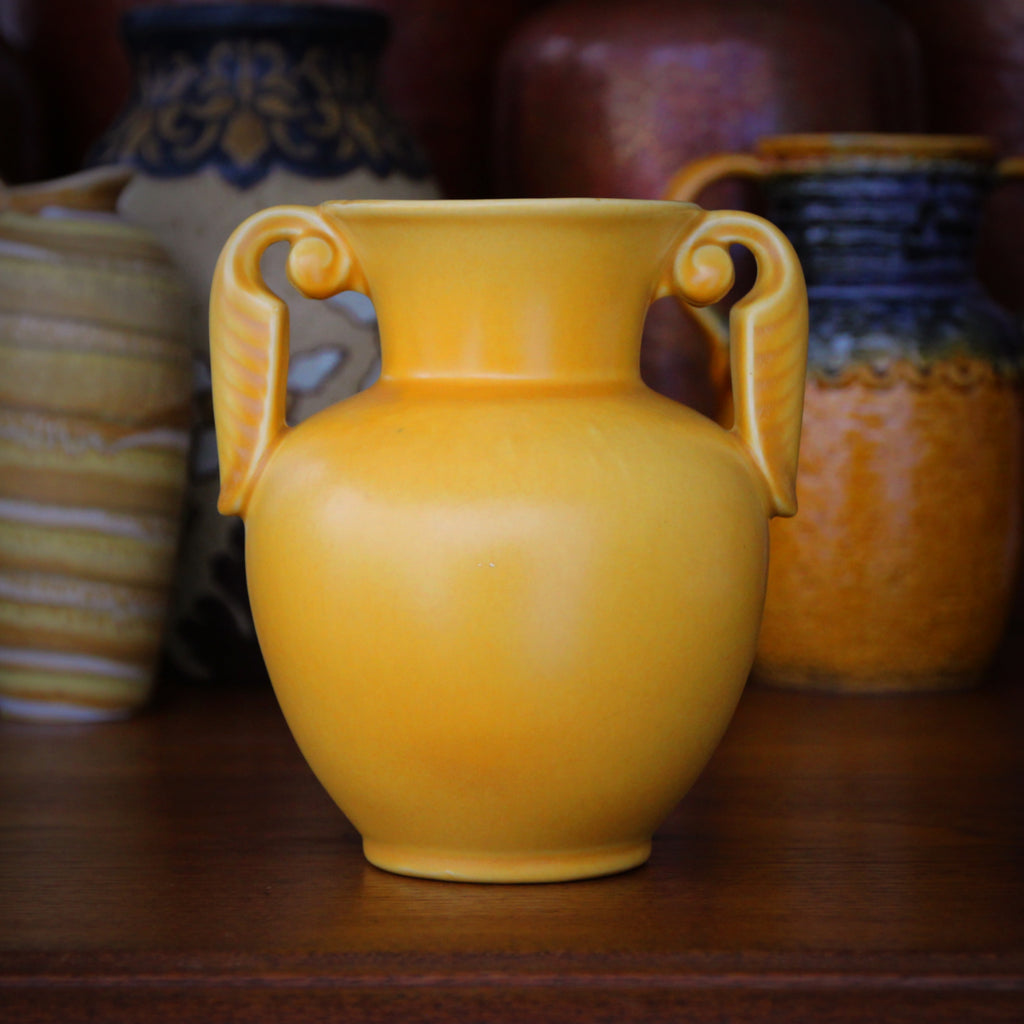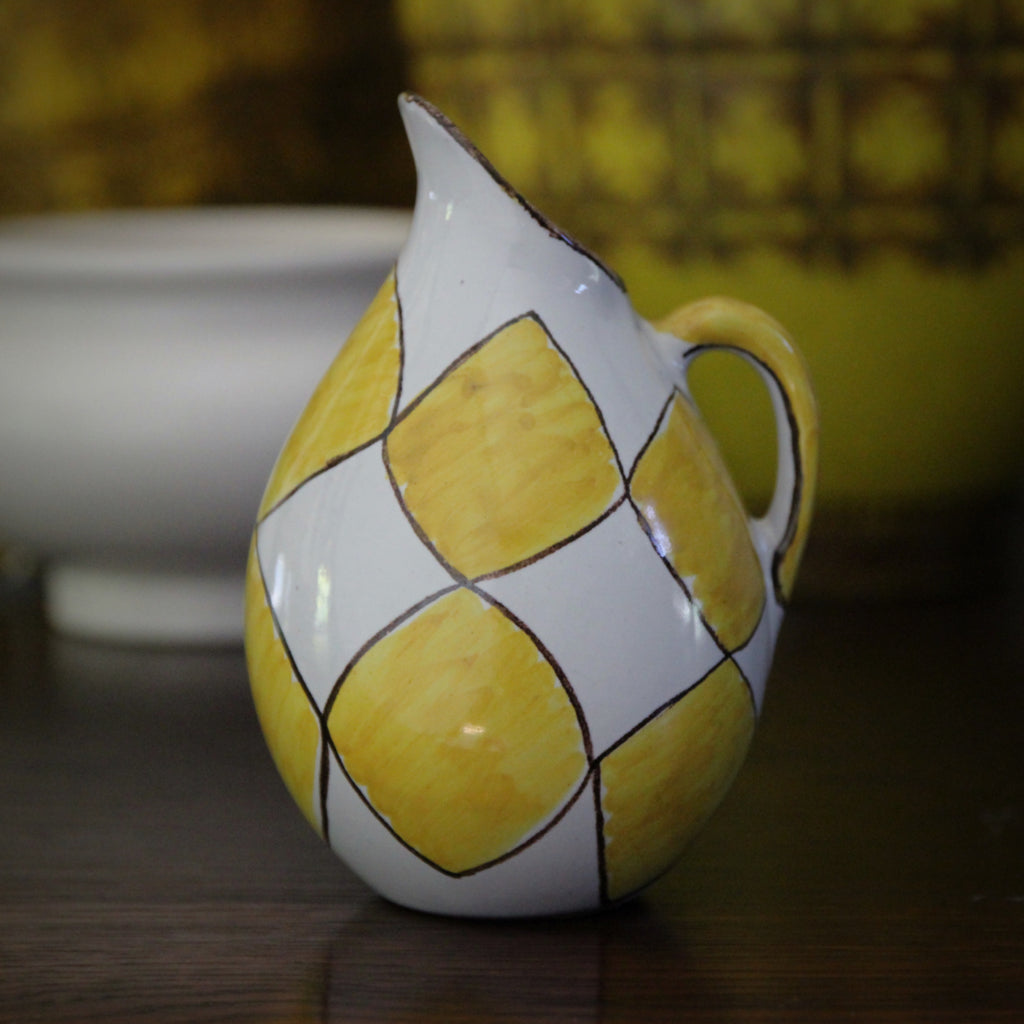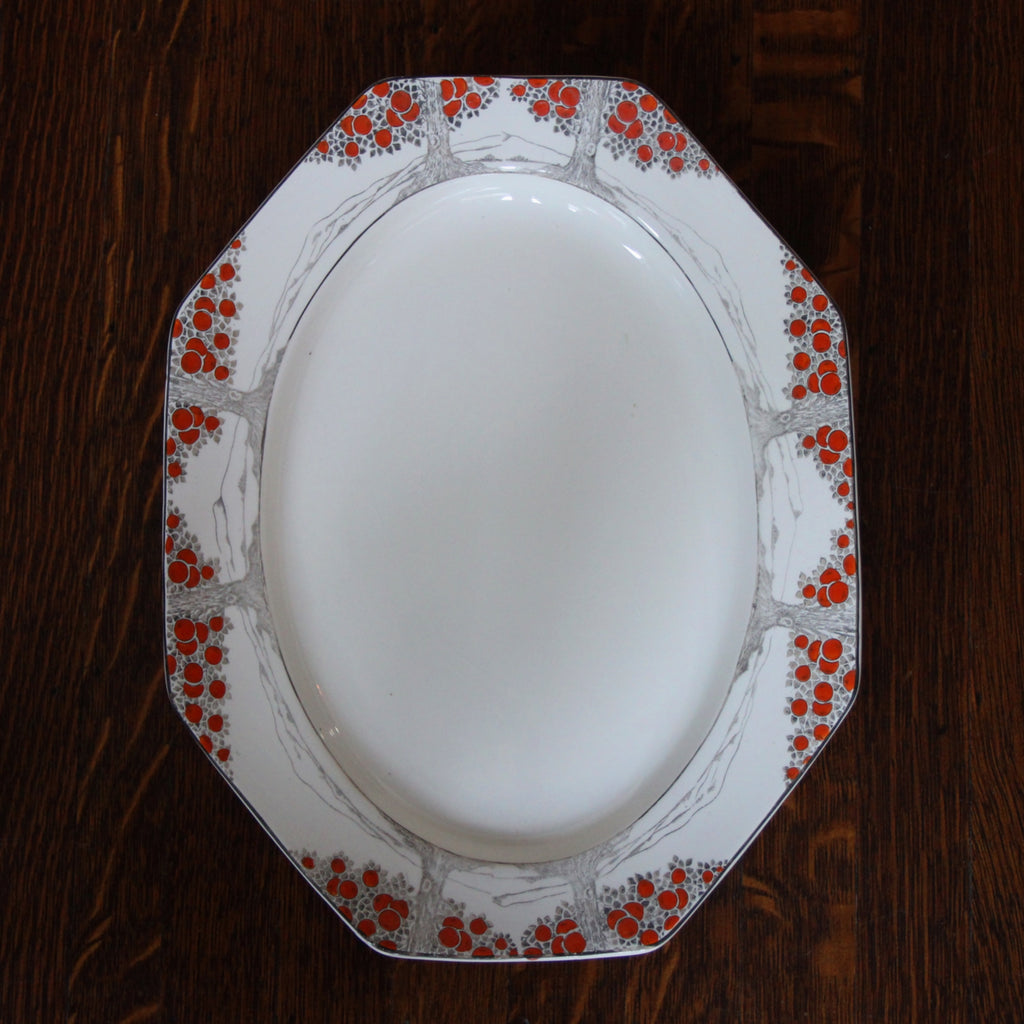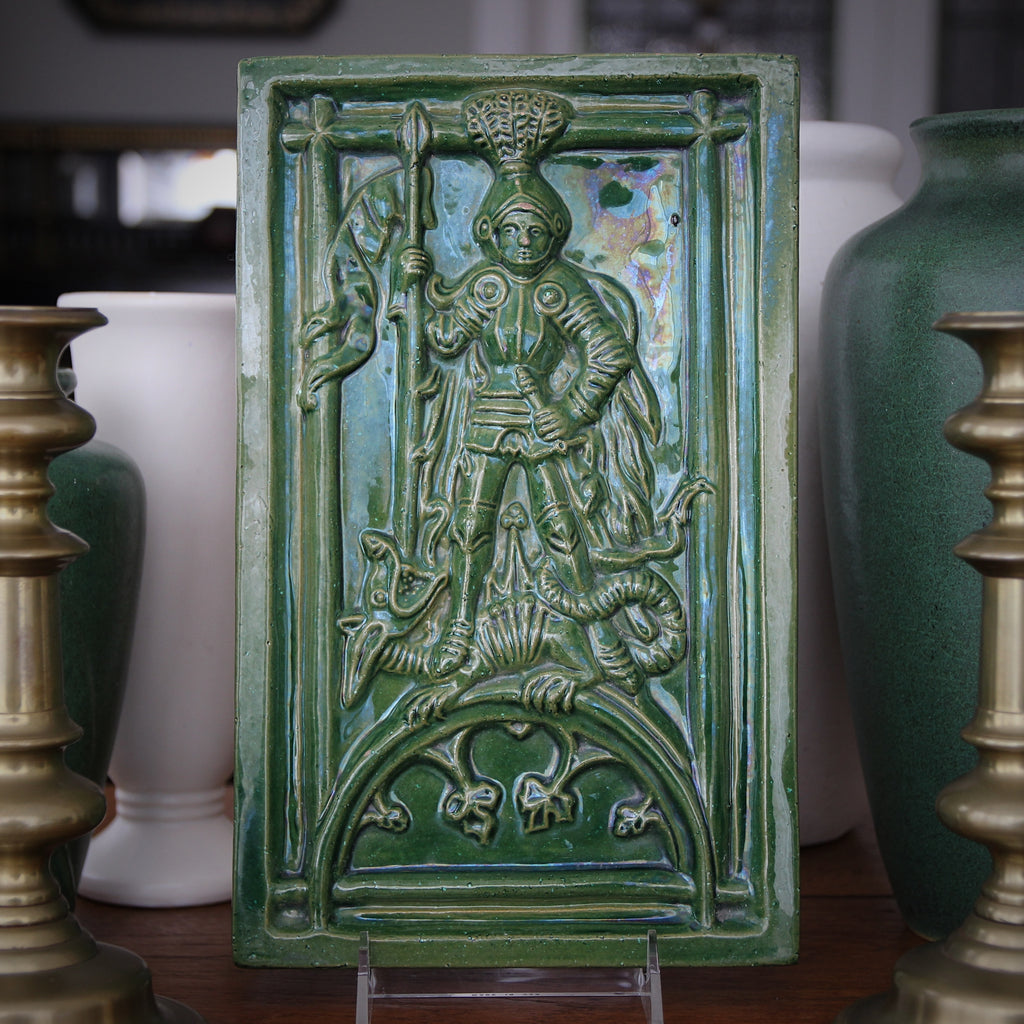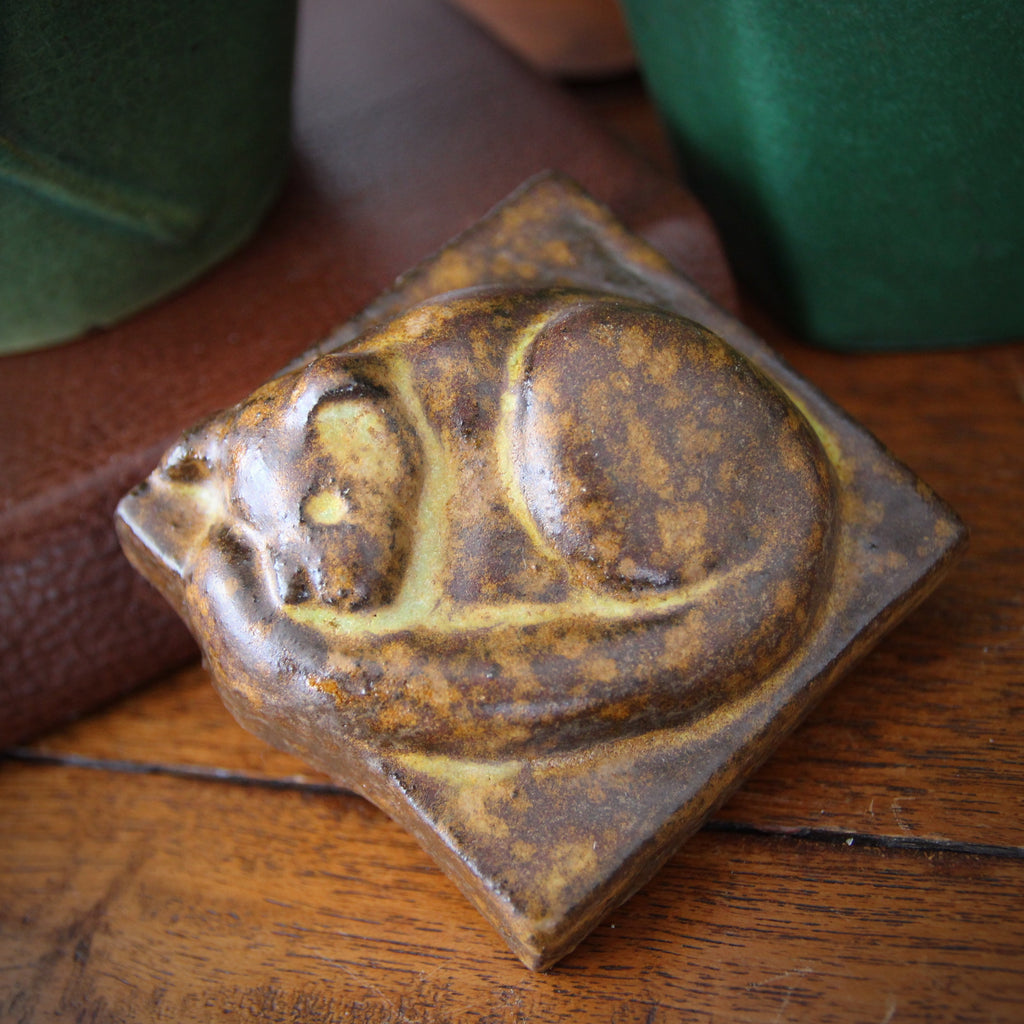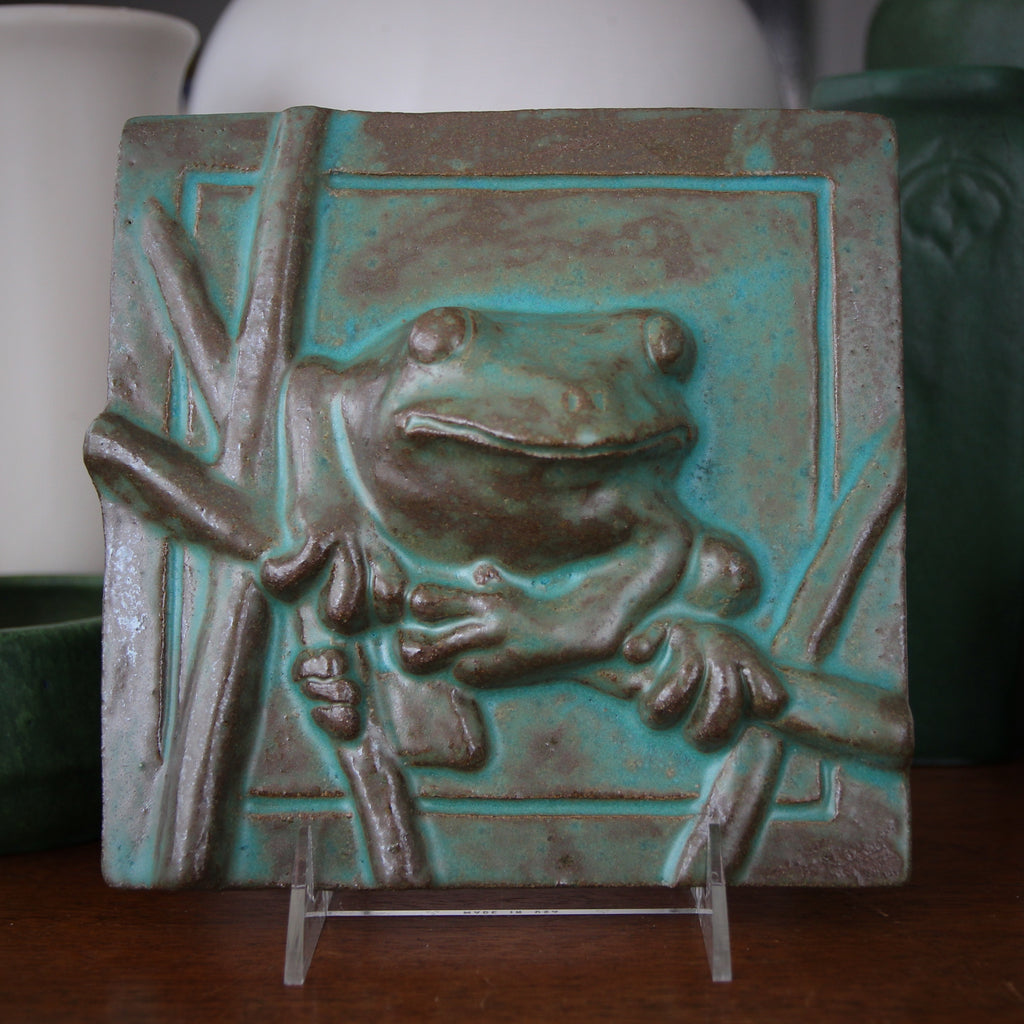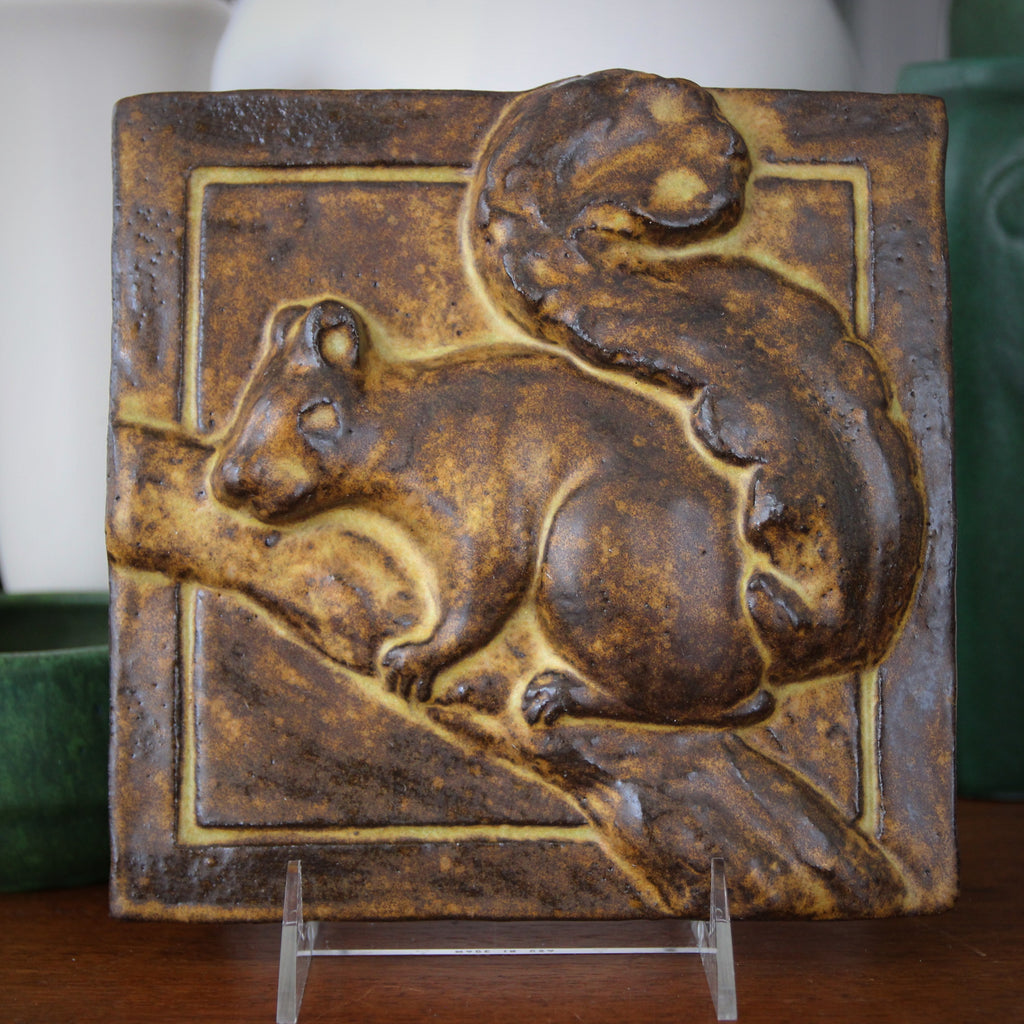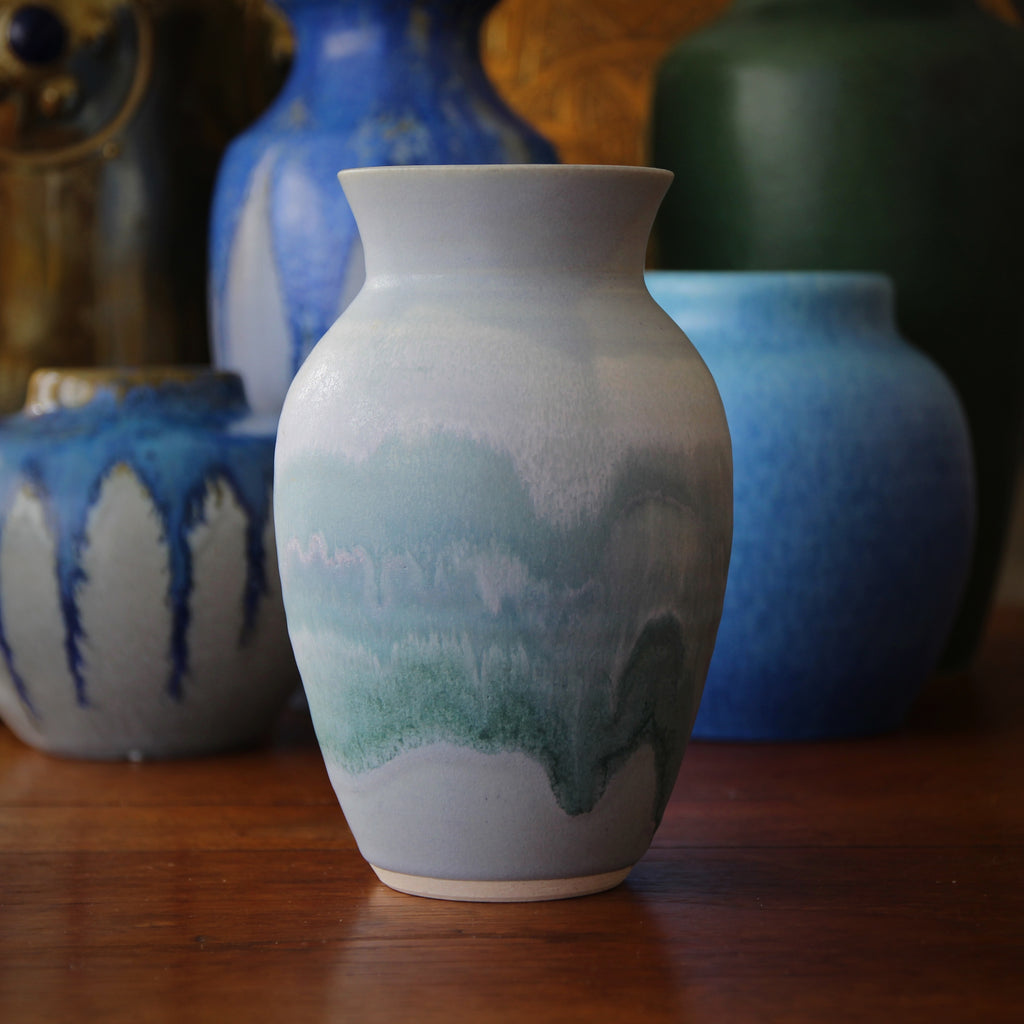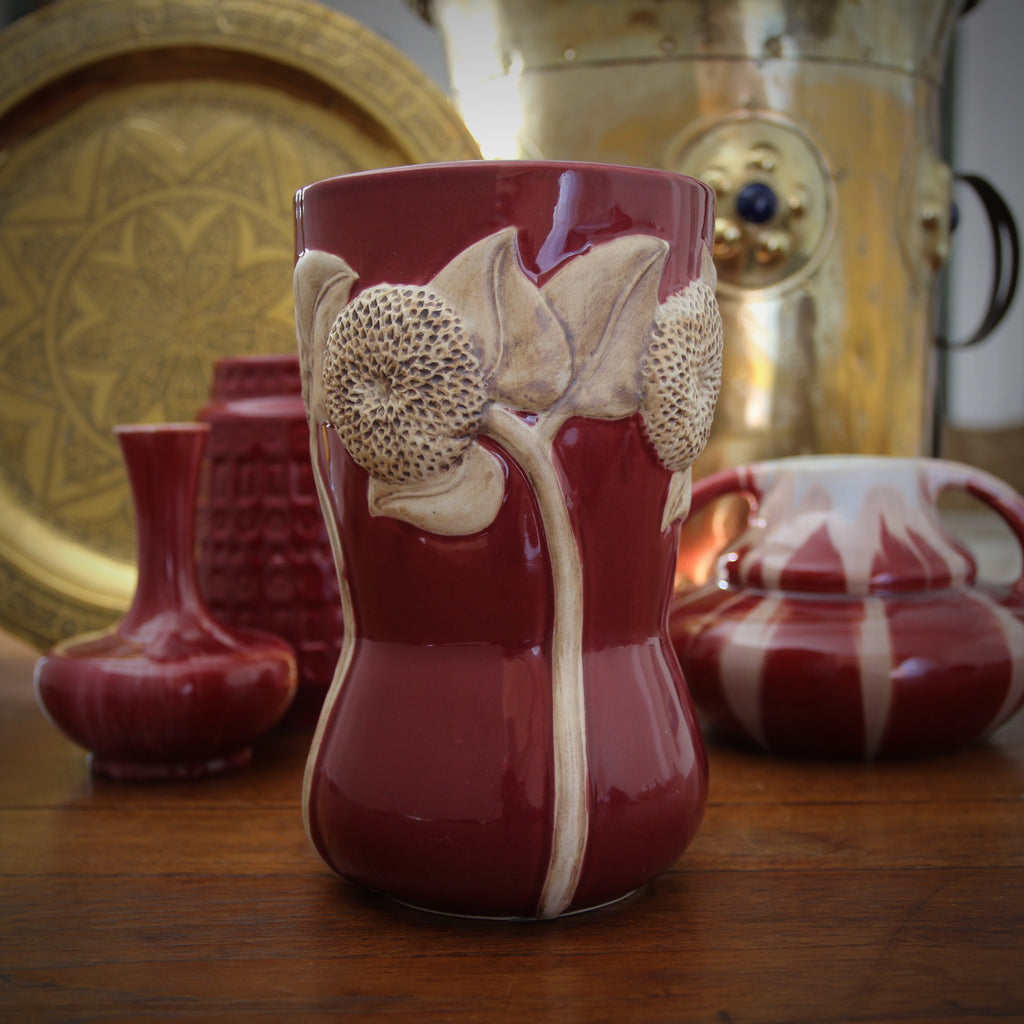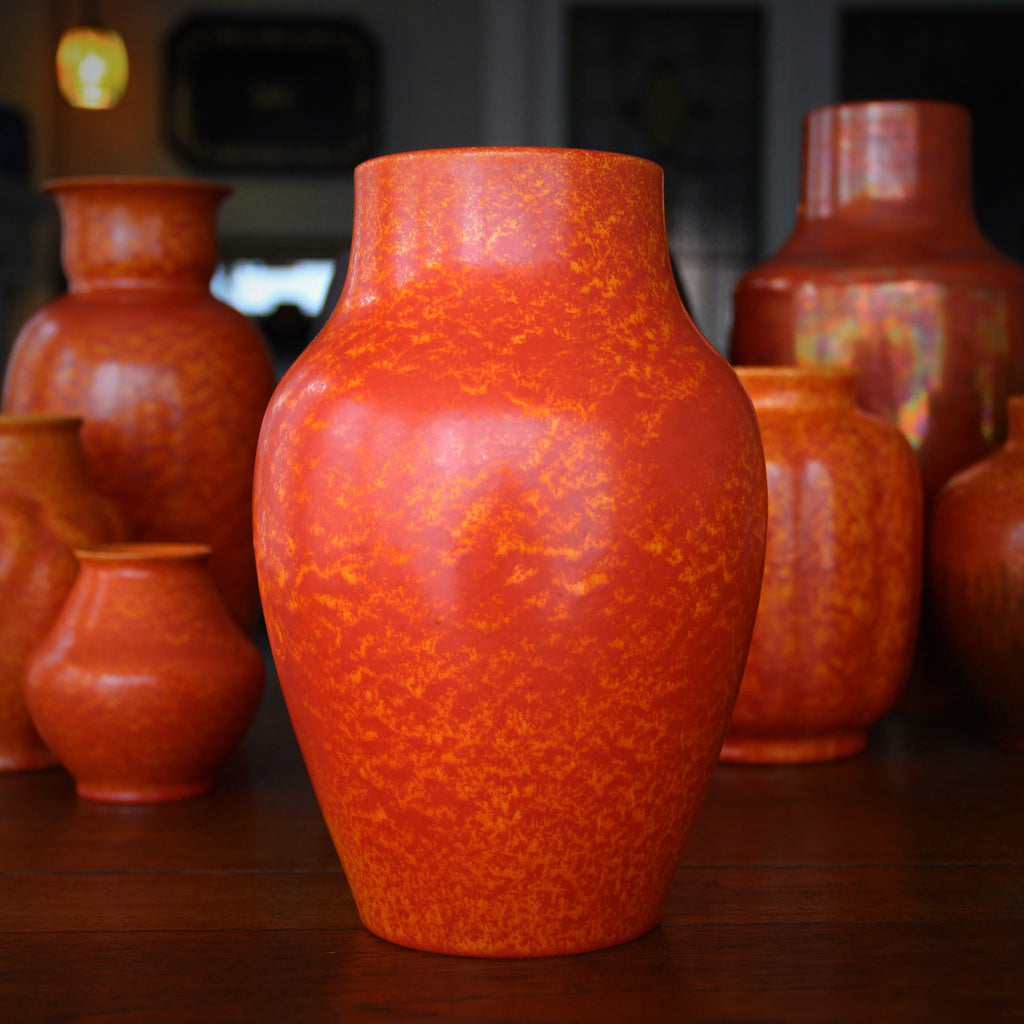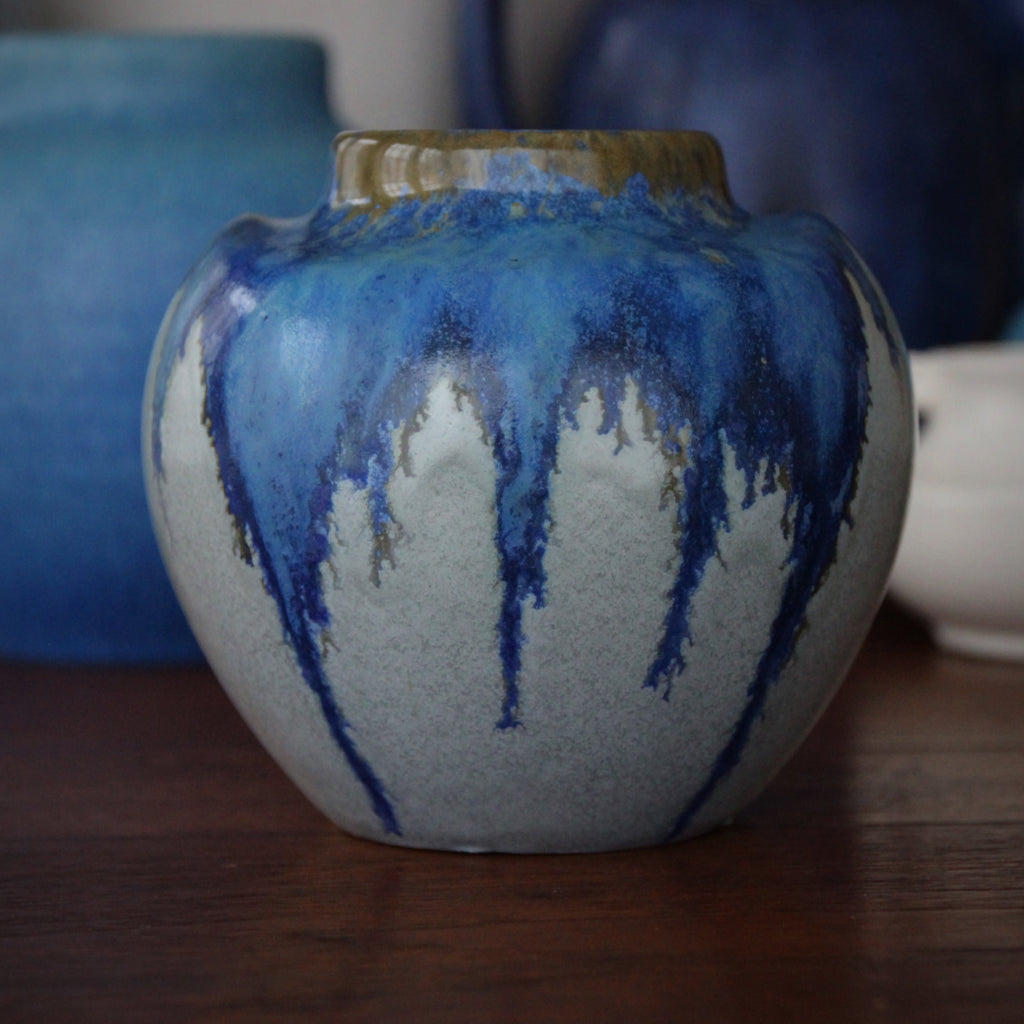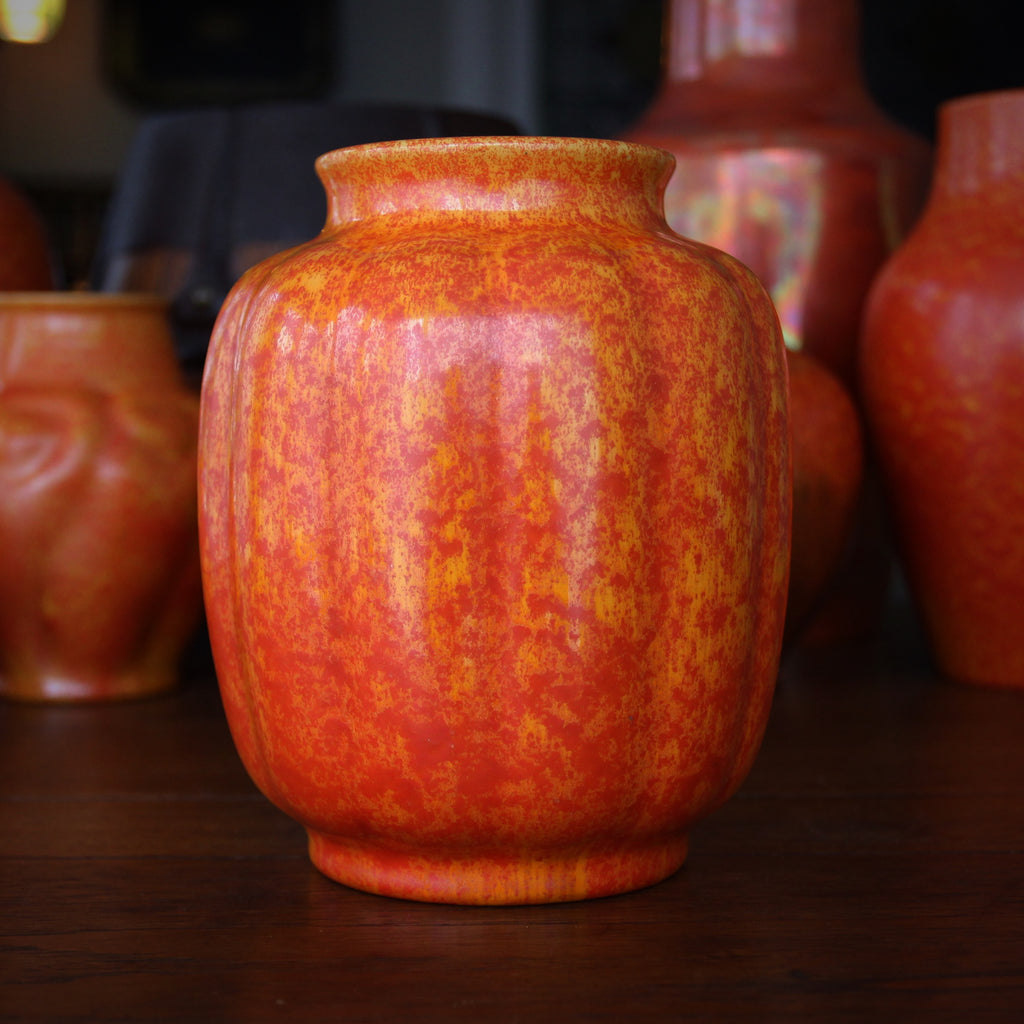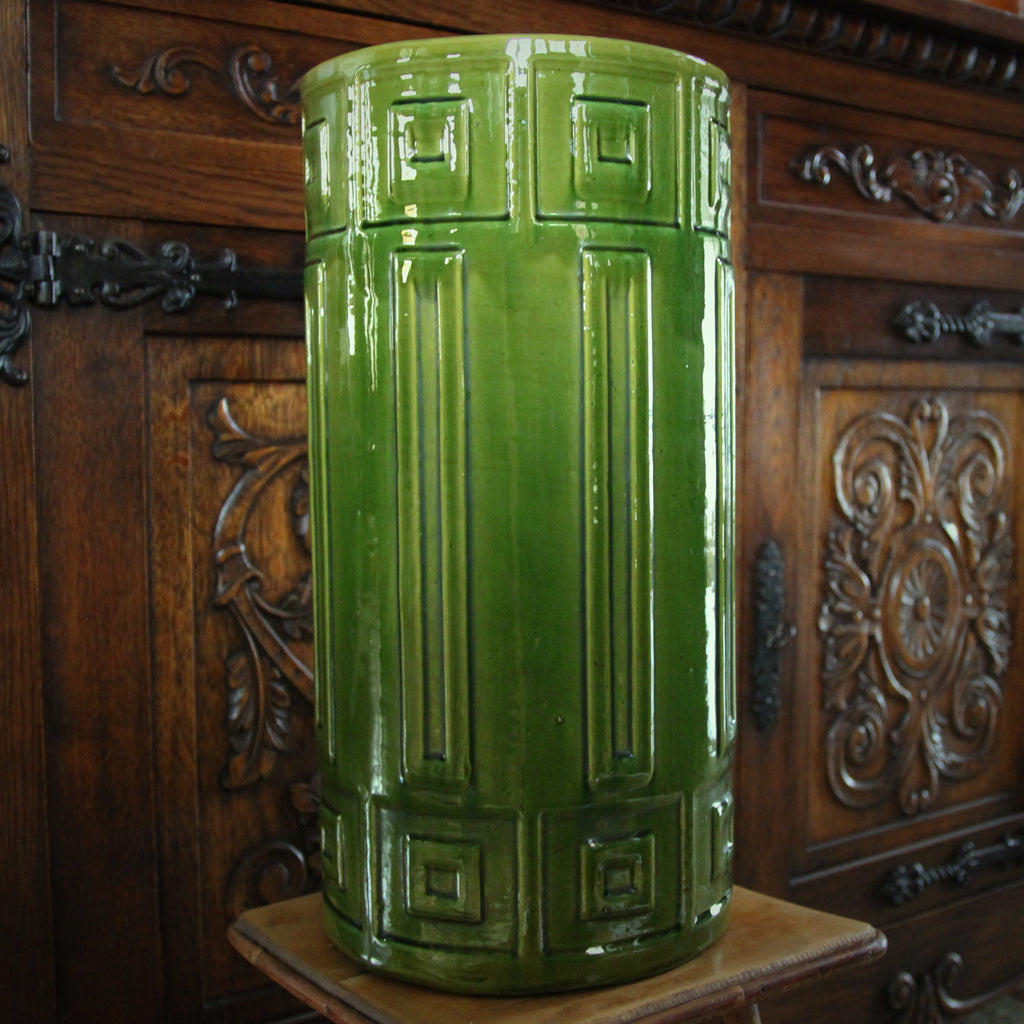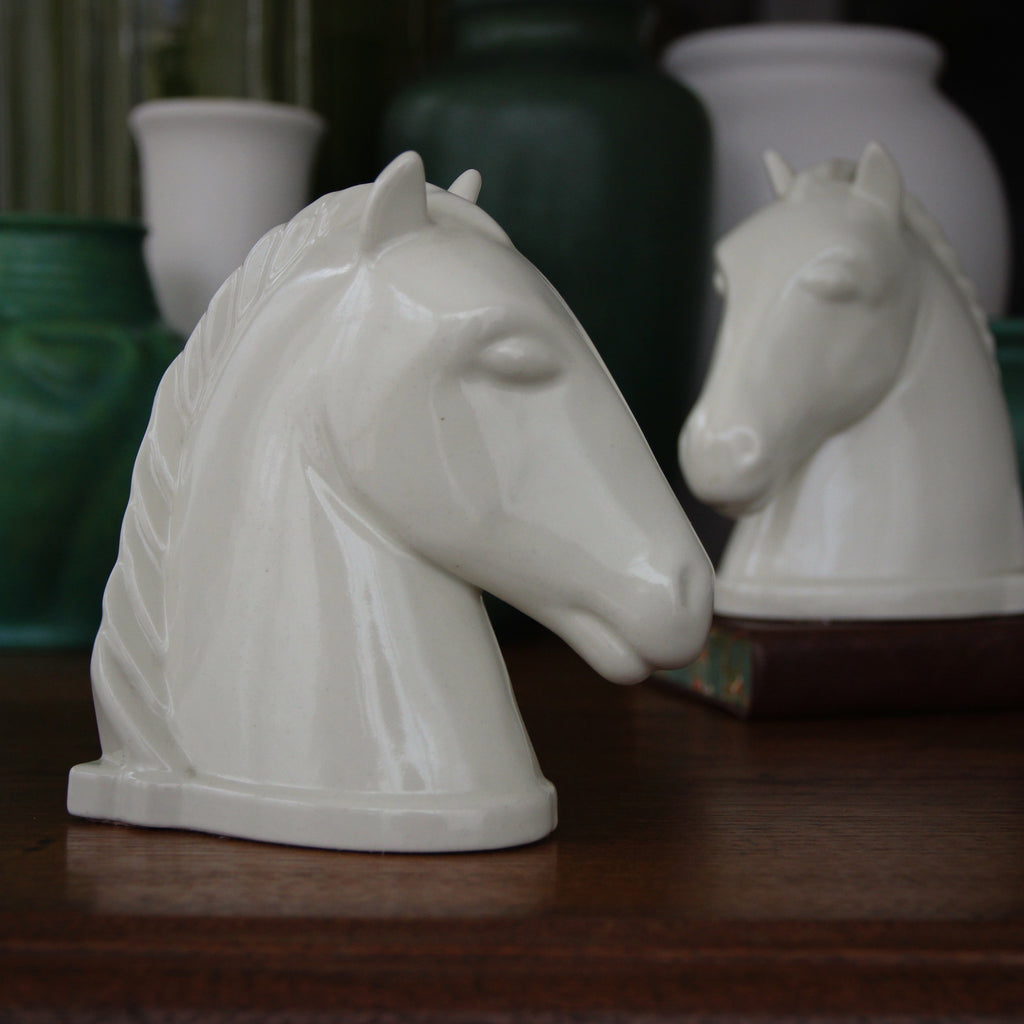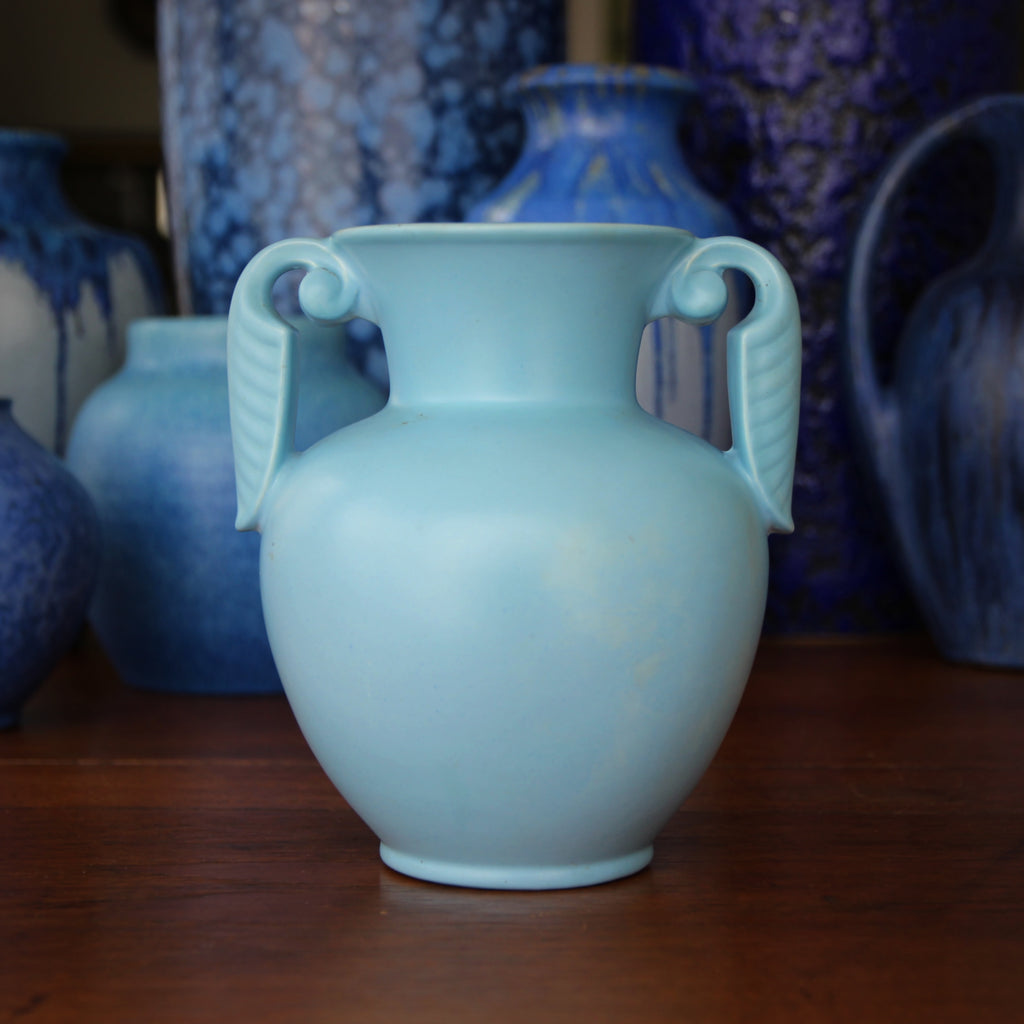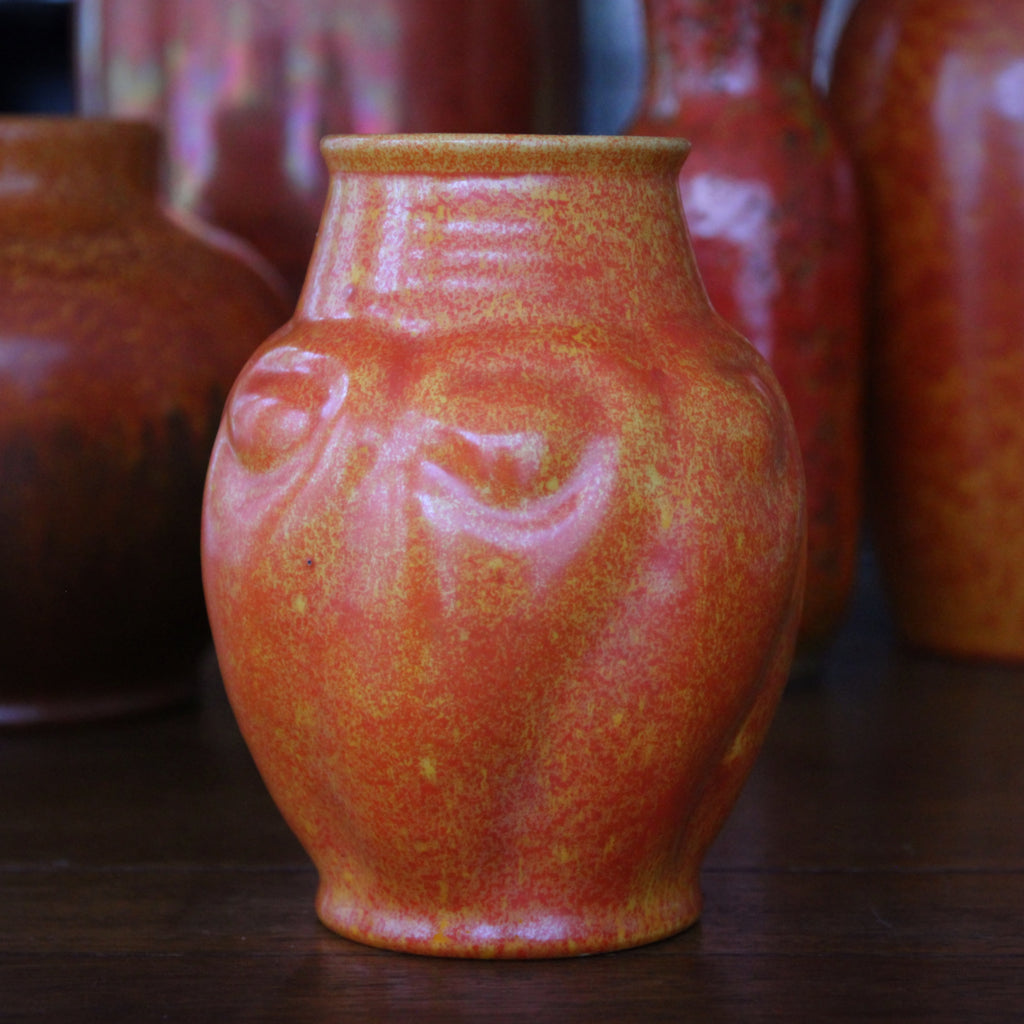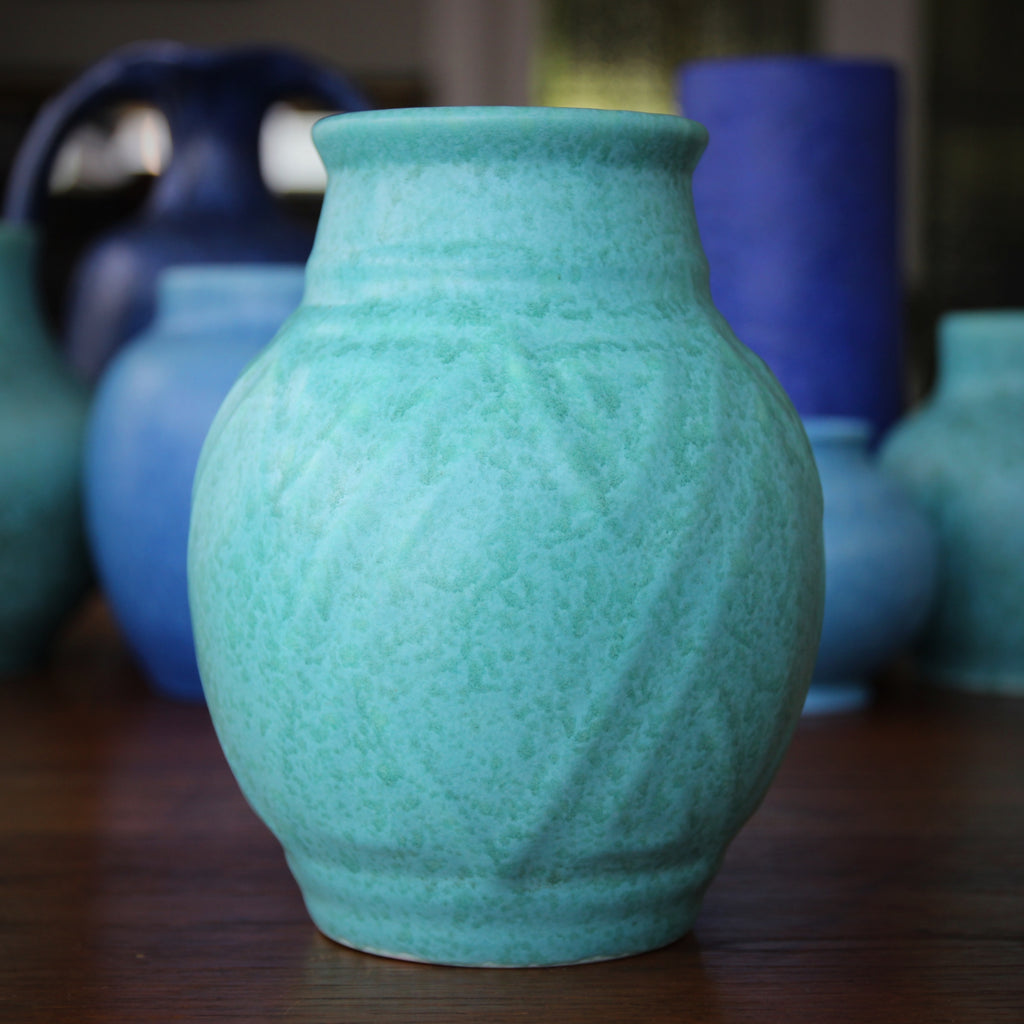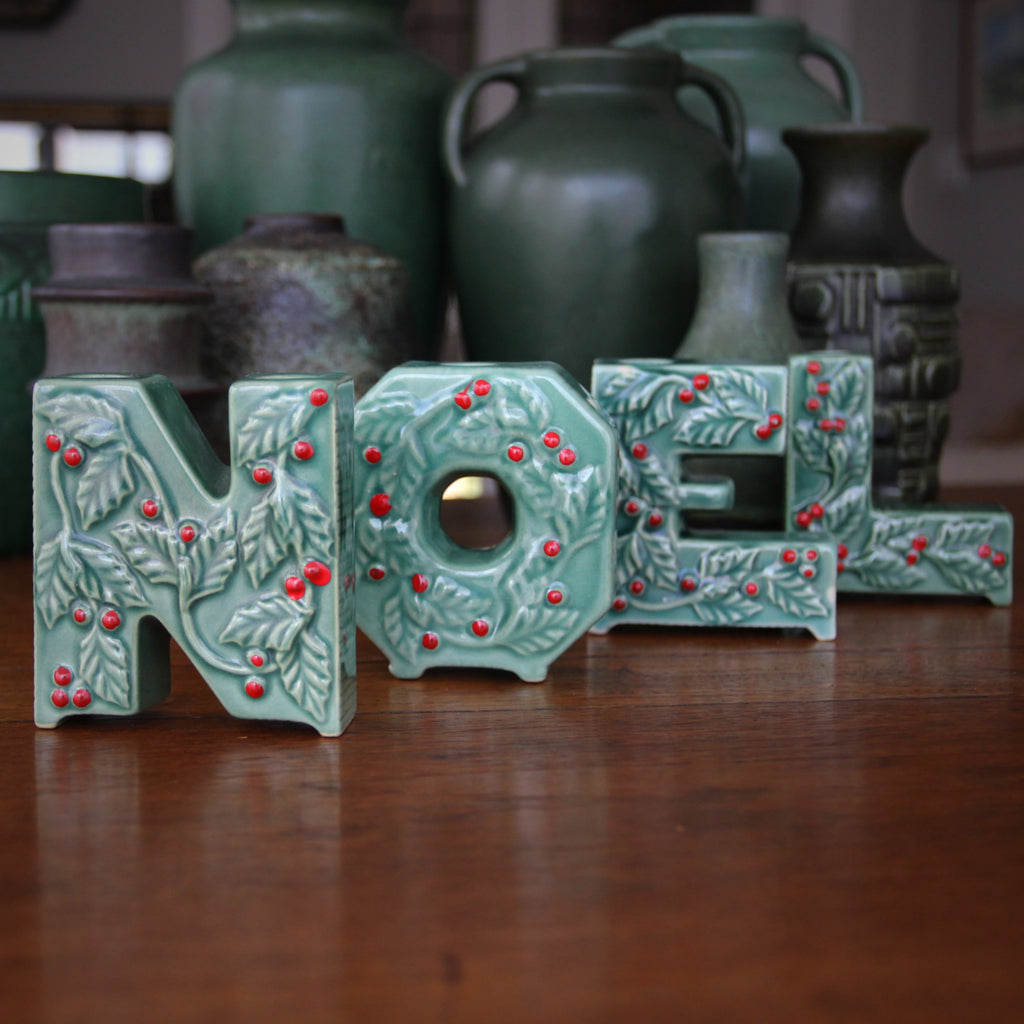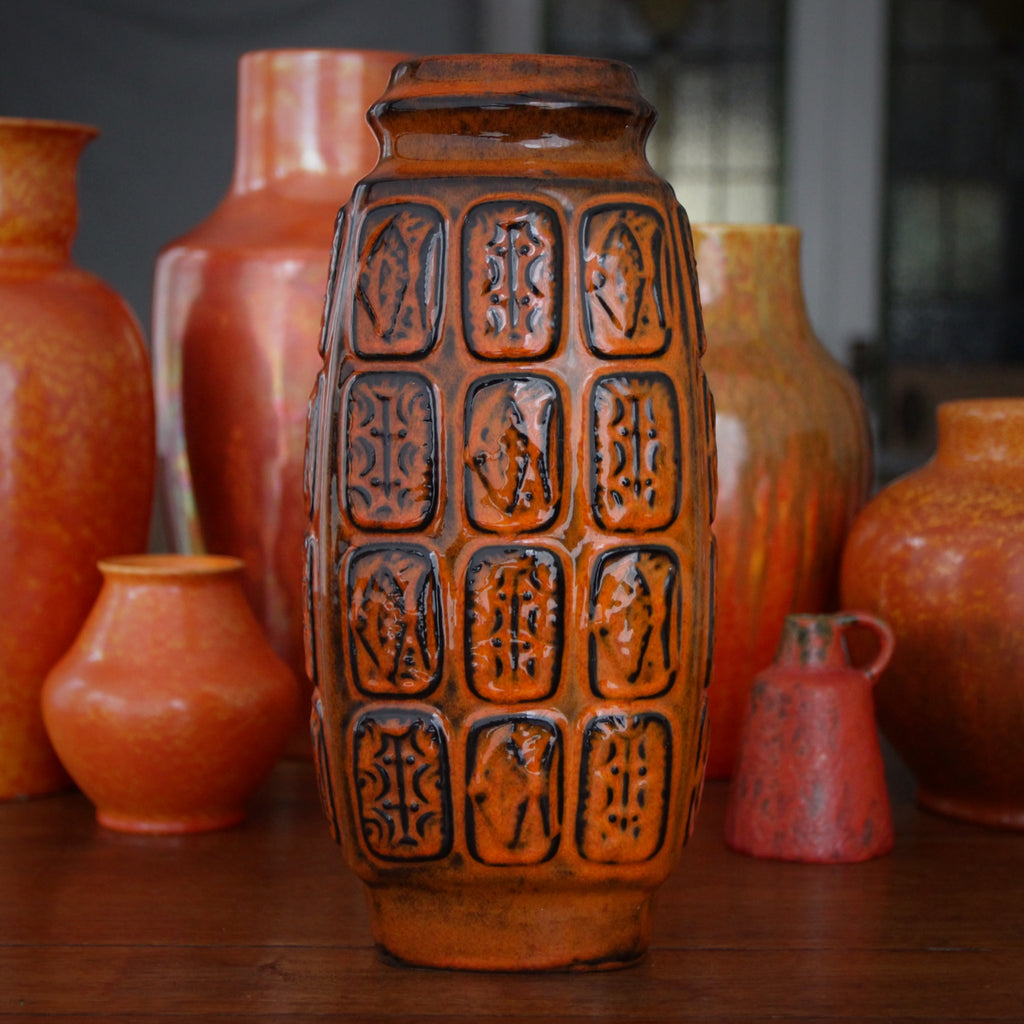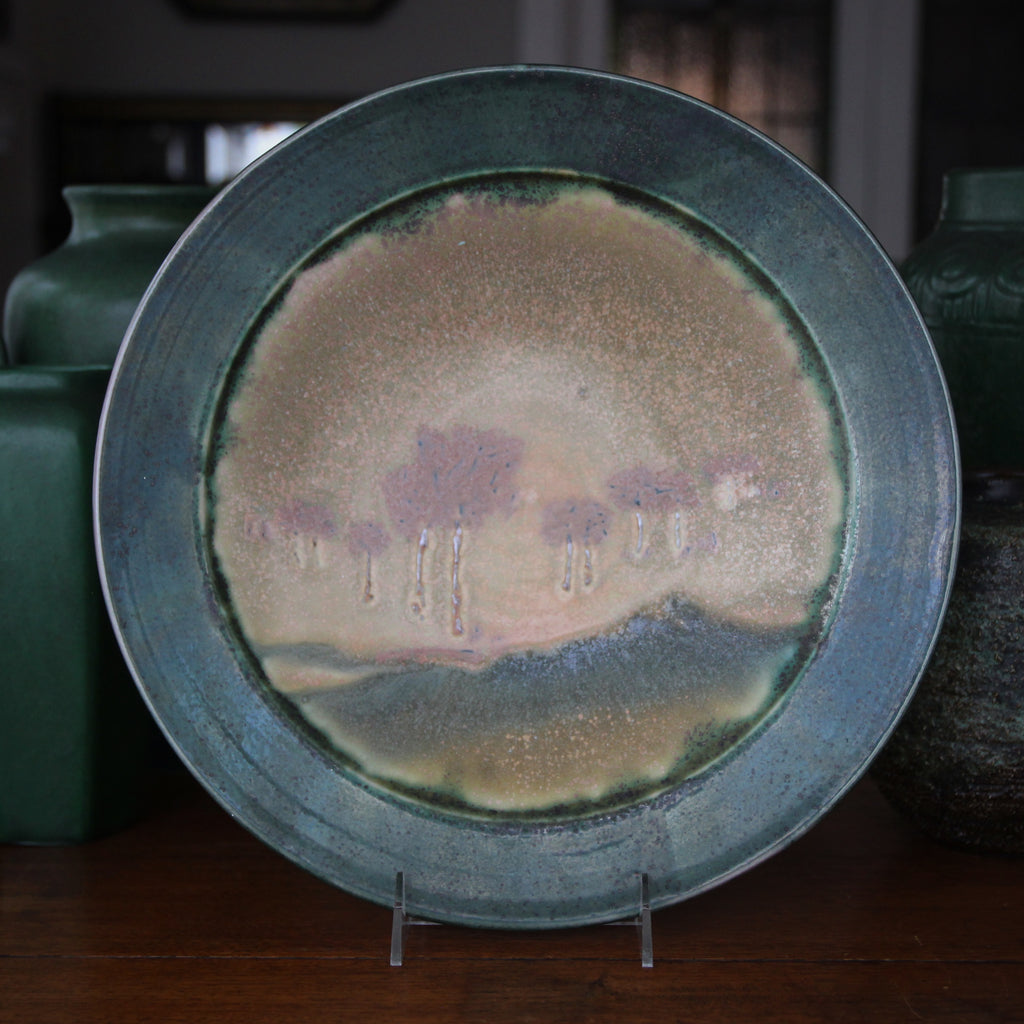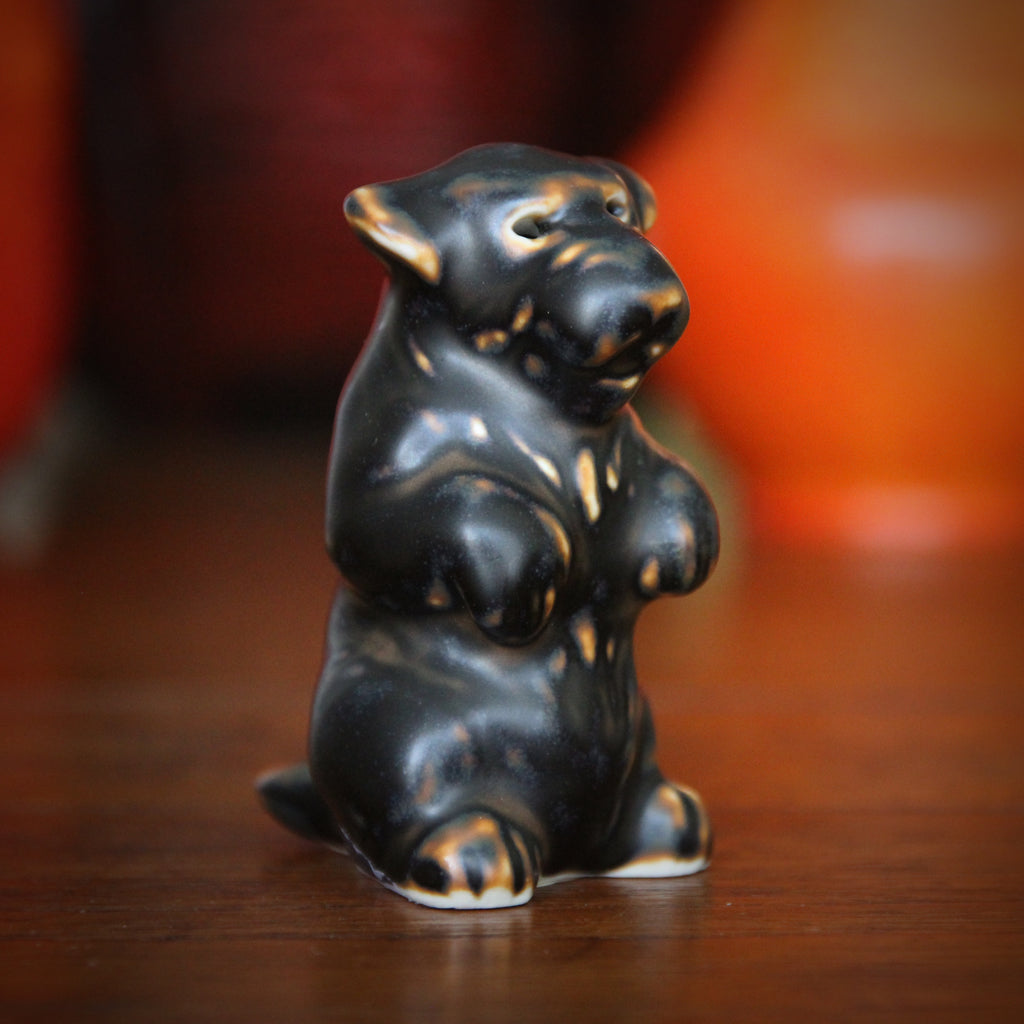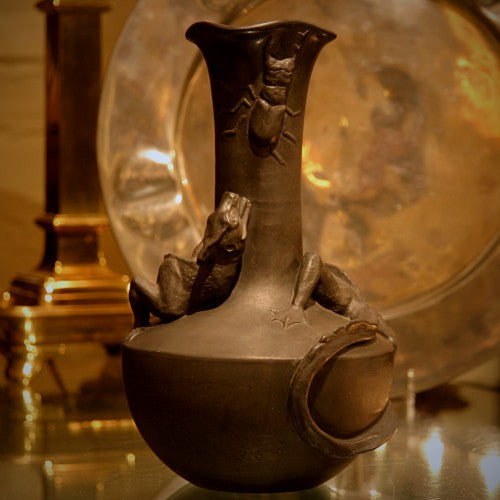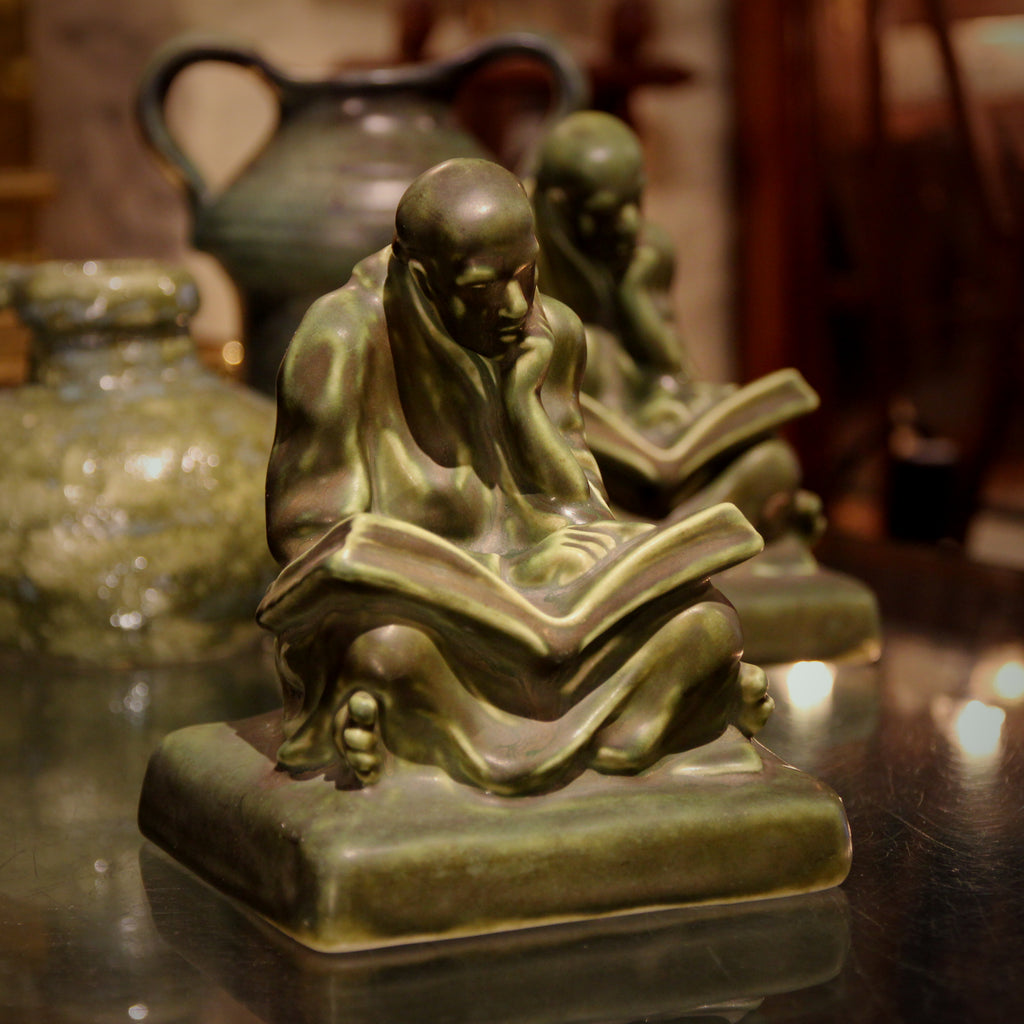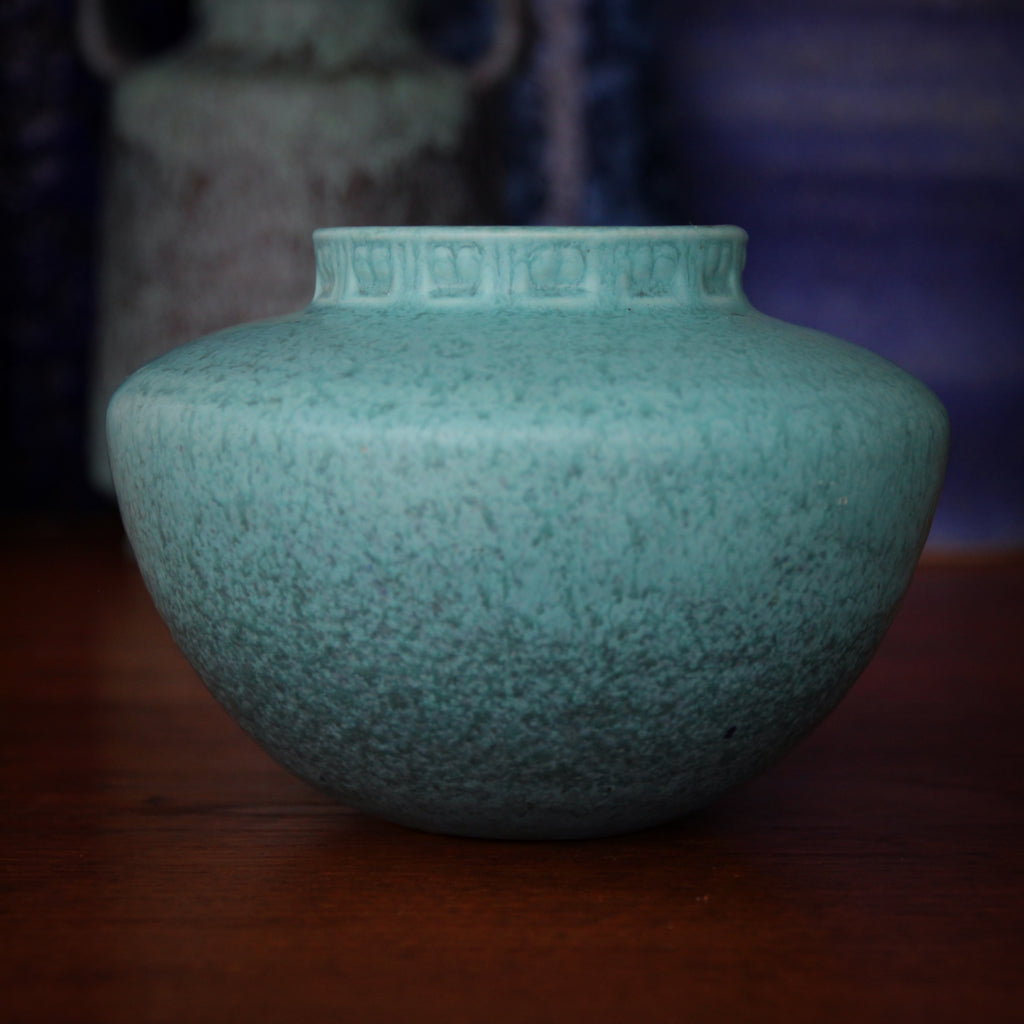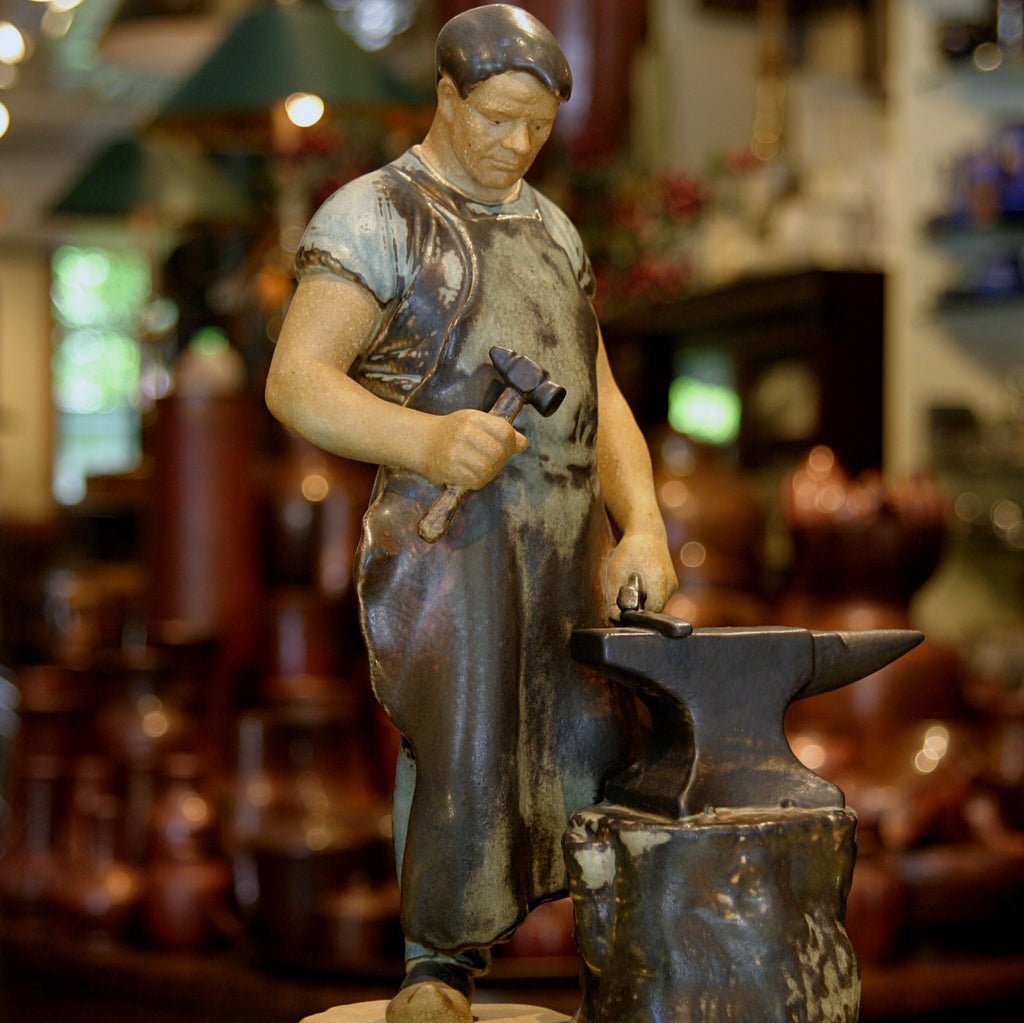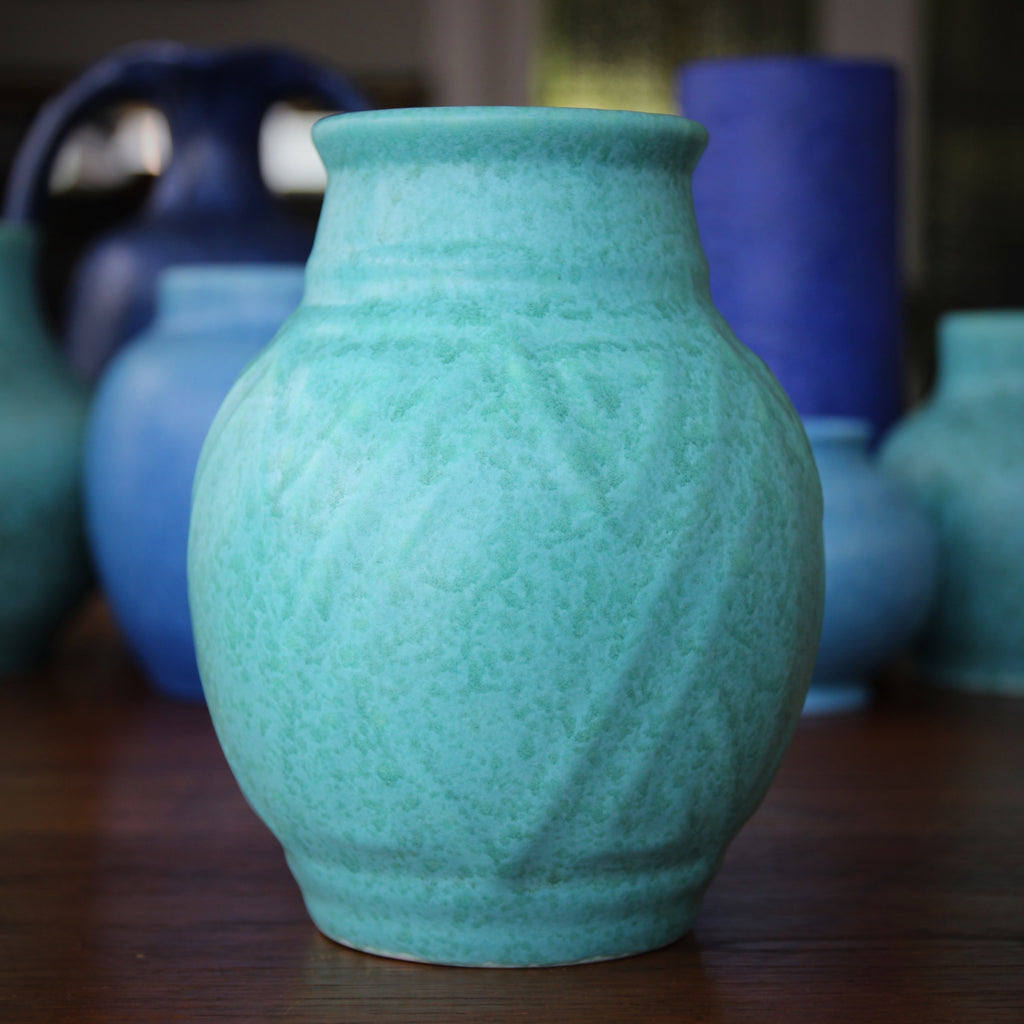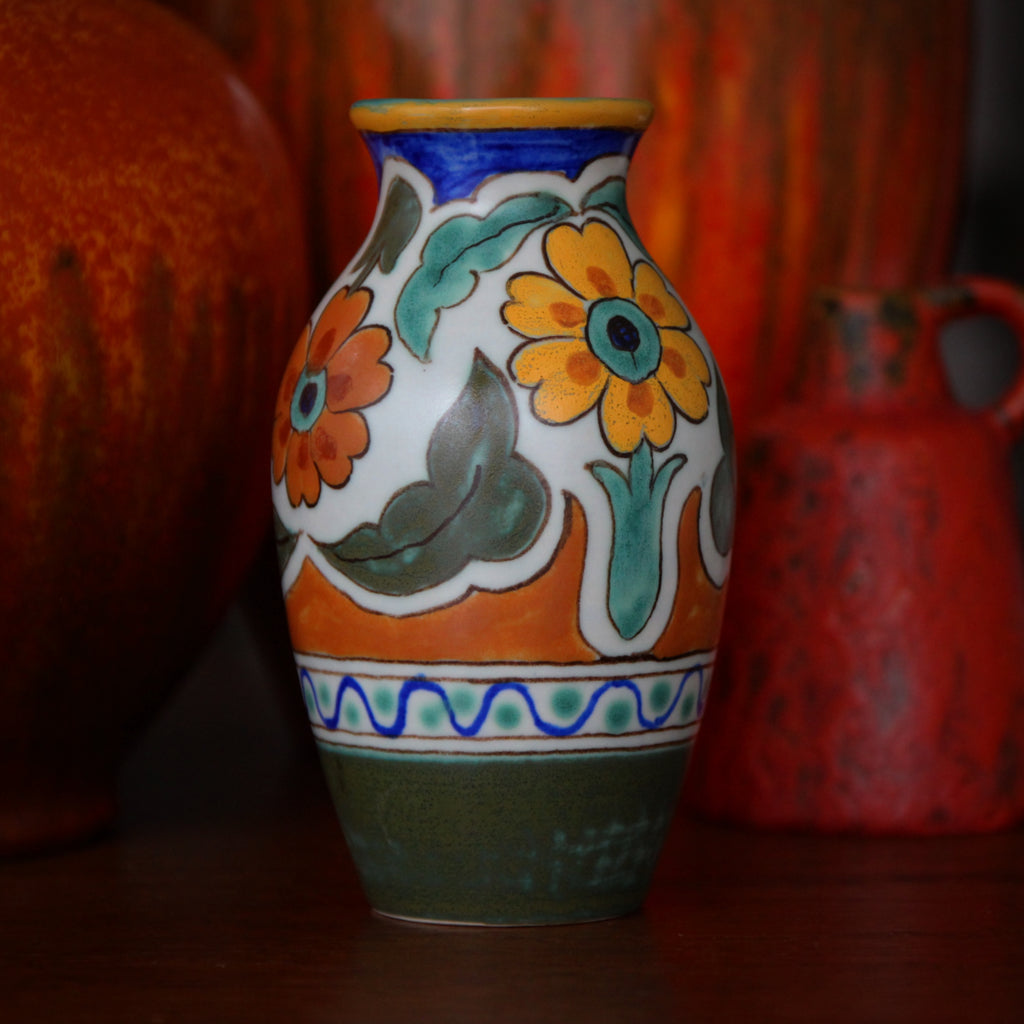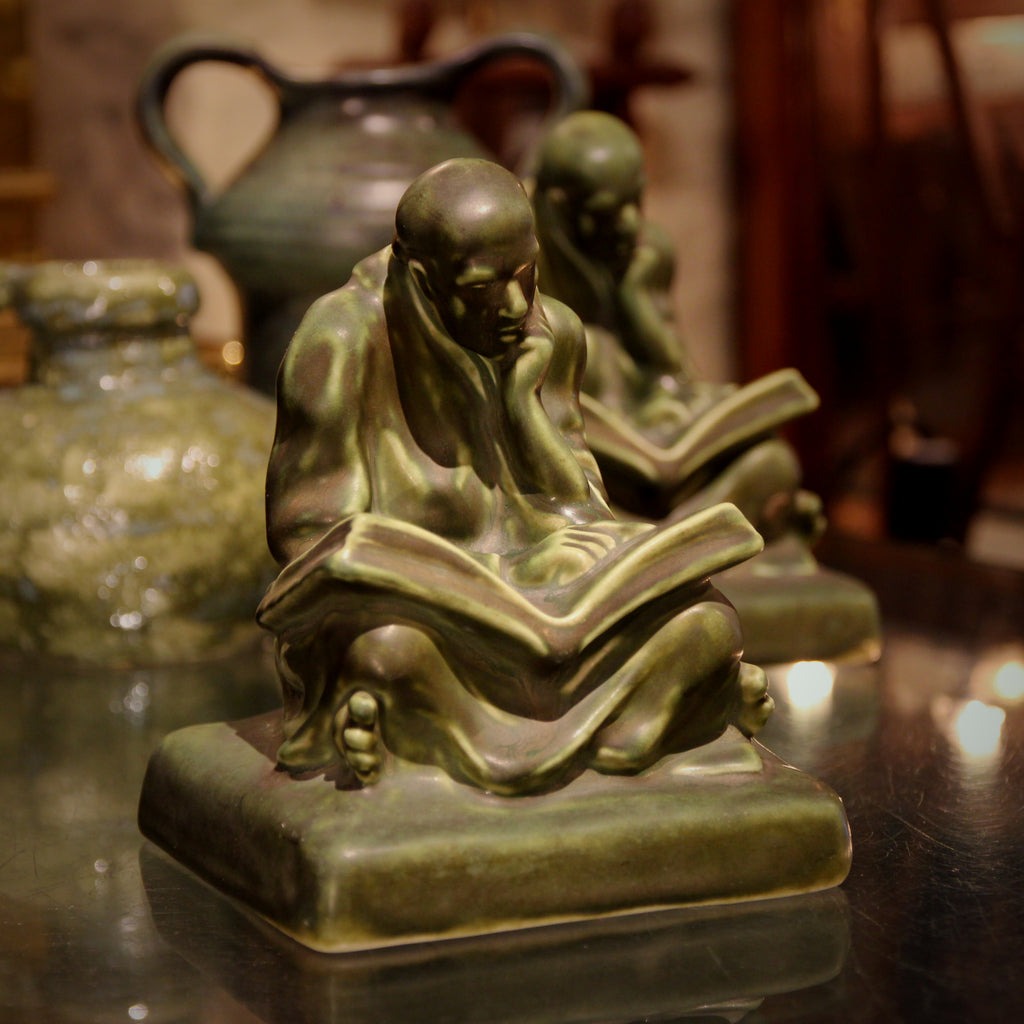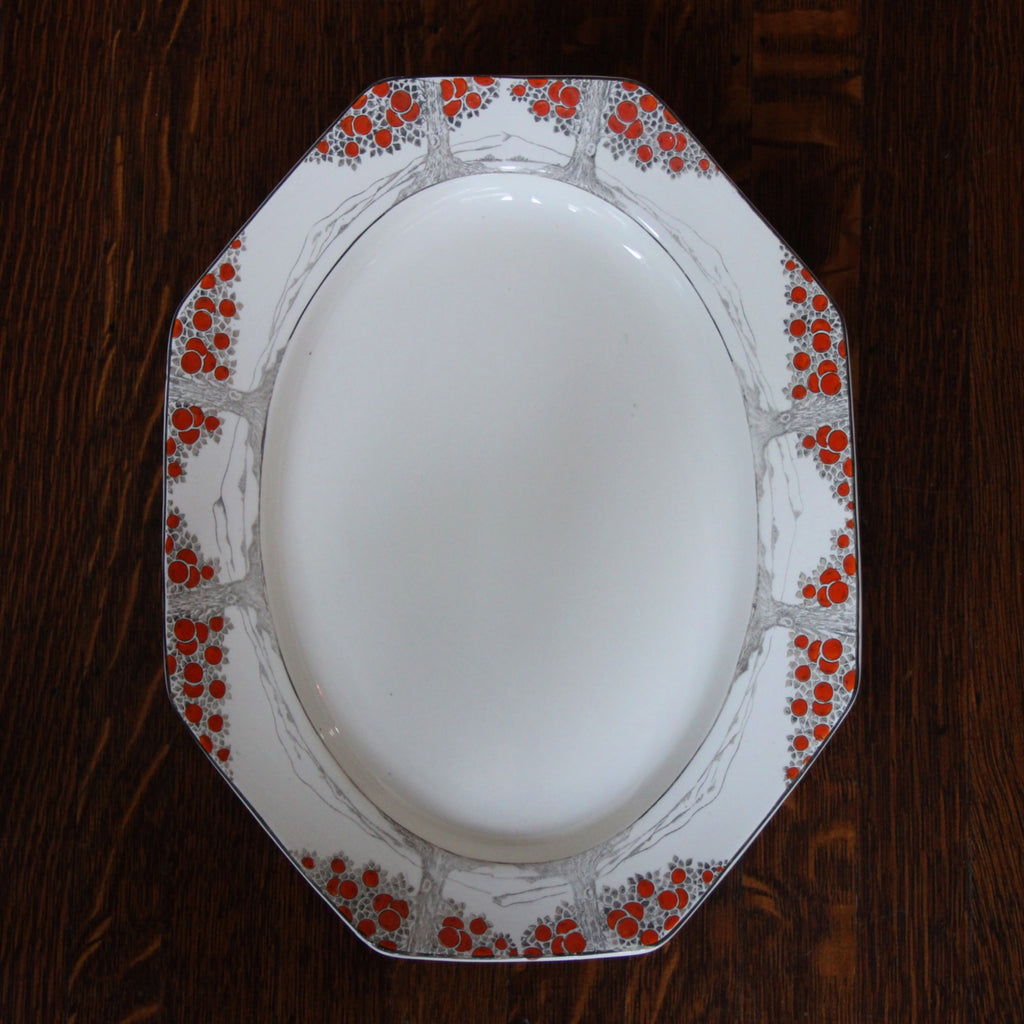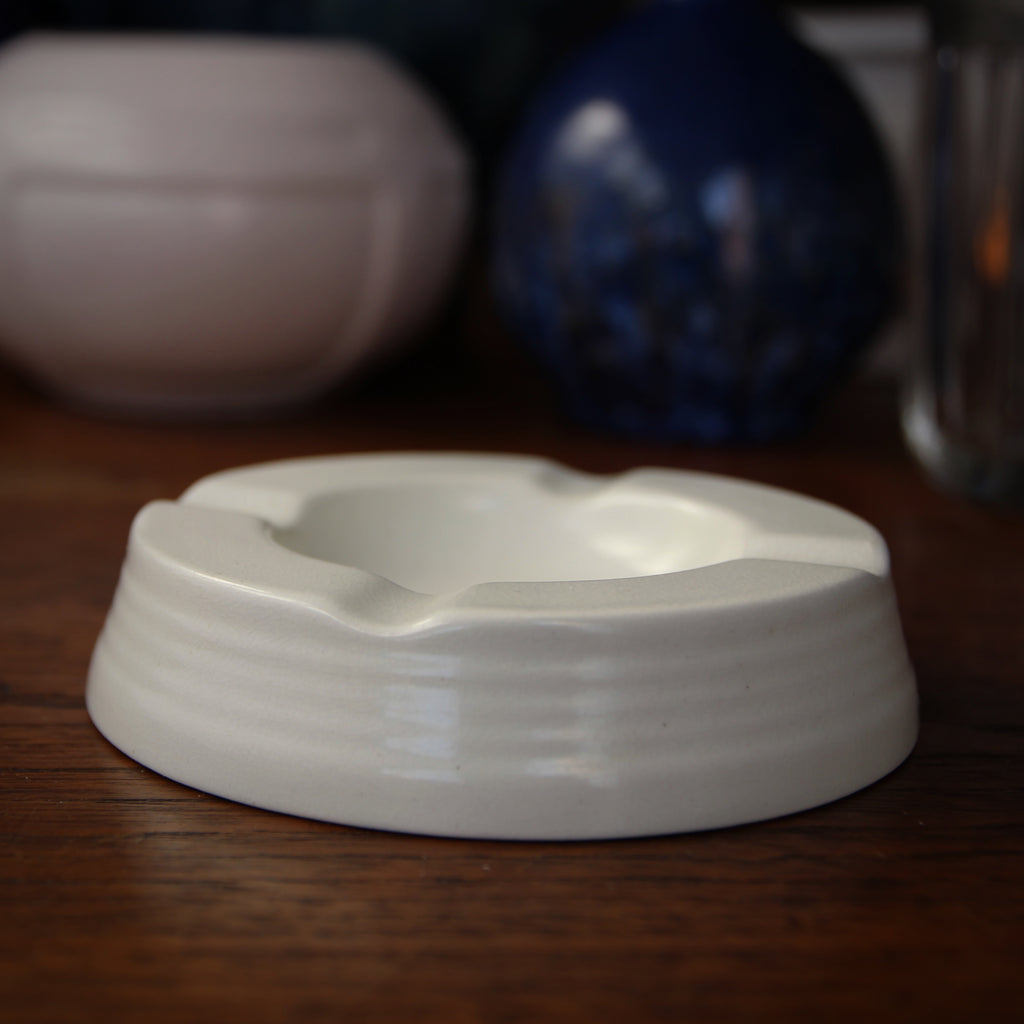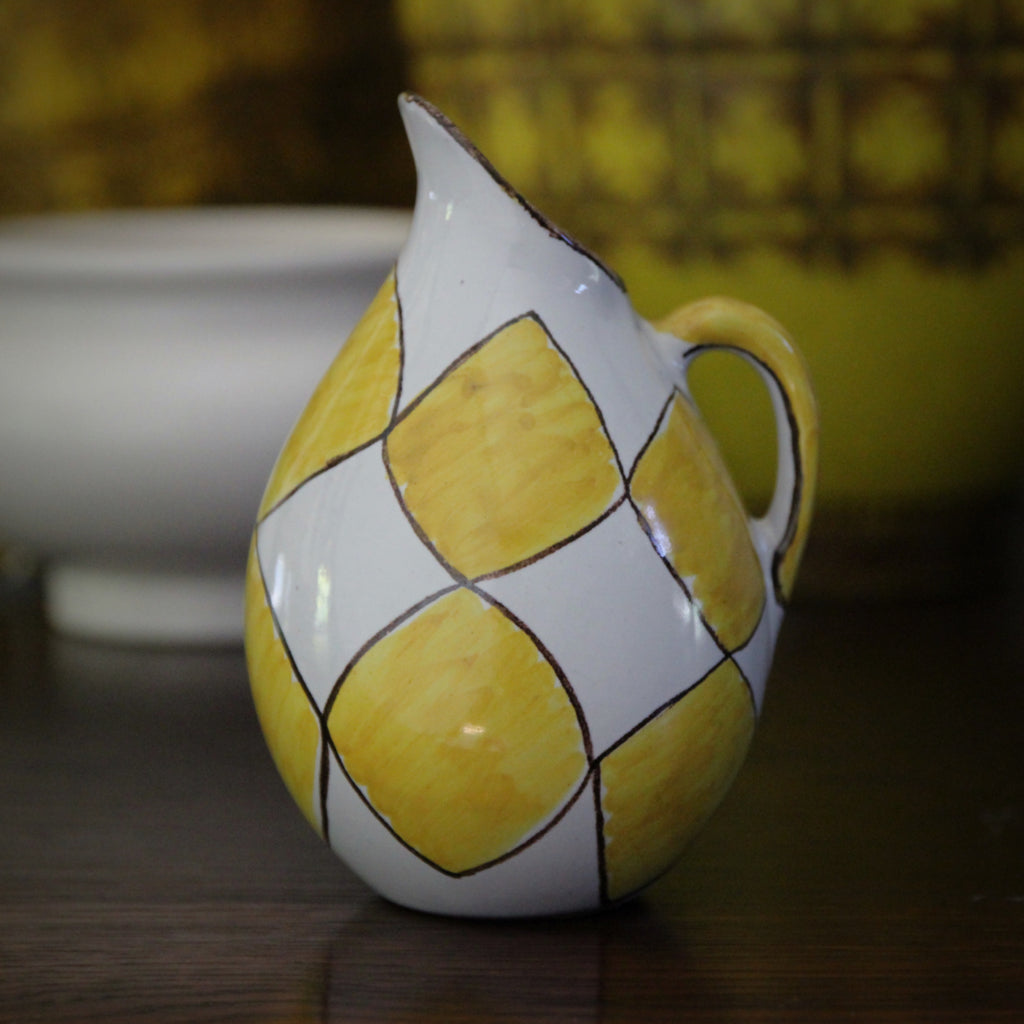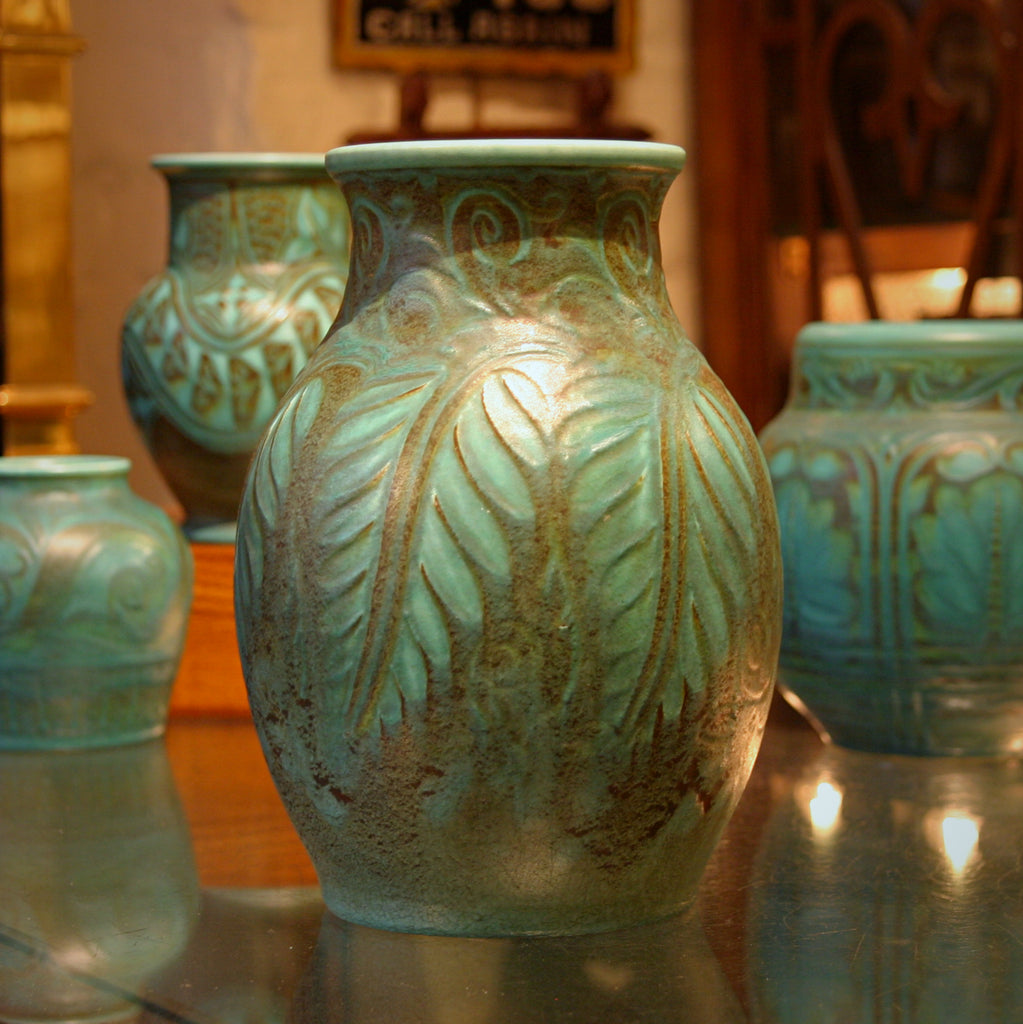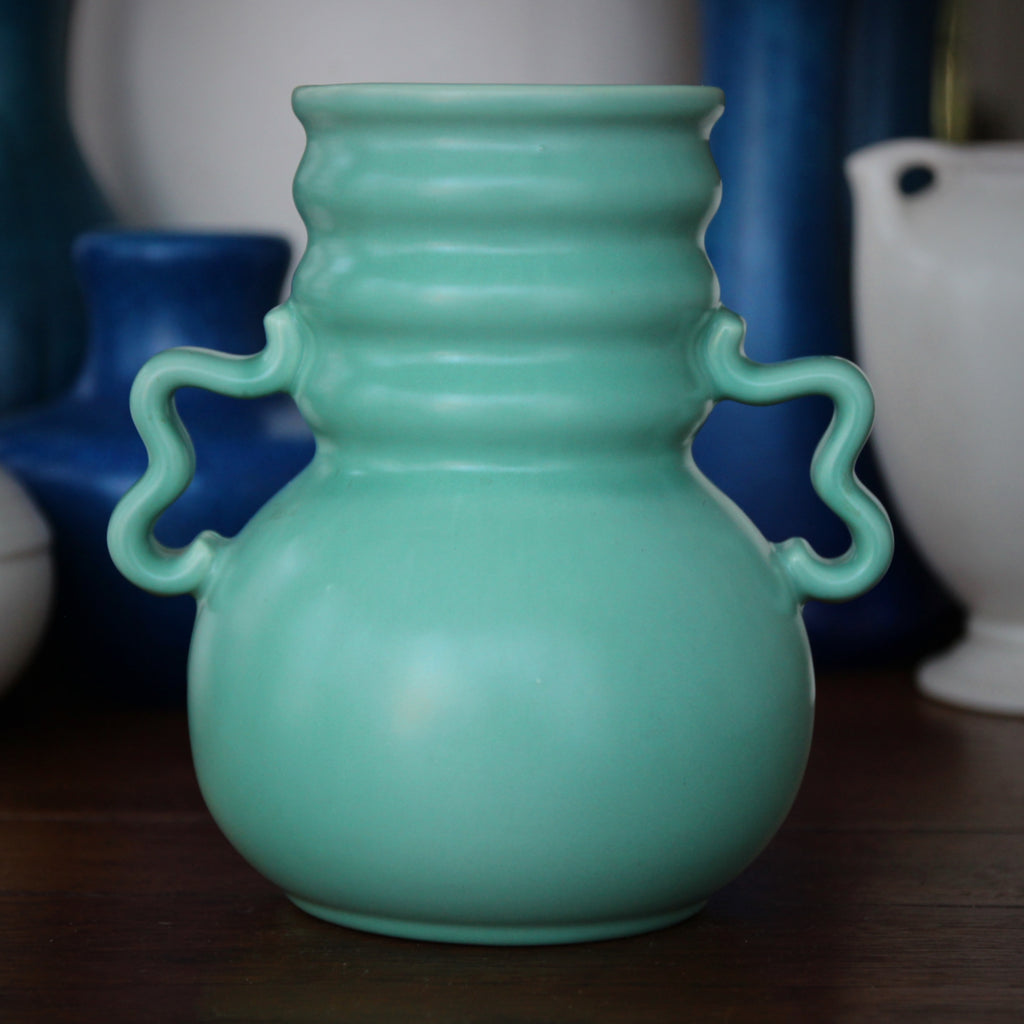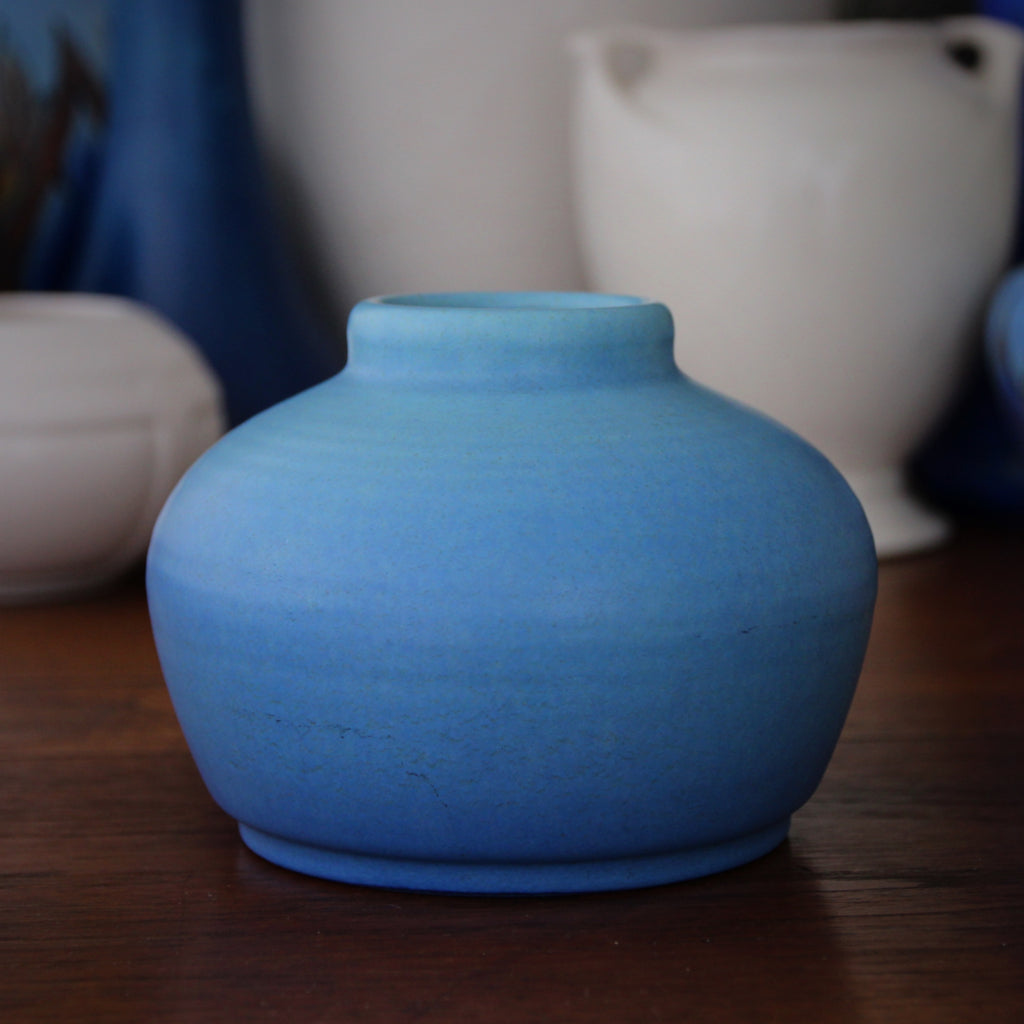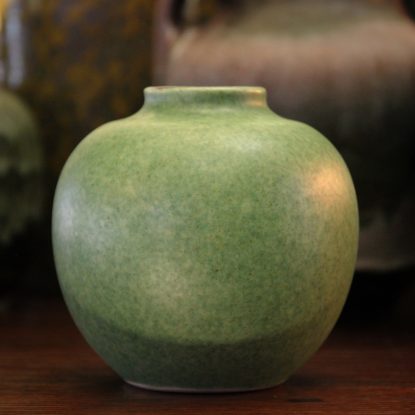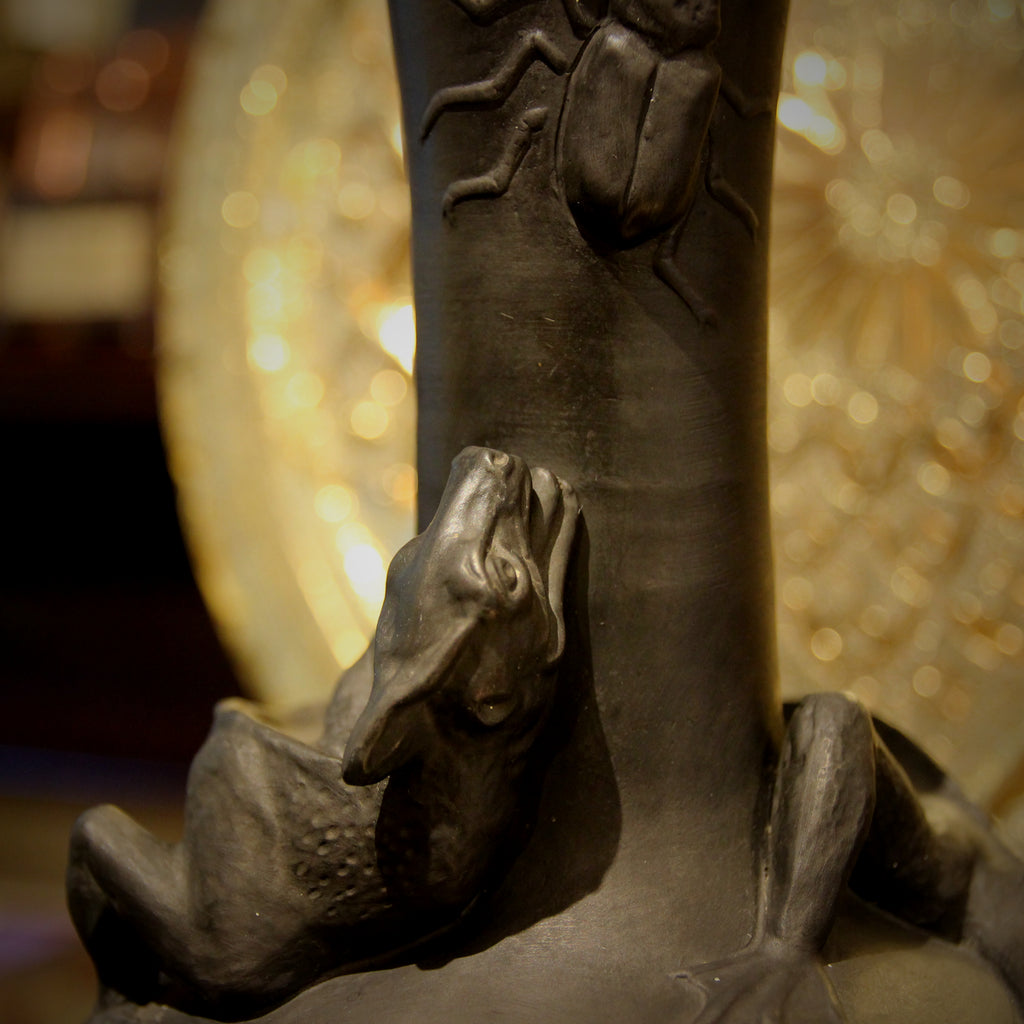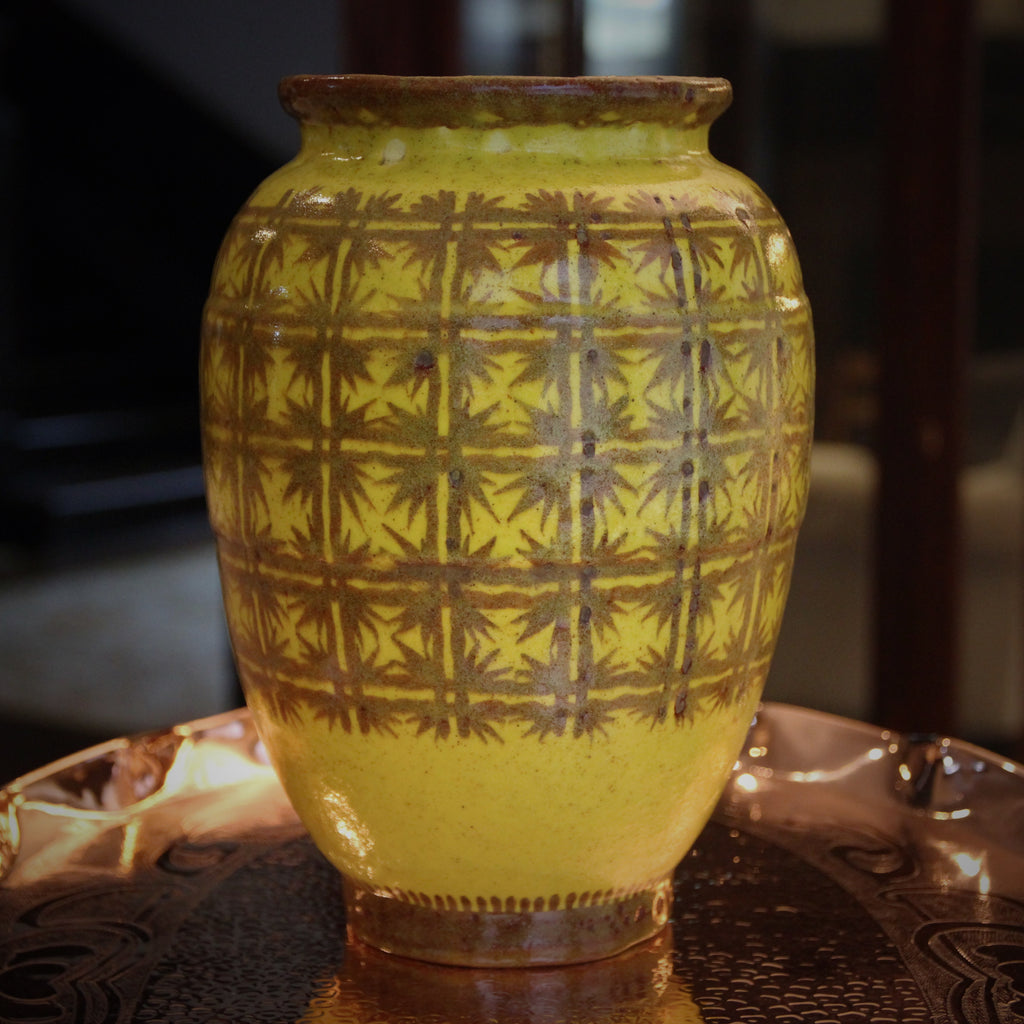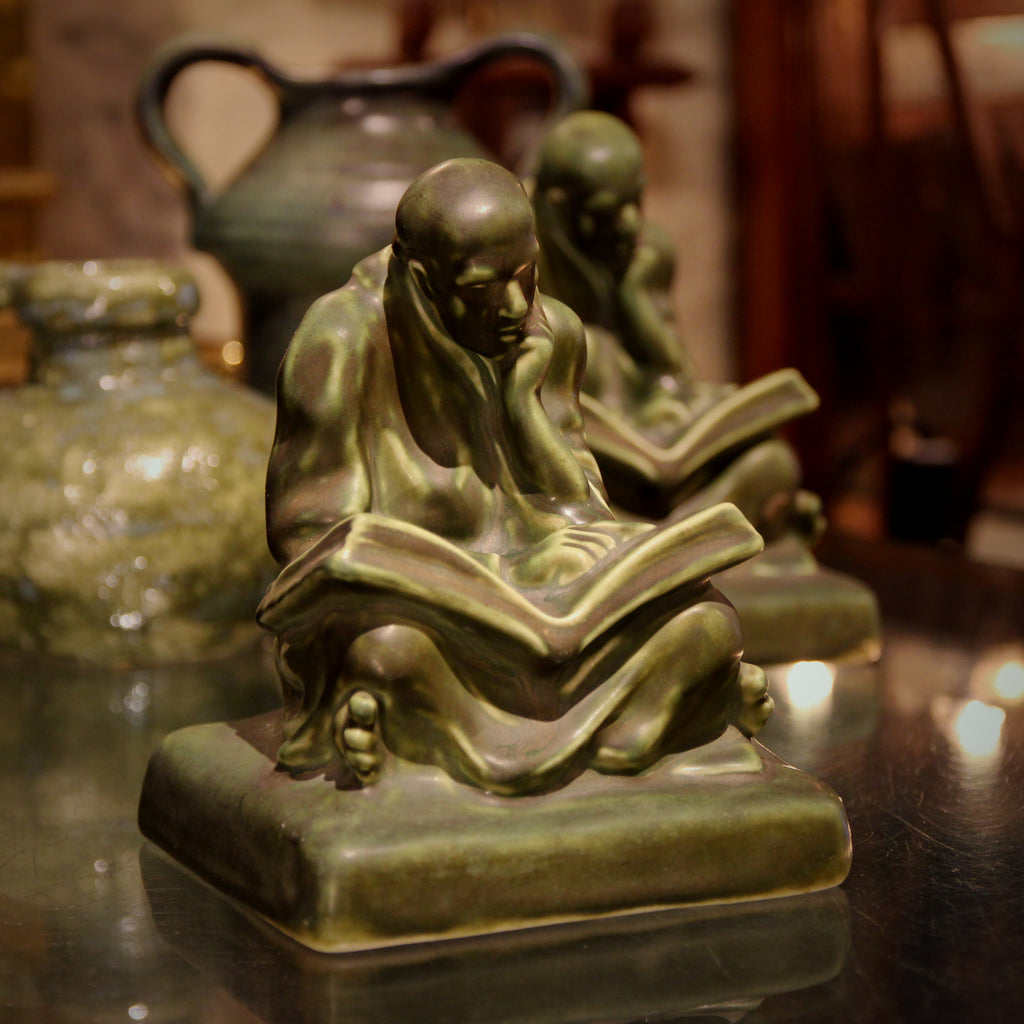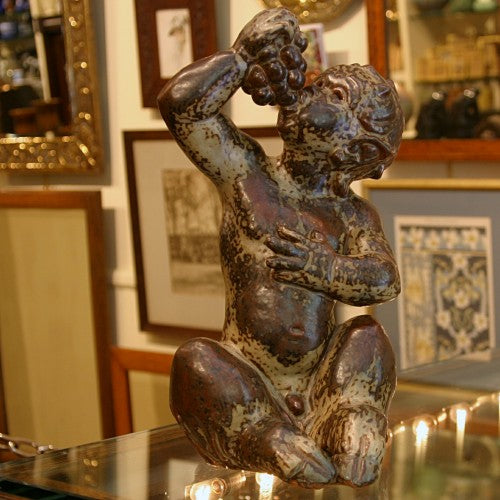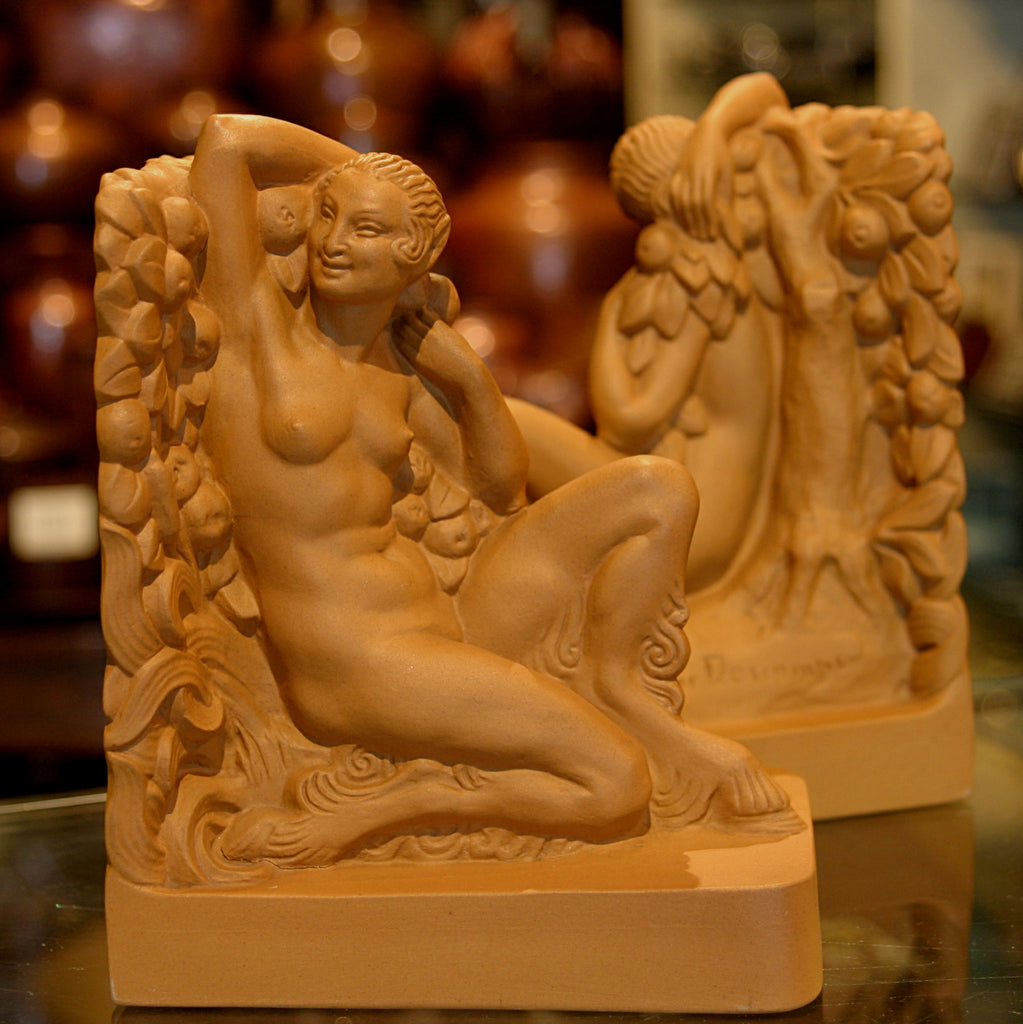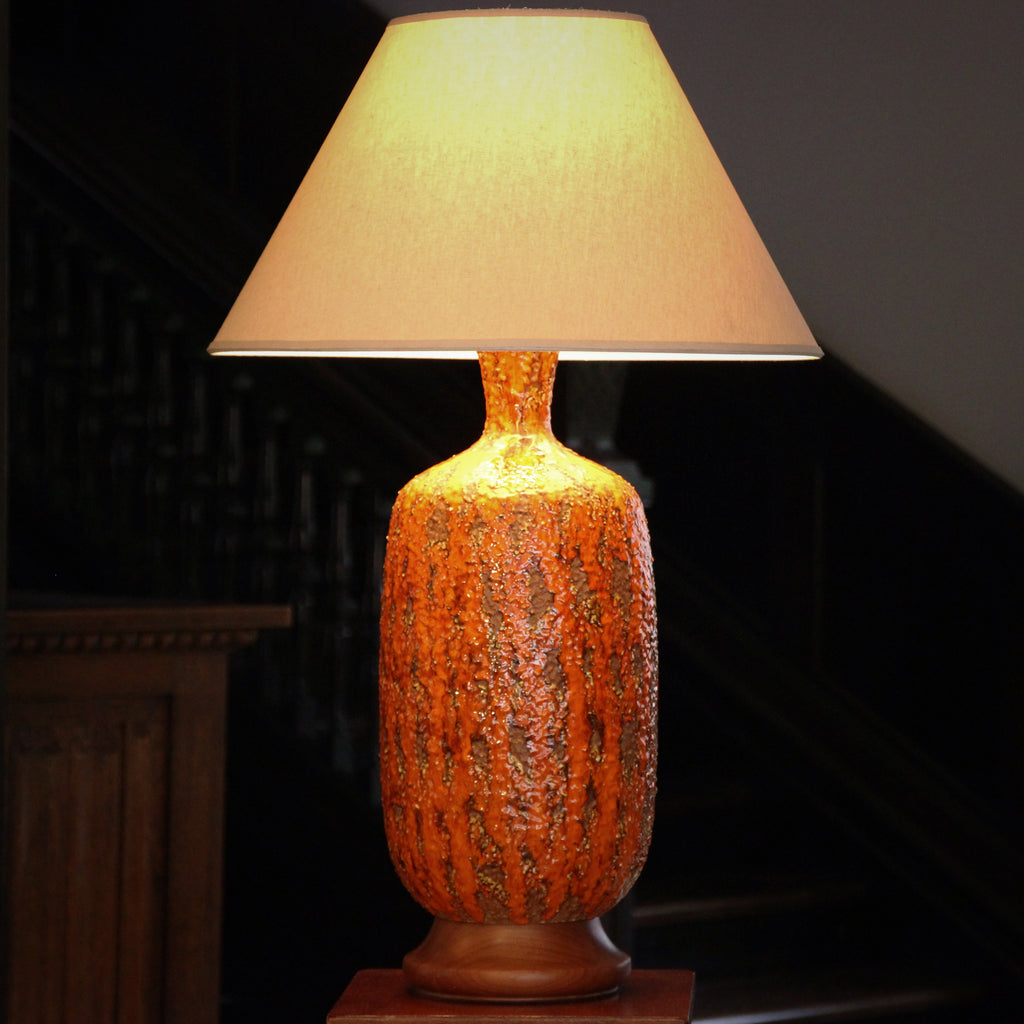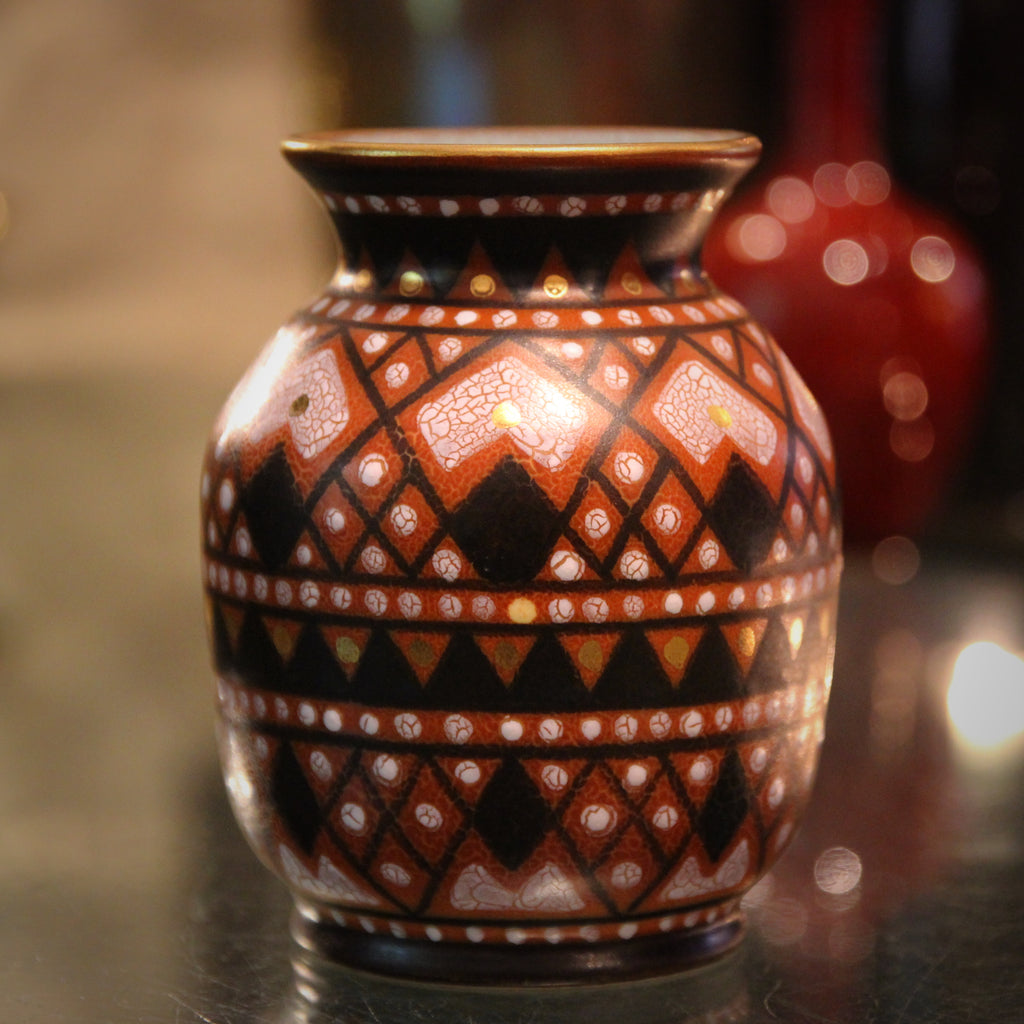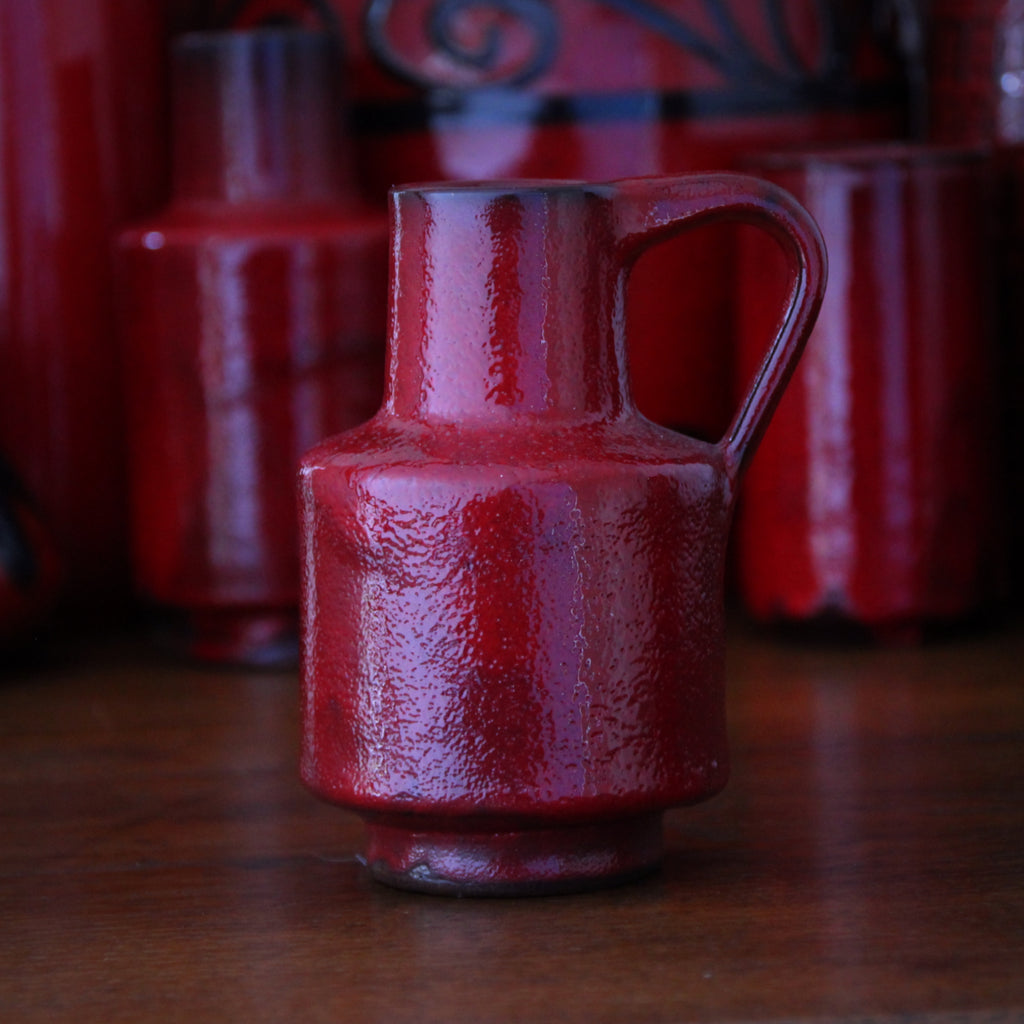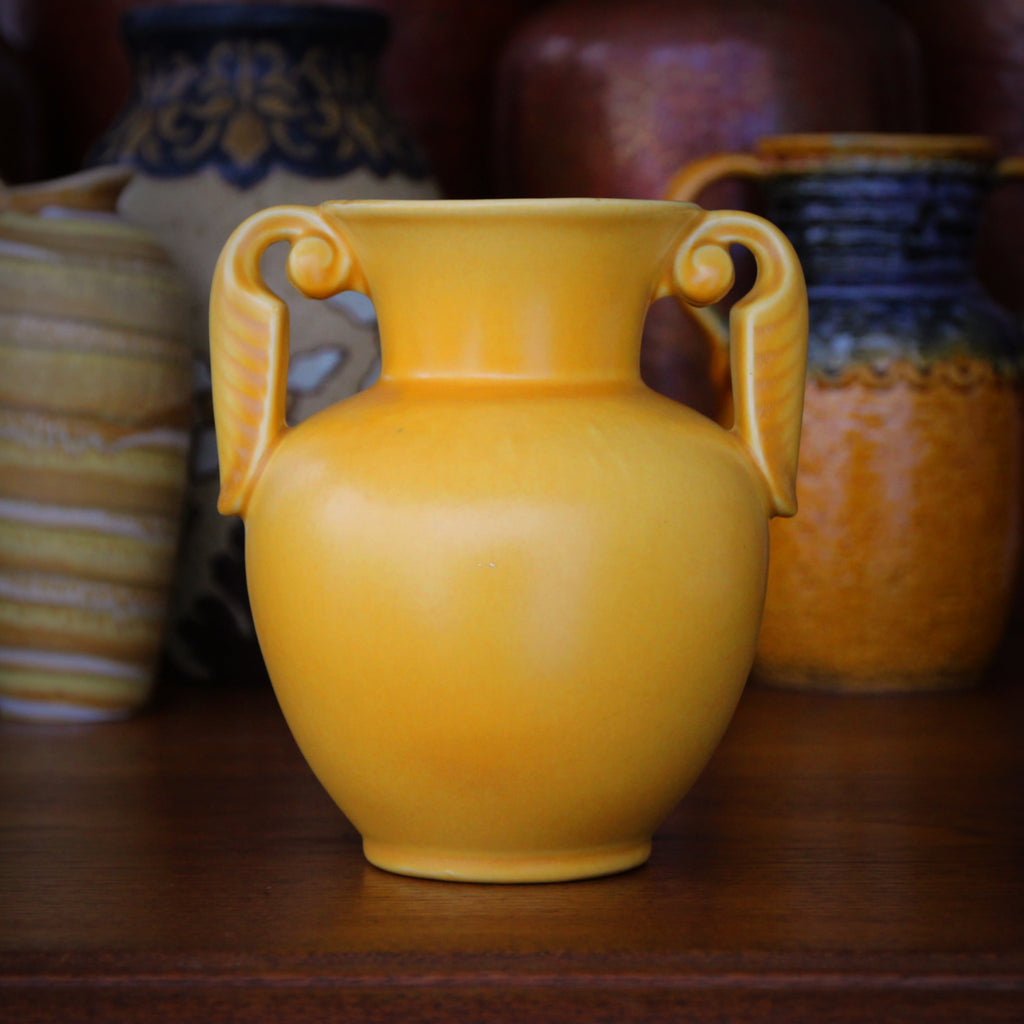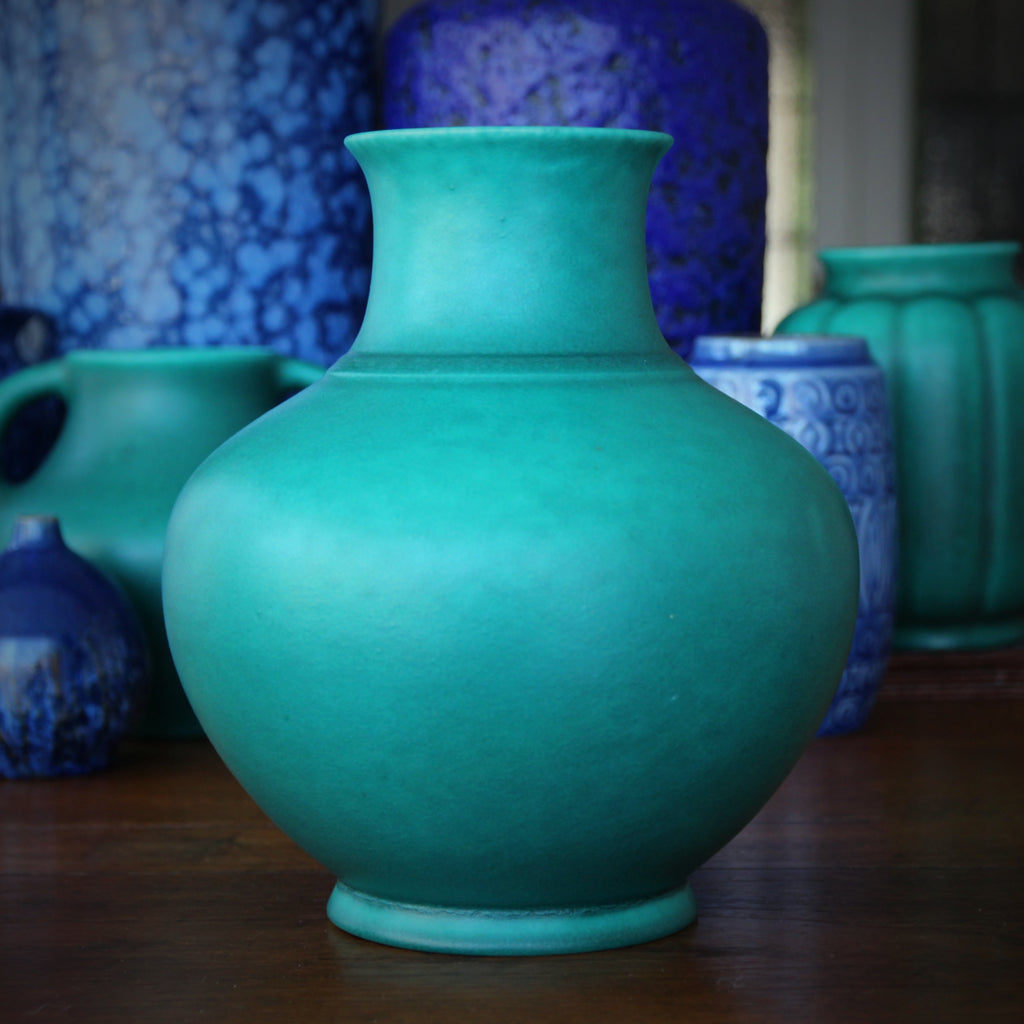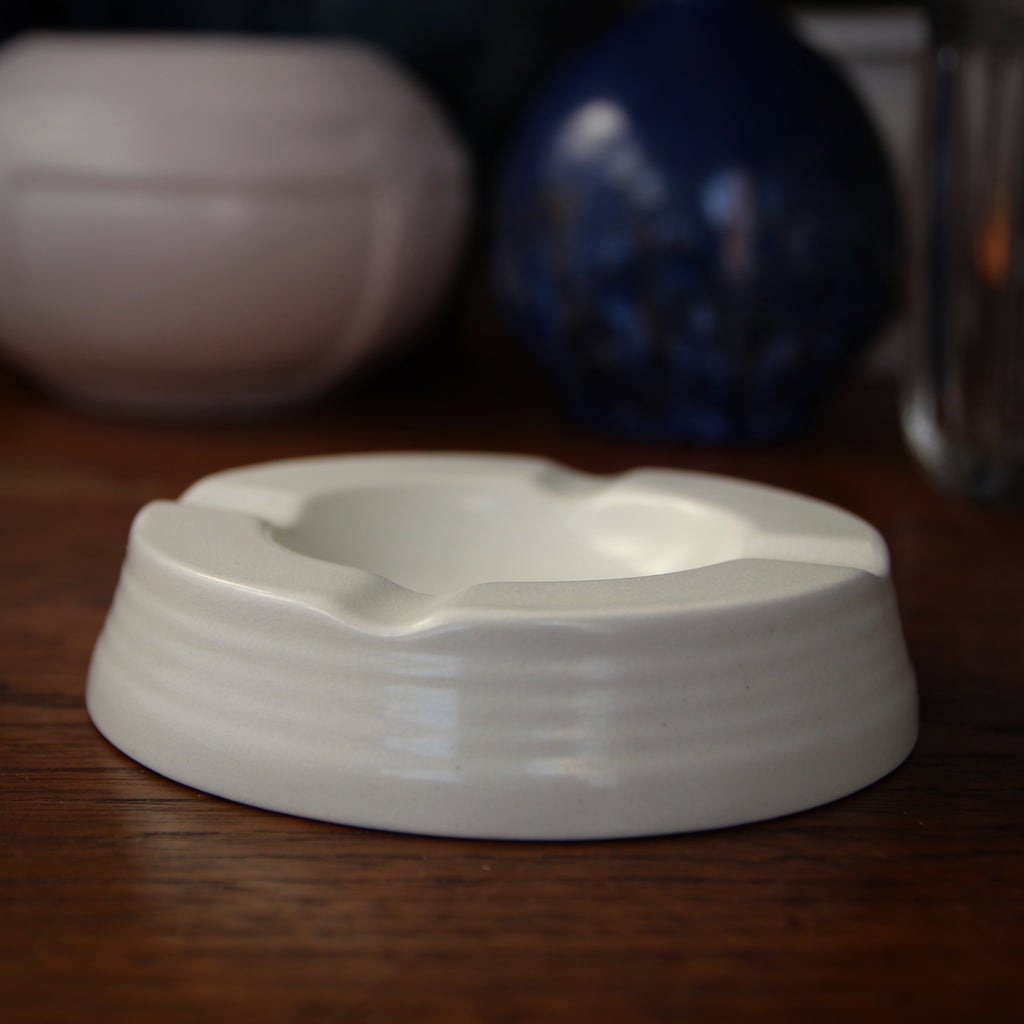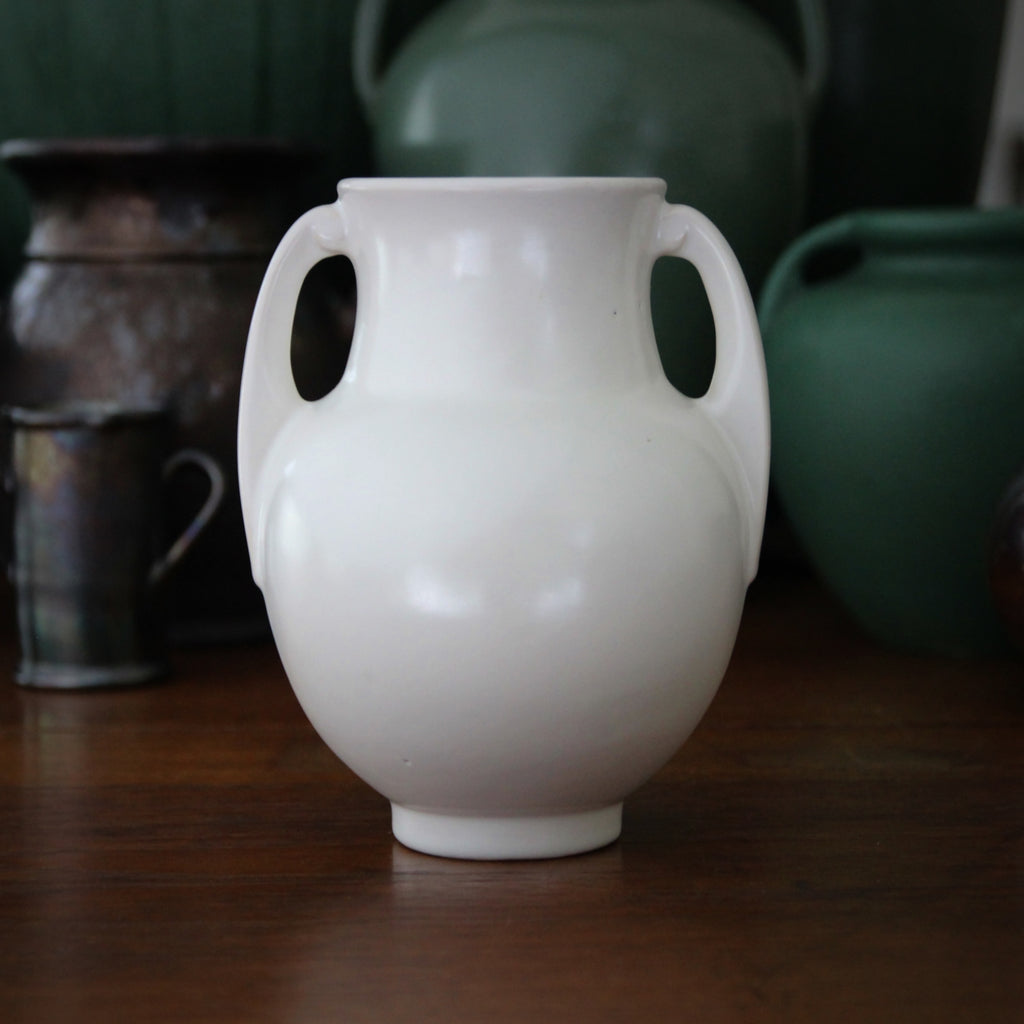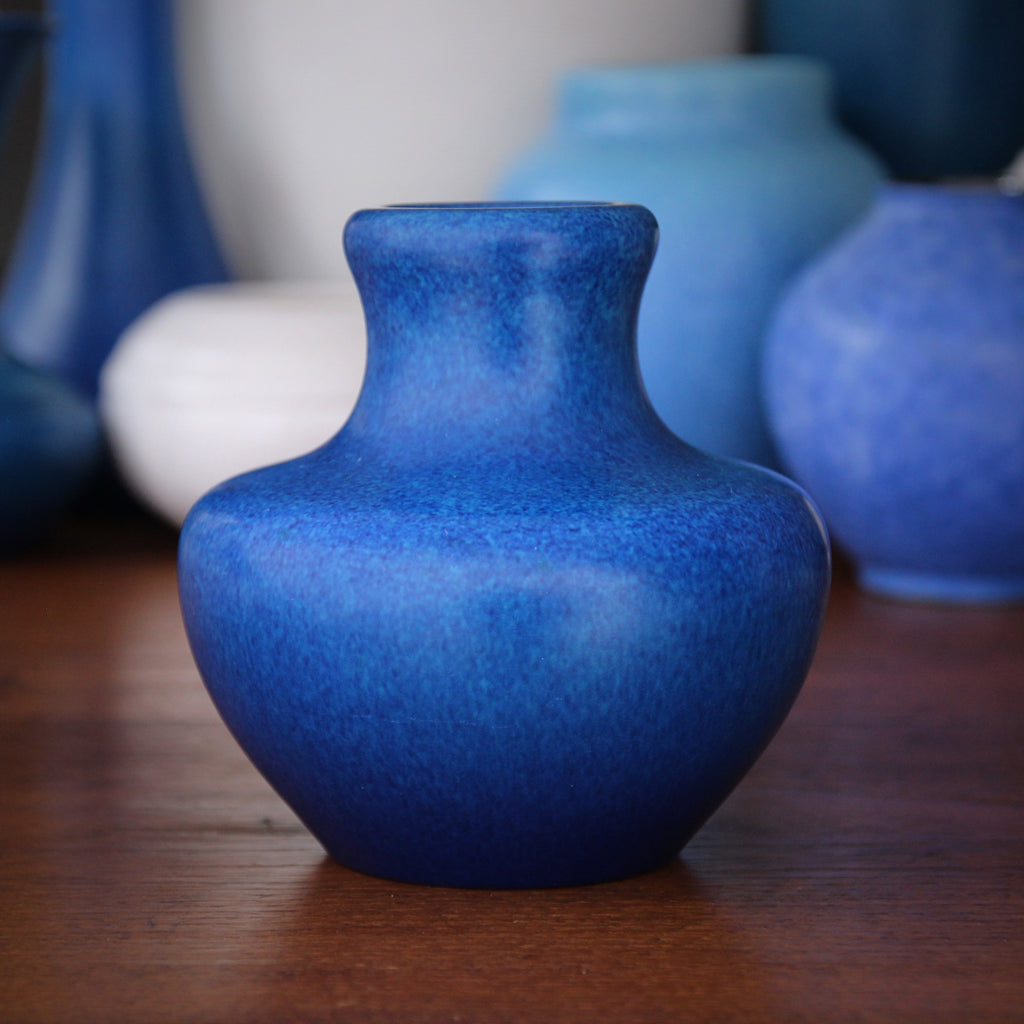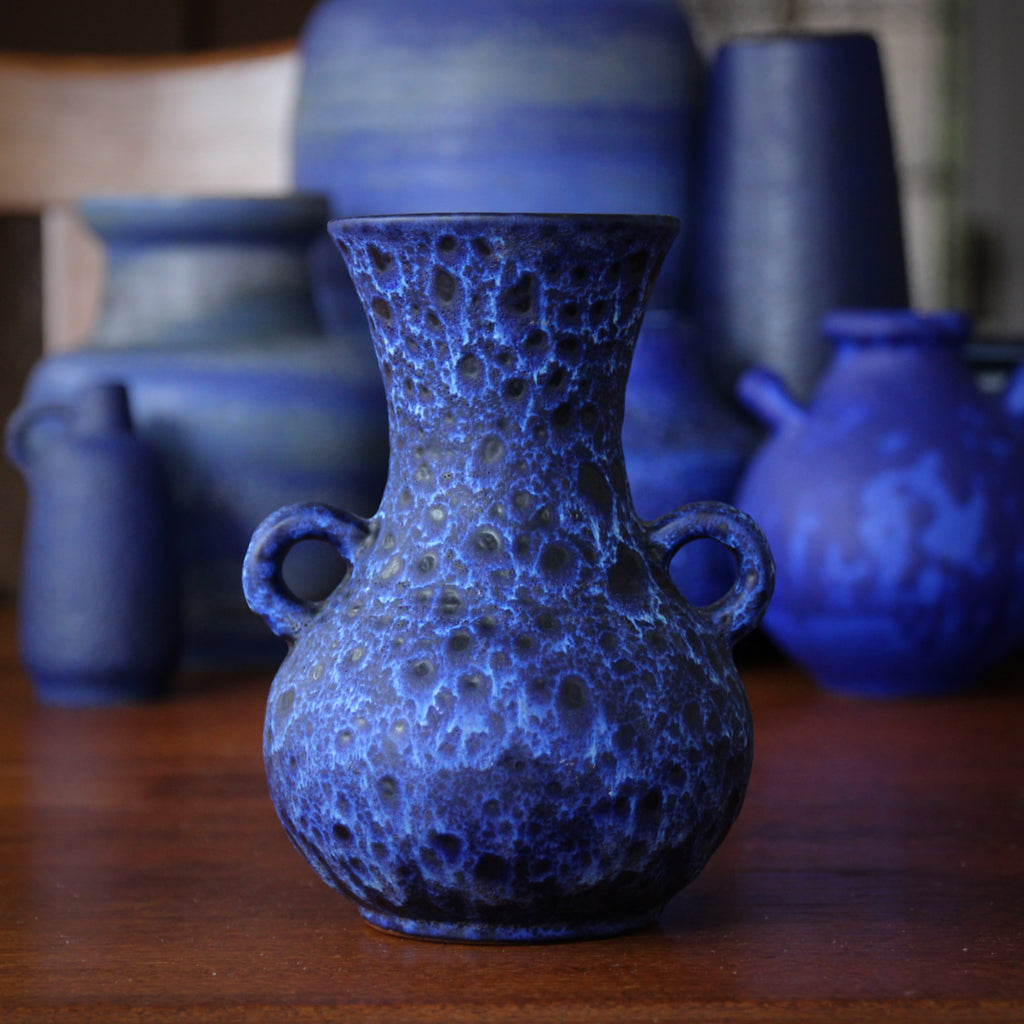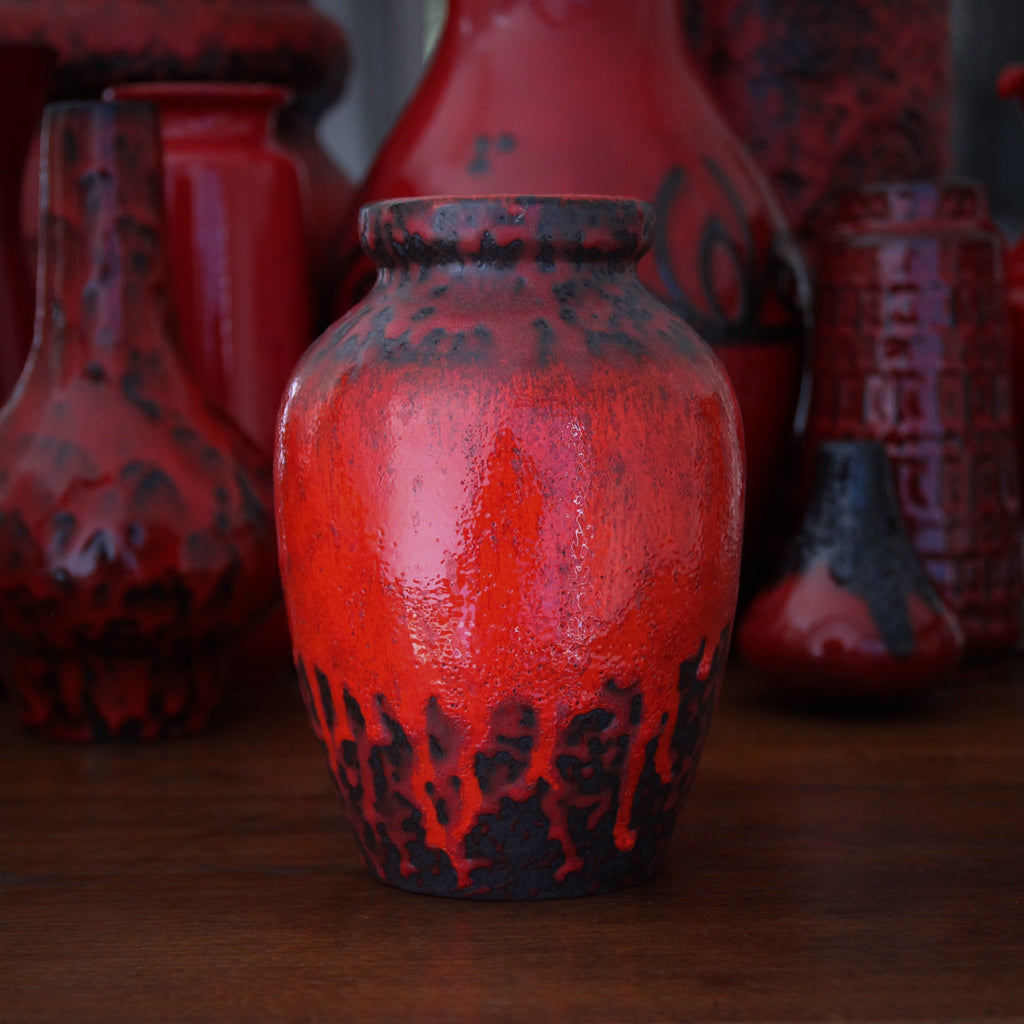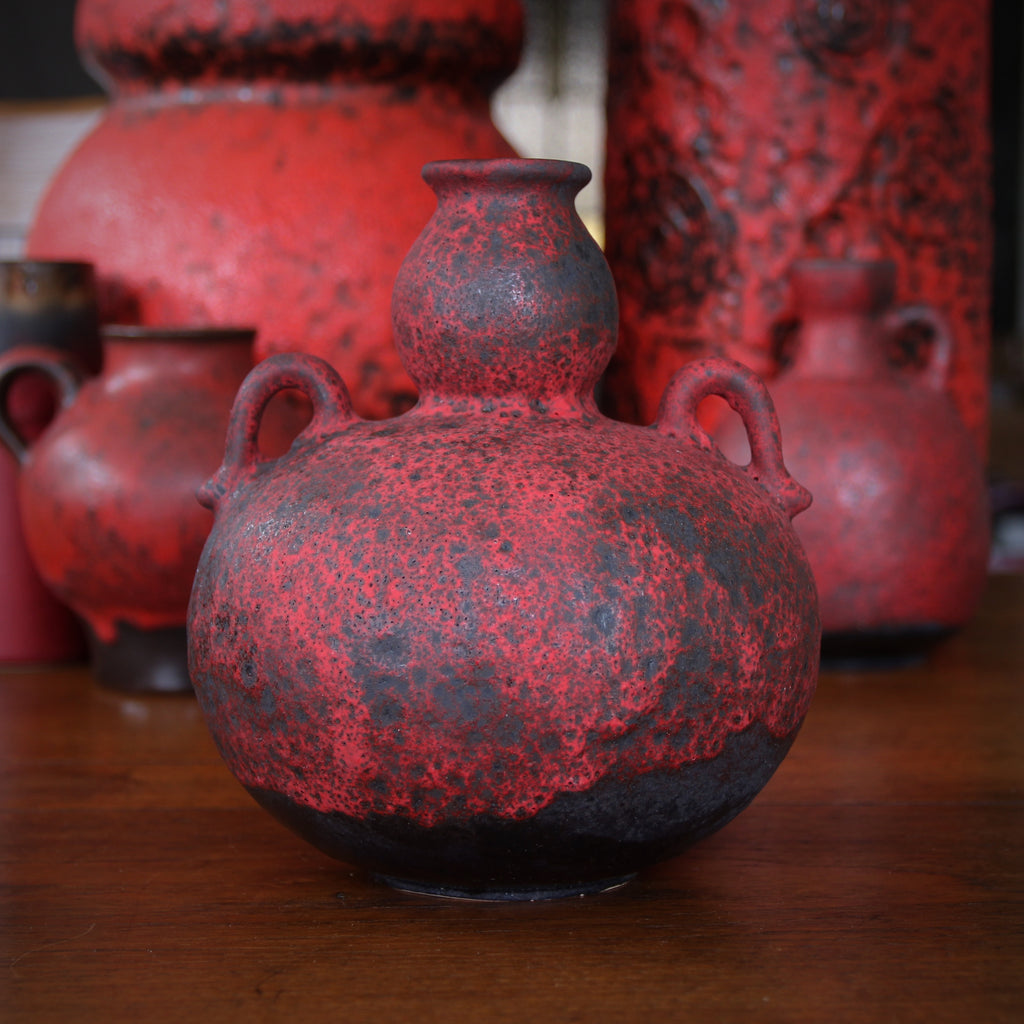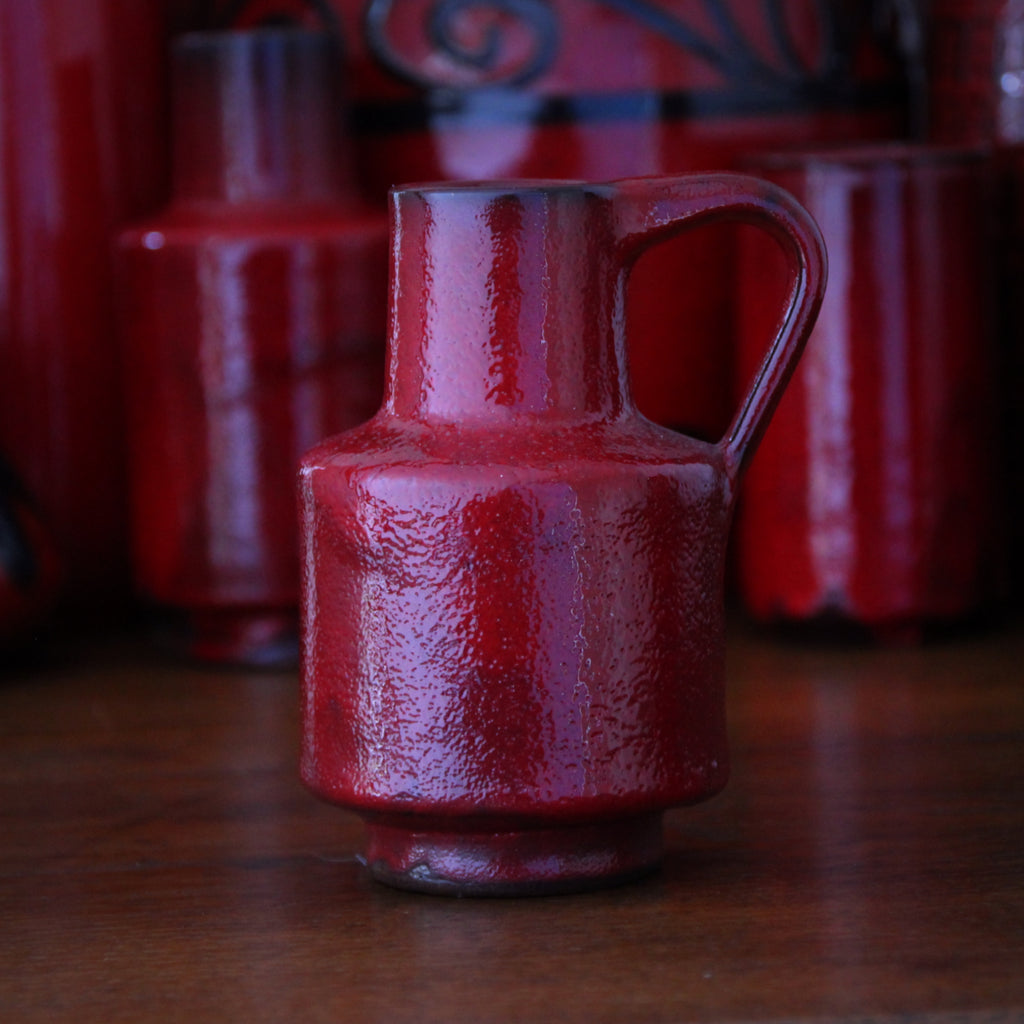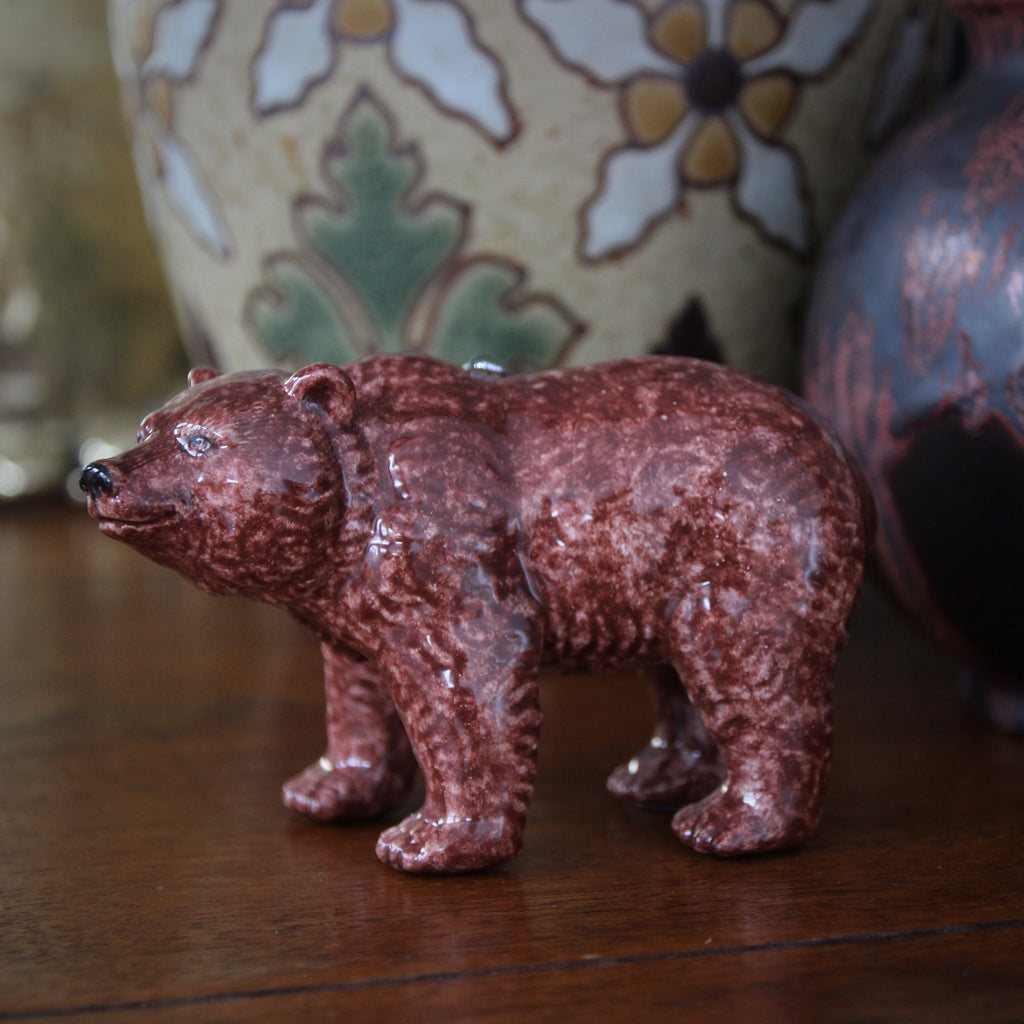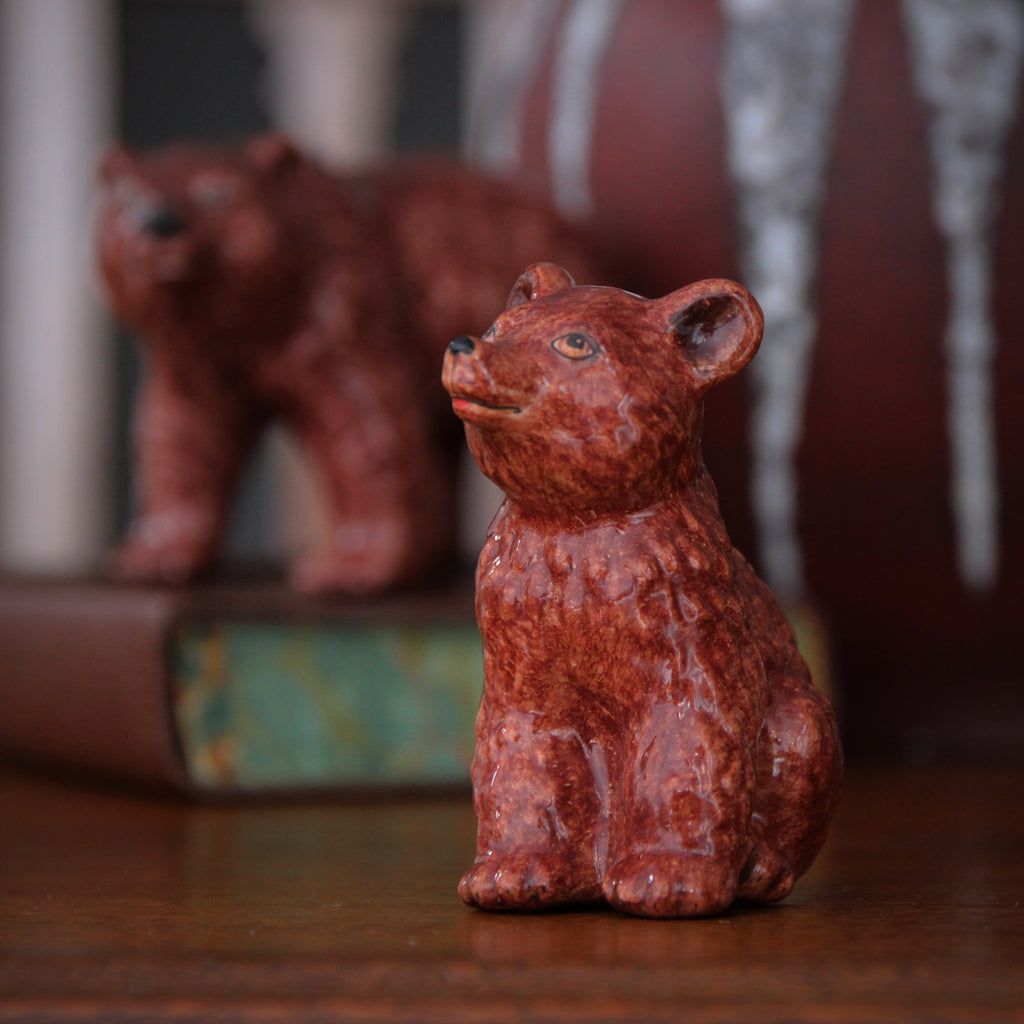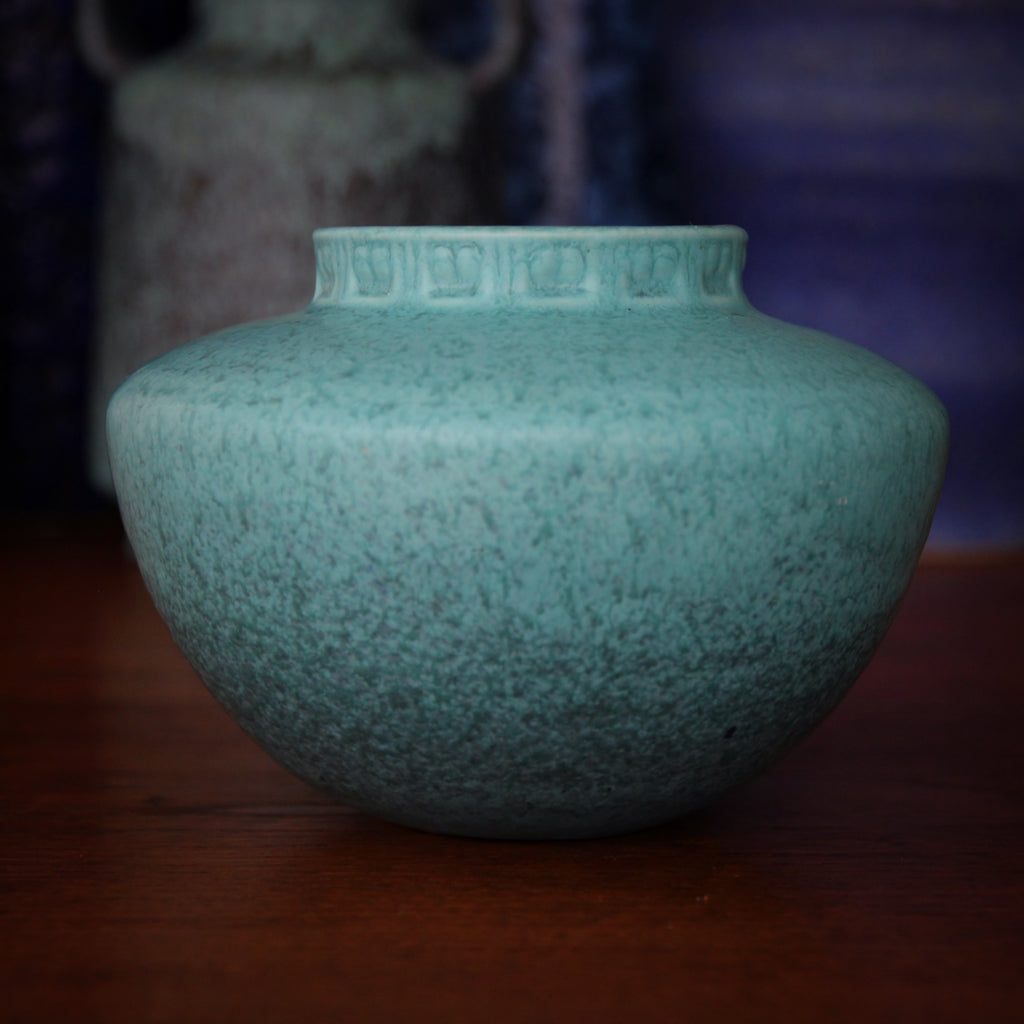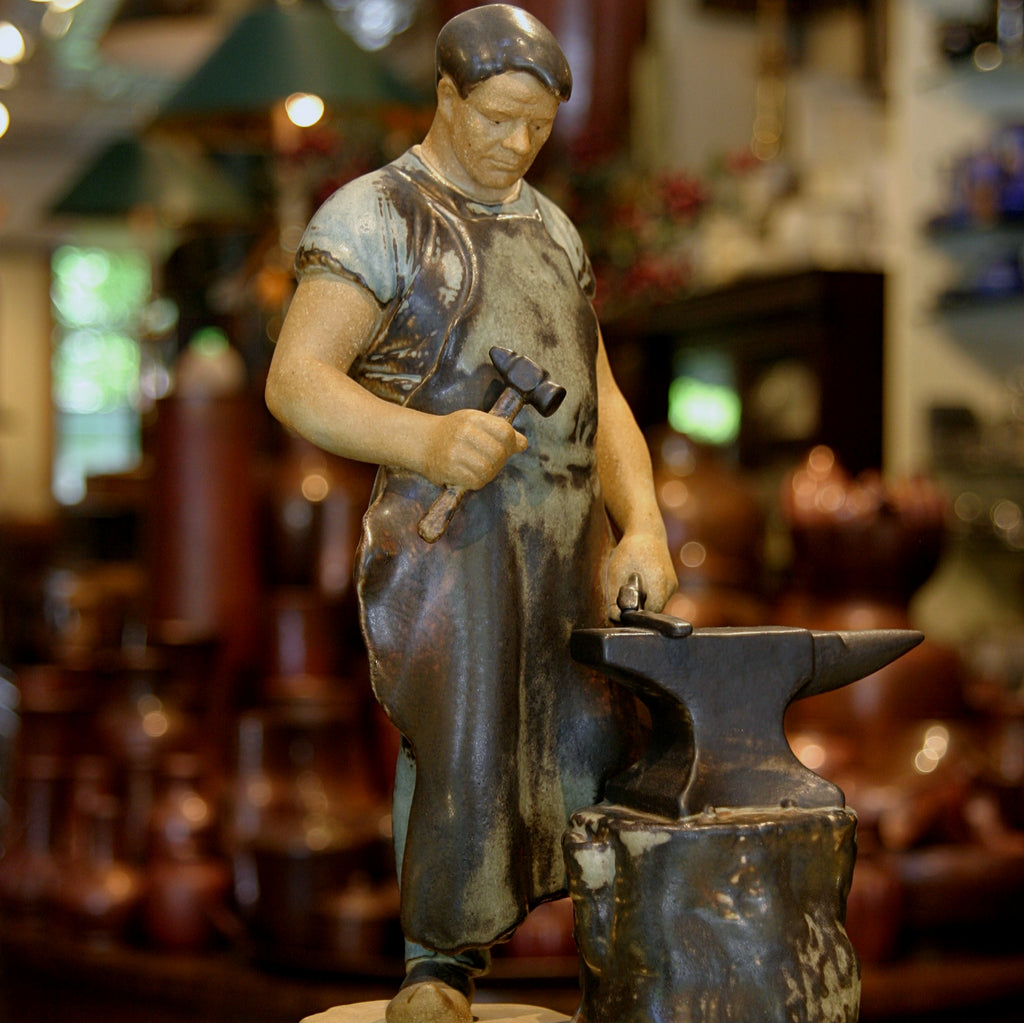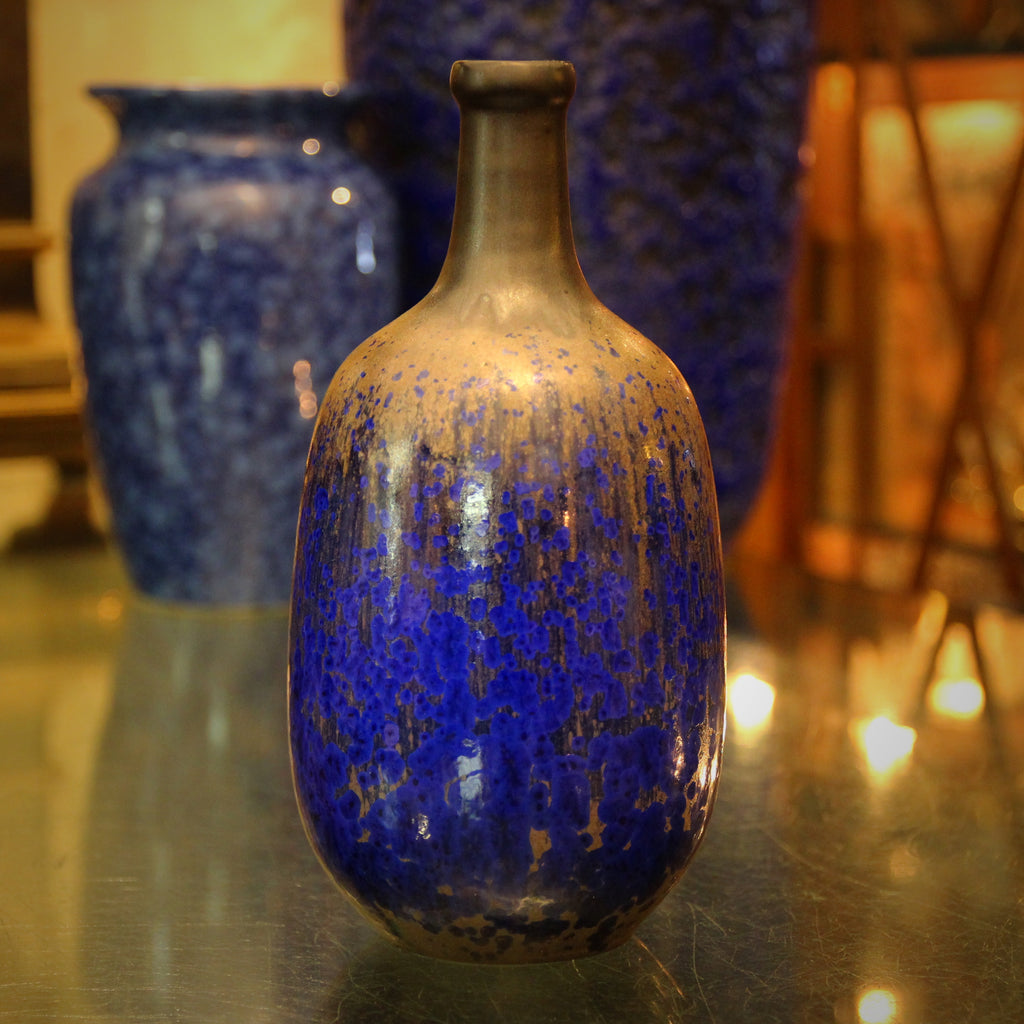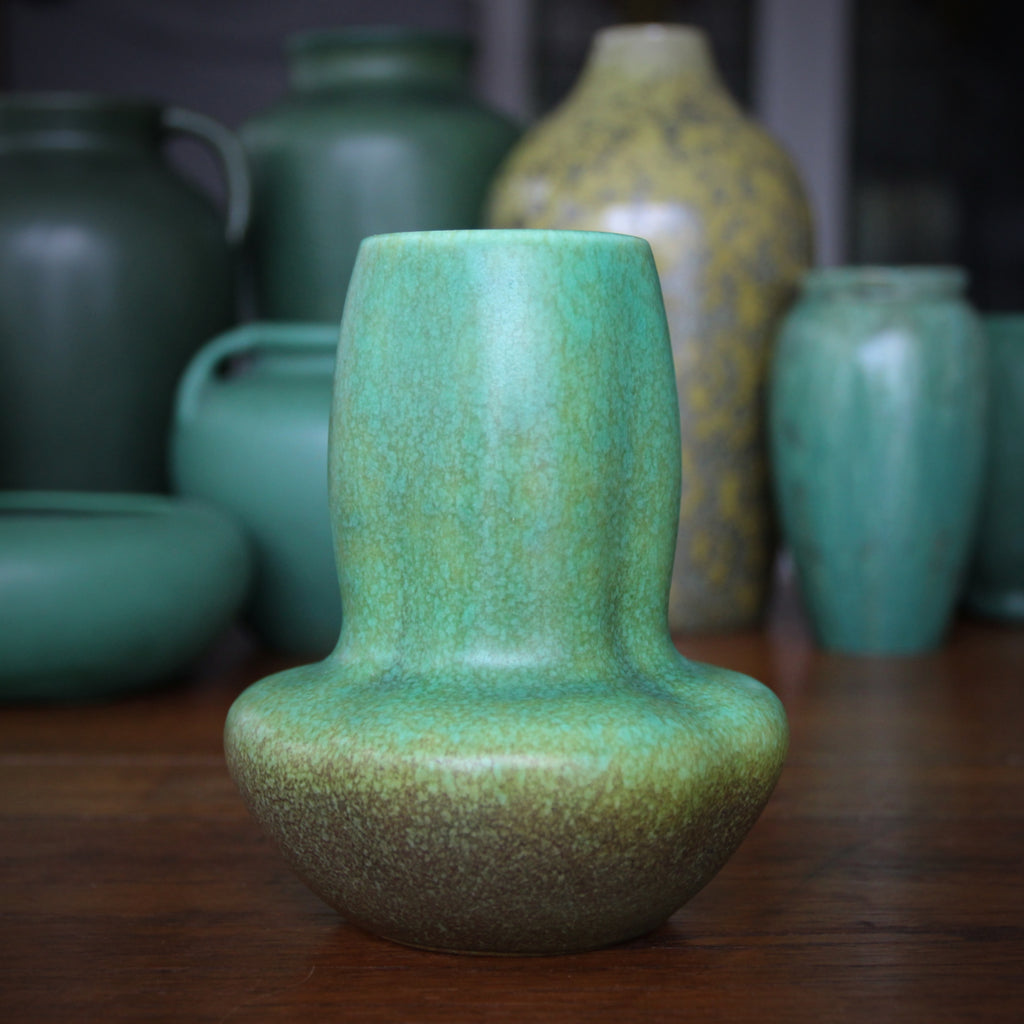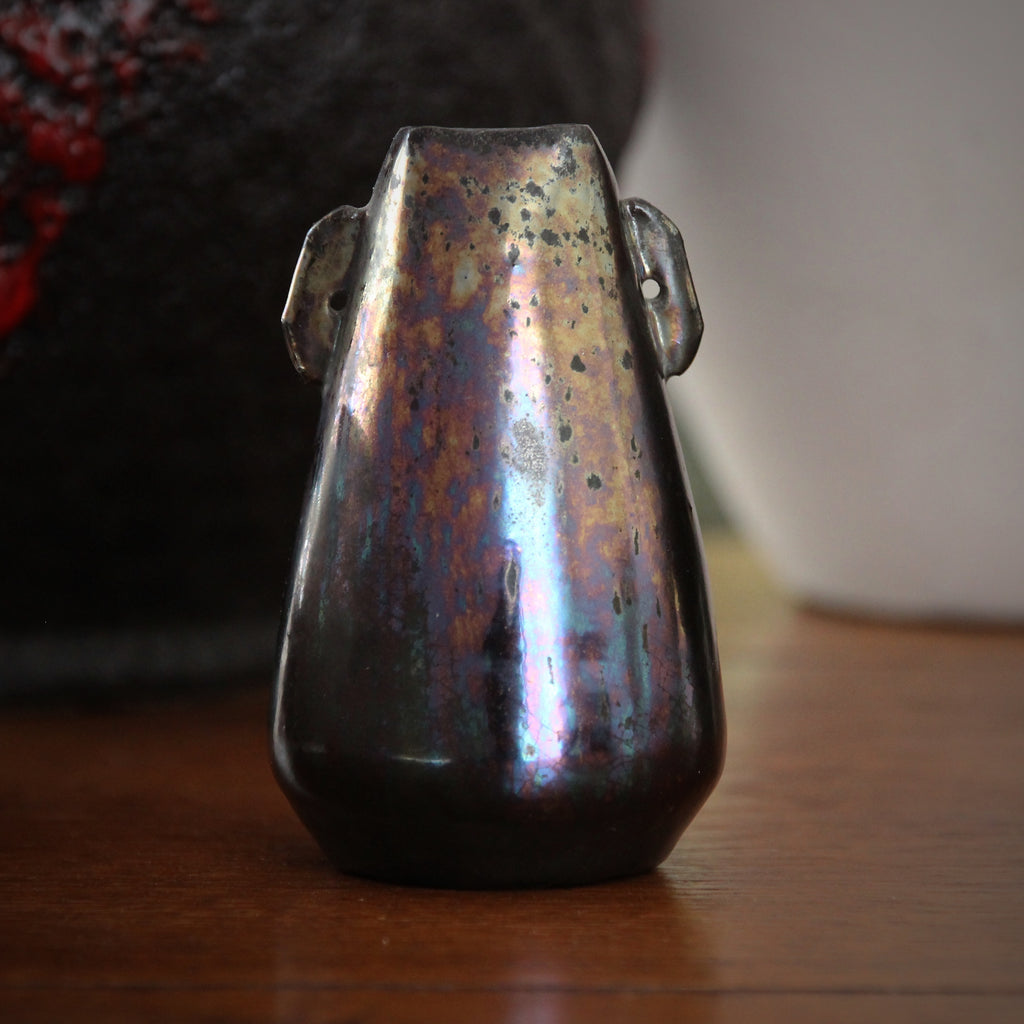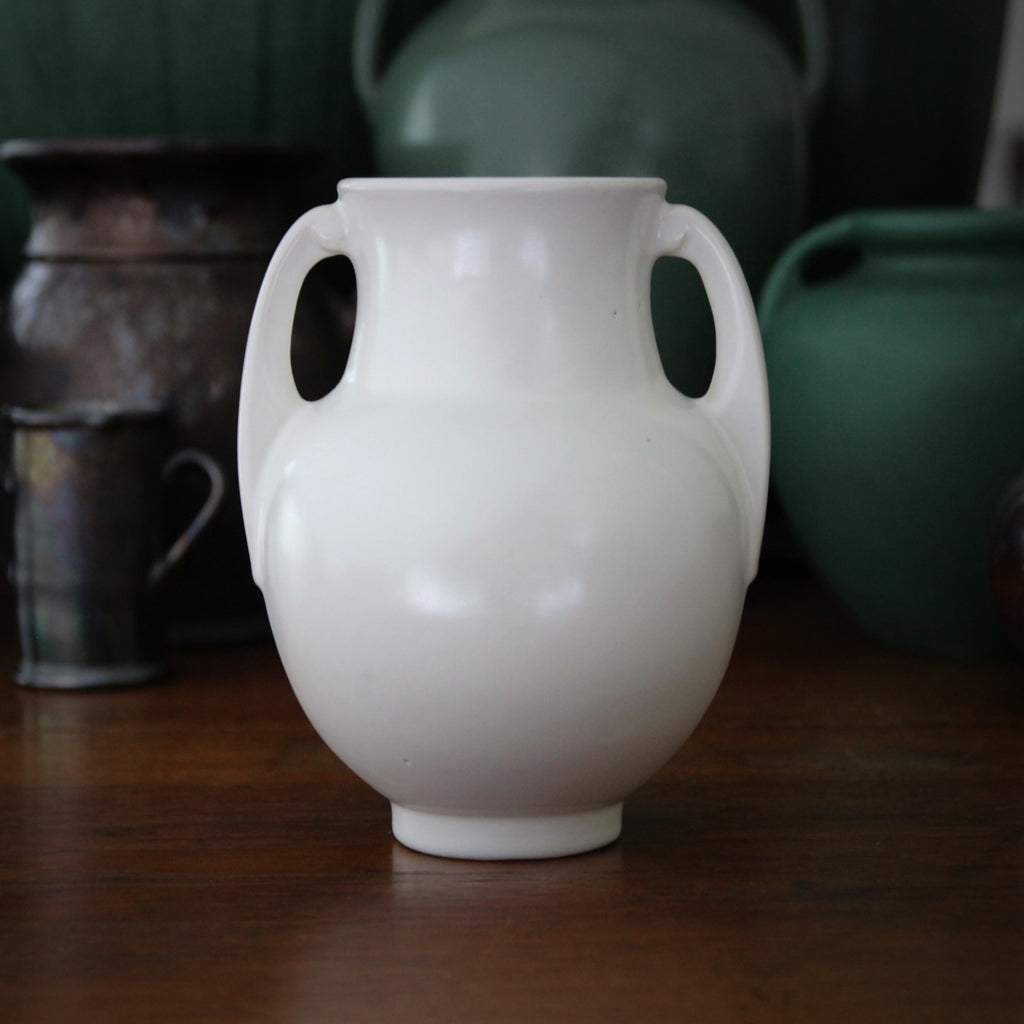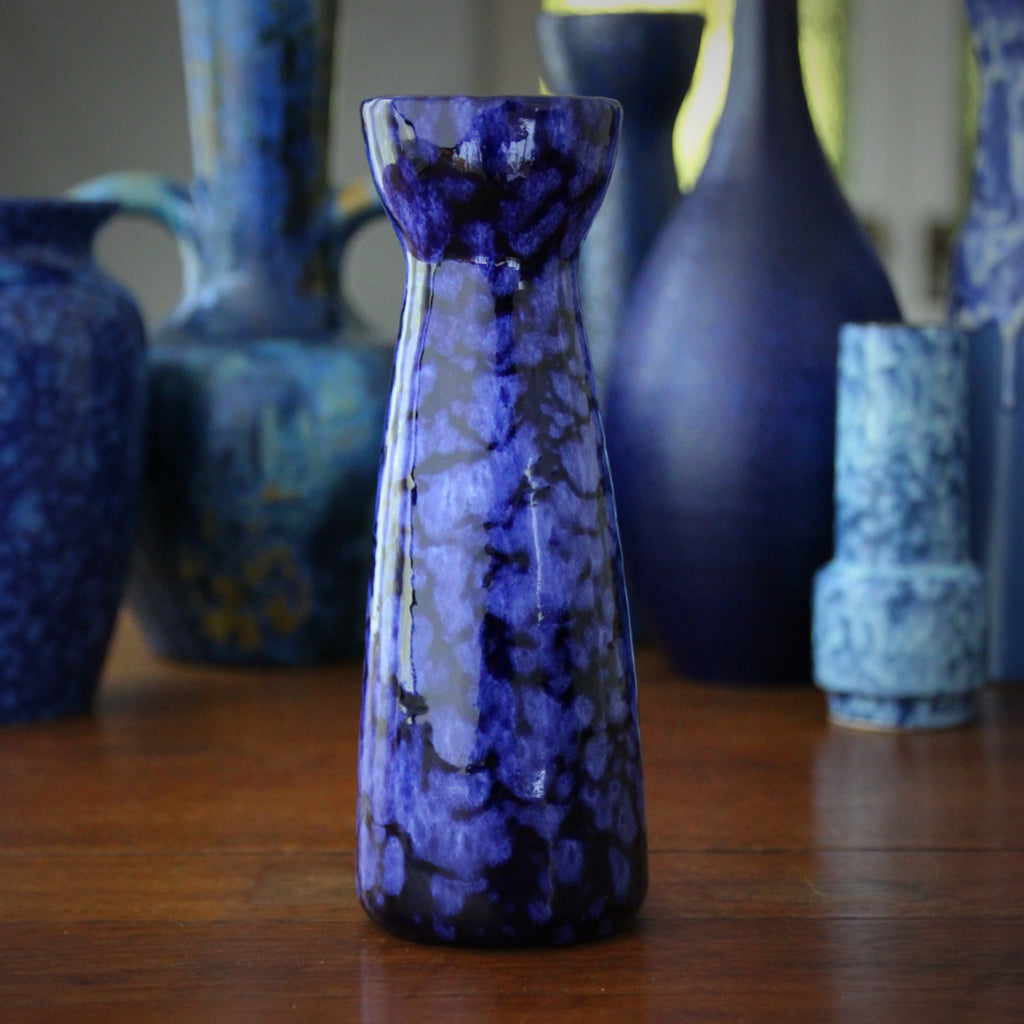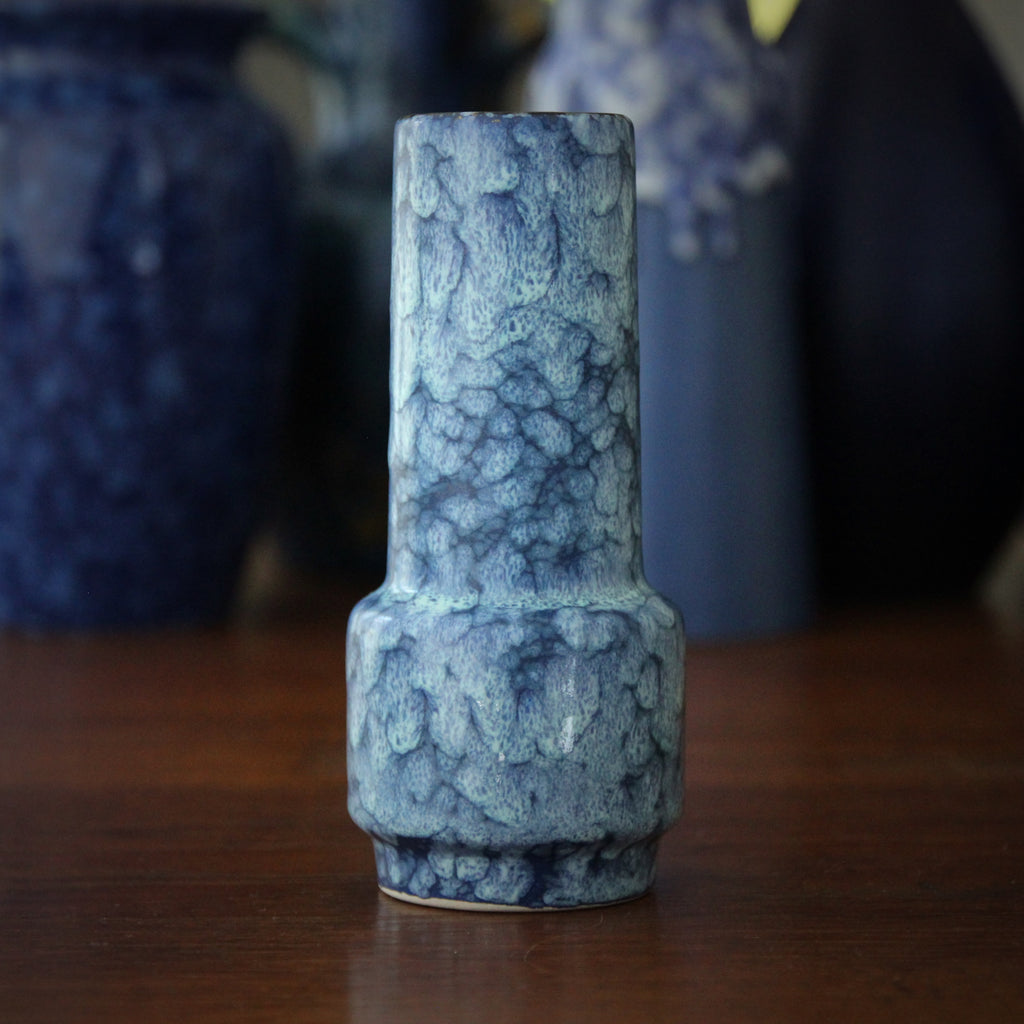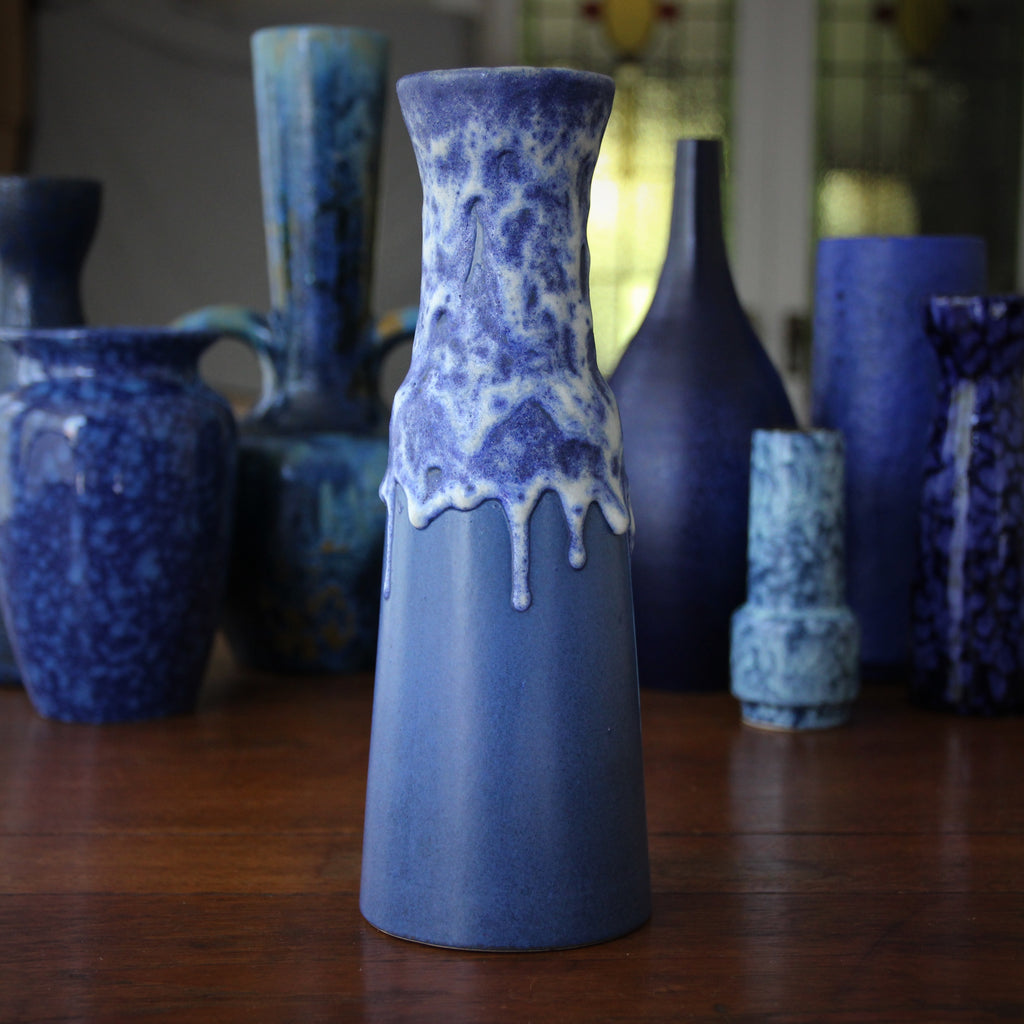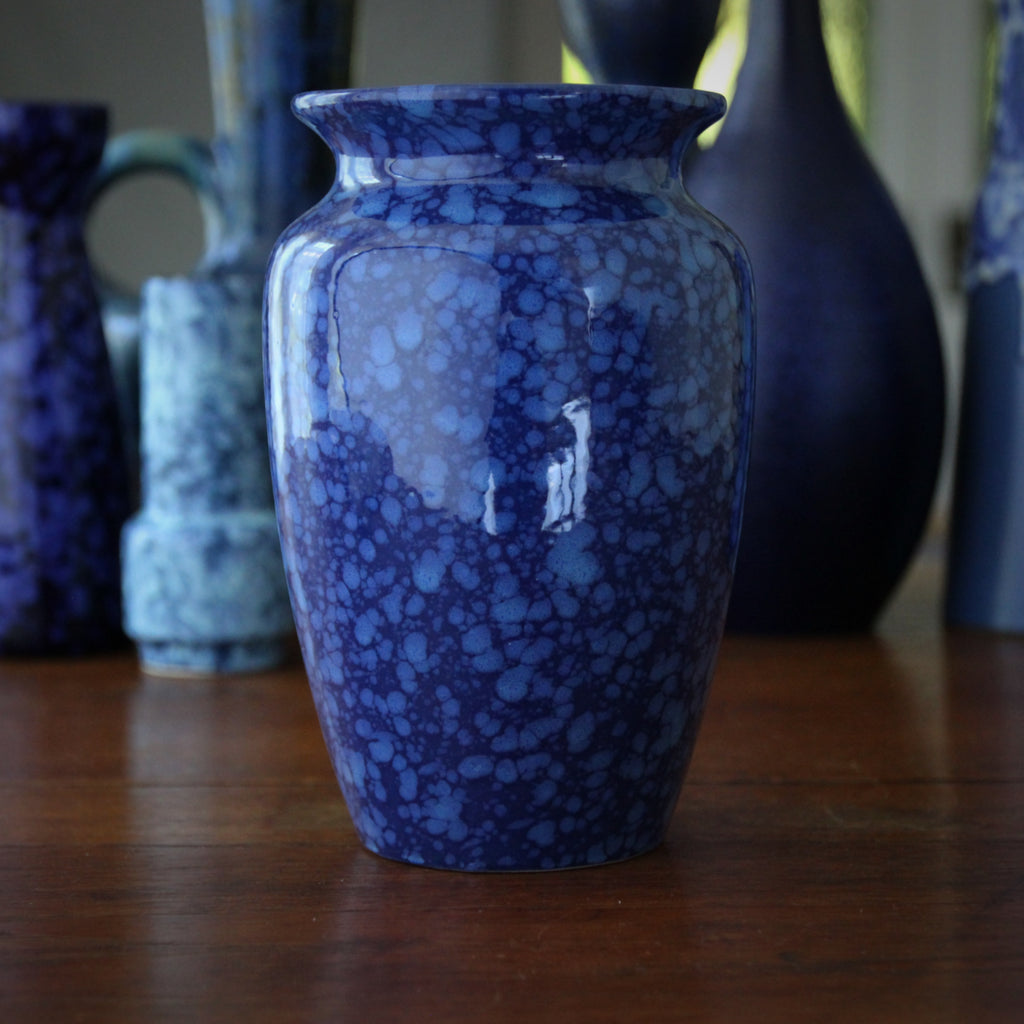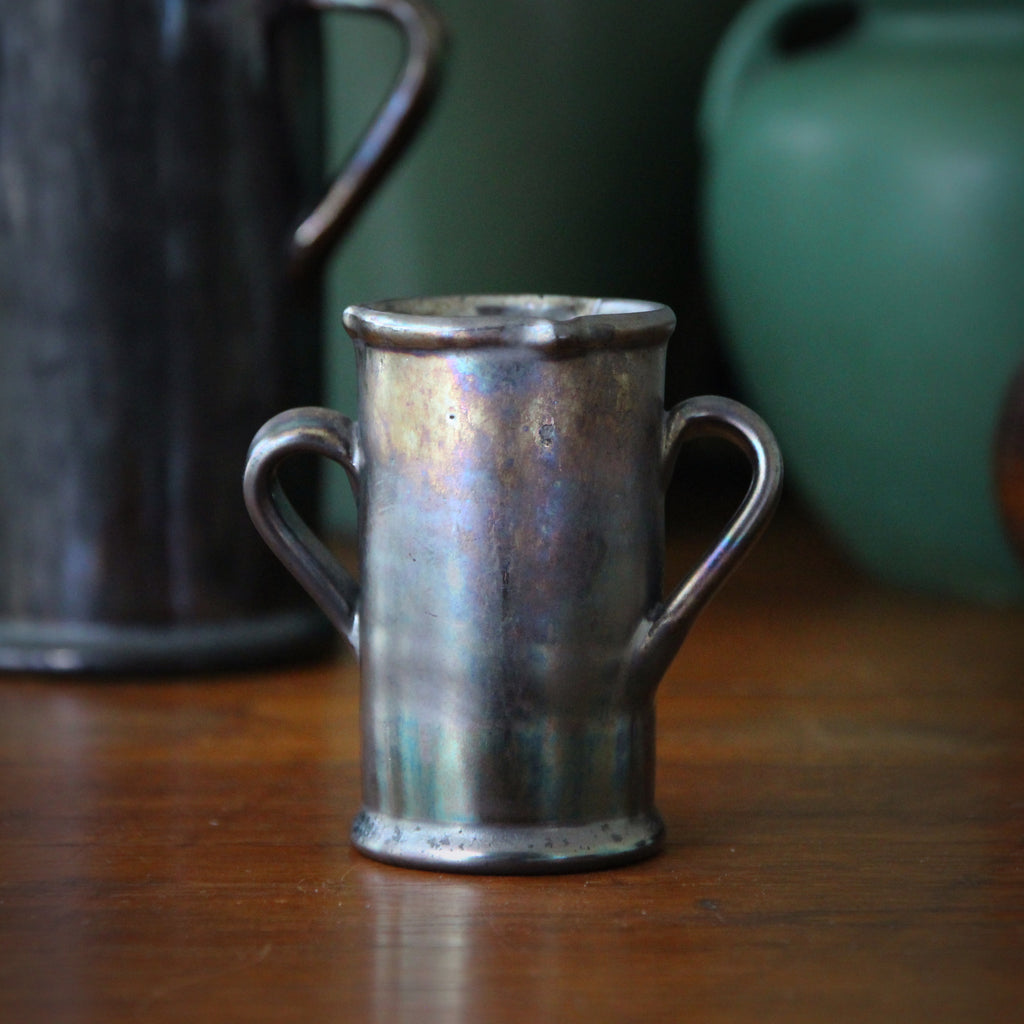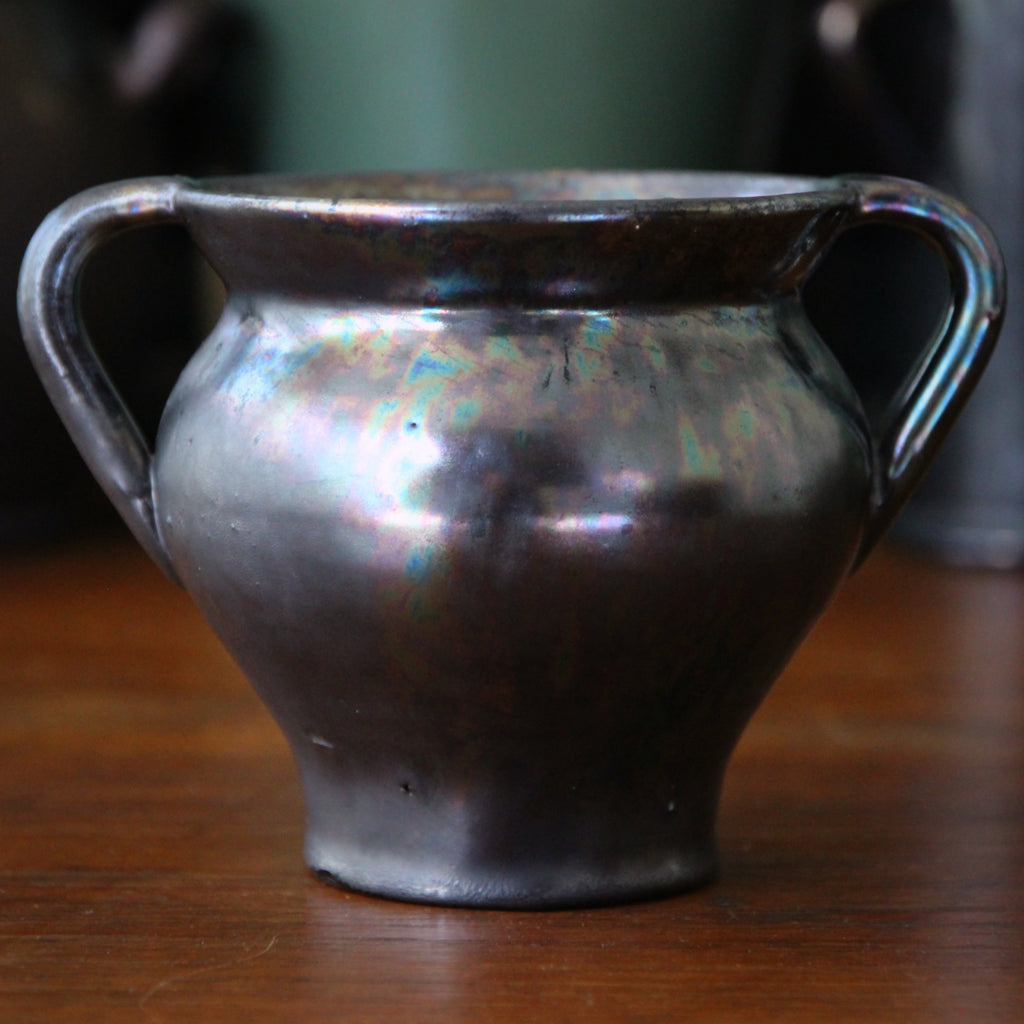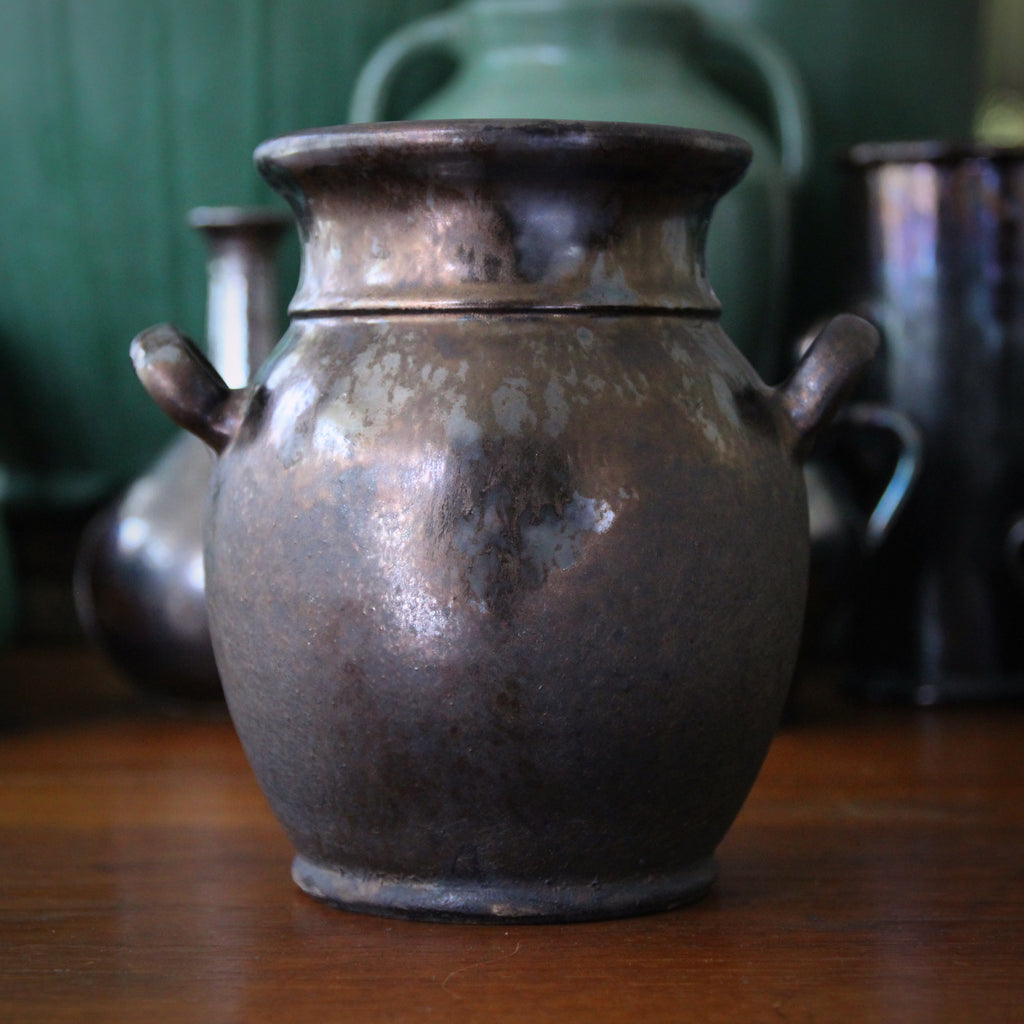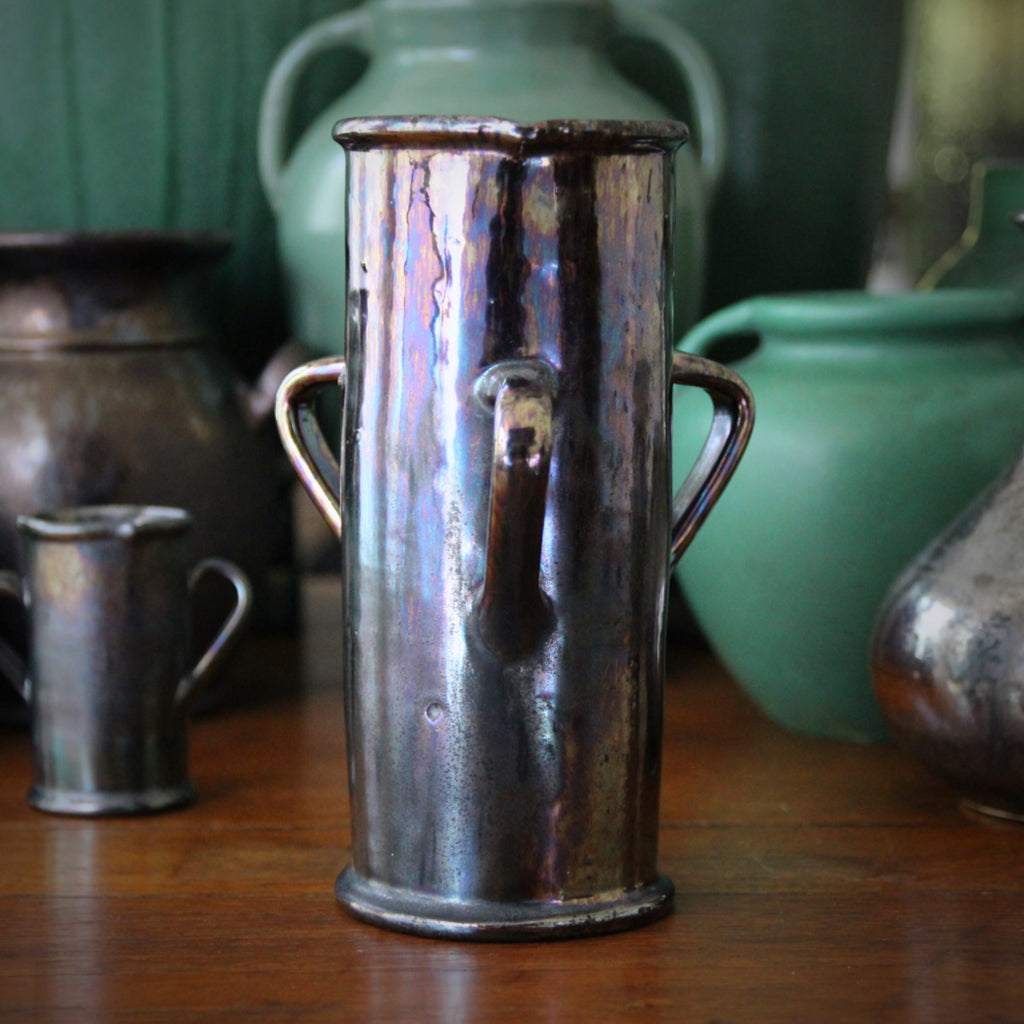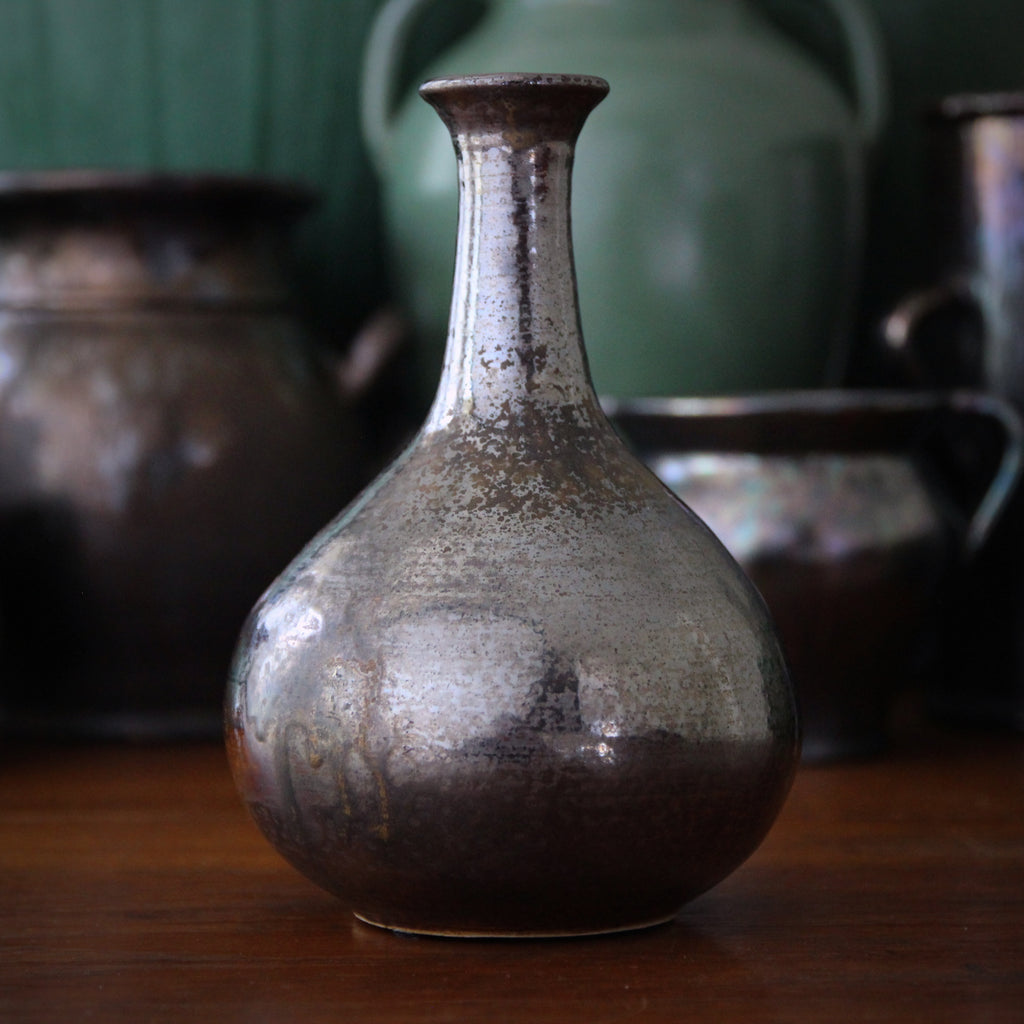JOURNAL — Art Pottery RSS
If the lazy days of summer carry your imagination to the French or Italian countryside, well, let's go! The handcrafted simplicity of a country village—the fences, signs, streets, buildings—can be a delicious respite from the high-tech, go-go world back home. And that celebration of handcraft manifests itself in the useful objects of everyday life. In a modern world which demands a constant technical scramble—and planned obsolescence is no longer challenged—isn't it nice to handle and use something that will never change? An object which will work exactly as designed, and work just as well, a hundred years from now? When I look at the vase above, I cannot help but think of the French countryside. The deep mustard, eggplant and moss...
The Waning Days of Summer - I
If you're dreaming of turquoise waters—entering them, not just thinking about them—the time is now to take that dip. Before long, the waters will have chilled and beach days will be behind us. Of course, this handsome English Art Deco vase will bring you a remembrance of beaches past—all year long. Made by Pilkington Royal Lancastrian in the 1920's or 1930's, it is finished with a luxurious jade-specked turquoise glaze—reminiscent of Persian Turquoise. The bas relief diamond under-pattern adds energy and structure to the form.
Sunny Days
"Summer afternoon—summer afternoon; to me these have always been the two most beautiful words in the English language." -Henry James (1843-1916) What a beautiful summer we're having, at least here in my new home of Pittsburgh. Sunny, dry, and topping-out around 78º. Nights in the mid-Sixties are heavenly, indeed! When Henry James penned these insightful words, there was no air conditioning and "beachwear" was only worn at the beach (and it was still woolen). Yet, he captured the relaxed (and lazy) feeling just right—at least for those who could afford to relax on a summer afternoon. The vase above, glazed in a cheery, sunny yellow glaze, is sure to bring a spot of summer sunshine into your home—whatever the...
Earth's Fastest Animal
The Peregrine Falcon has been capturing mankind's imagination for millennia. The Ancient Egyptians depicted their sun god, Ra, as having the body of a man and the head of the peregrine. And, for at least 3,000 years, people have been practicing falconry—the sport of training domesticated falcons to capture prey and return to their master. Peregrine Falcons are superb hunters. They are eager, agile, adaptable and oh-so-fast. Peregrines have been clocked at speeds of 242 mph while in "dive mode"—making them the fastest animal on Earth. First they fly to an altitude over 3,500 feet, after which they rocket downwards toward their prey. They tuck-in their heads, pull-in their wings, and contort their bodies for maximum aerodynamics. Even at these speeds,...
Something for the Smart Set - Part II
Yesterday we discussed the pioneering glaze developments of Clément Massier, céremiste extraordinaire and icon of the Art Nouveau movement. Along with talented teammates, Massier invented new glazing techniques which were inspired by Iberian, Islamic, Chinese and Ancient ceramics works from Egypt, Greece and Rome. His signature was metallic lustre glazes—iridescent finishes using copper, silver and gold. These pieces were first glazed and fired at the normal (high) temperature (twice). Next, a solution of copper- (or silver- or gold-) oxide (and other metallic chemicals) was applied and the piece endured a third (low temperature) firing in a low-oxygen kiln. After firing, the pieces might be inscribed with an "over pattern" or embellished with a cold-paint design. Such "organic" glazing techniques produced unpredictable, unrepeatable...
Something for the Smart Set - Part I
Clément Massier (1845-1917), born into a family of French potters, was destined to be a ceramicist. But it was he himself—while tapping the skills of a handful of brilliant colleagues—that redefined ceramics-making in the period before and after the Turn-of-the-Century. He is considered one of the pioneering artists who developed lustrous metallic glazes and his impact on the Art Nouveau movement is profound. His work is found in the collections of the world's most important museums, like the Musée d'Orsay and the Metropolitan Museum of Art. His legacy also includes contributions to iconic Art Nouveau spaces like Maxim's de Paris. Massier's family had been producing ceramics in Vallauris, in the South of France, since the early 1700's. Like most clay works, the...
Just Getting Started
In Ancient Greece, about 20 miles southwest of Corinth, a fearsome monster—the Nemean Lion—prowled the village of Nemea, killing and eating the villagers. King Eurystheus ordered his cousin, Heracles, to combat and kill the Nemean Lion—the first assignment of The Twelve Labors of Heracles. (The Greek name, Heracles, is often translated to its Roman version, Hercules.) Heracles attempted to kill the Nemean Lion with his bow and arrows. But the lion was endowed with a Golden Fleece, impervious to weaponry. The arrows simply bounced-off his sides. So Heracles needed a different approach. He took a club and entered a cave with two entrances. One entrance he blocked-off. Through the other entrance, he lured the powerful lion. He clubbed the lion, stunning it, and strangled the...
The Perfect Summer
I love visiting the Mediterranean during the Summer. Greece, Italy, Spain or the South of France—it doesn't matter—I love the warm, dry weather and the sapphire blue waters of that ancient sea (and the cultures which surround it). Summer is always that much better when it includes a bit of time on (or near) the Mediterranean Sea. In the handsome city of Monte Carlo, they built a large pier—to both protect the small (expensive) boats inside the harbor and to allow large ships to dock on the outer side. On the sea-facing side of the pier, a large cement structure (called "Solarium Beach") has been designed as a series of gigantic "steps" leading to the water. They allow bathers...
Independence Day
Wishing you a Happy Fourth of July—and a wonderful summer of fun and relaxation!
Welcome, July.
July is here—with its summer weather, its beach vacations and (on the 23rd) its leonine sunsign. July also brings its birthstone, the ruby. Rubies are amongst the "cardinal" gemstones, the most precious, important, and expensive: diamonds, sapphires, emeralds and rubies.
This West German footed vase, made in the 1960's or 1970's, is not made of rubies. But its deep, regal red glaze is reminiscent of the July birthstone. It was made in the rather small ceramics workshop, Hoy Hey. The dark brown stoneware clay provides a rich juxtaposition to the sensuous, dripping red glaze.
Built to Last
My "Aesthetic Heart" lies firmly in the Mid-Nineteenth to Early Twentieth Centuries—a 100 year period including the Gothic Revival, the Aesthetic Movement, the Art Nouveau (including the various Arts & Crafts movements) and ending with the Art Deco movement between the wars. High-end Art Deco can be sublime, every bit as craft-intensive as the earlier movements. But what gave the Art Deco movement traction, making it so widespread, was the fact that it was well-suited to modern mass production methods—which allowed large quantities of goods to be manufactured quickly, with reduced human handcraft. A growing Middle Class in the Twentieth Century had disposable income for the first time and they wanted to buy a few nice things (as long as they...
Separation Blues - III
Here's the final piece—one of the trio of pieces I'm offering for sale from my private collection of this West German pattern. It was made by Fridegart Glatzle for Karlsruher Majolica in the 1970's. The form of the vessel is inspired by a classical shape, though it is energized with a Modernist "slightly-inflated" tension. But it's the glaze which I love best: an organic, dripping glaze, reminiscent of works from the earlier Jugendstil period. For several years, I have been collecting this line of works, mostly in Europe, occasionally in the States. But my grouping has grown large enough that I can "deaccession" the duplicate pieces, like the one shown here.
Separation Blues - II
Here's another piece made by Fridegart Glatzle for Karlsruher Majolica in the 1970's. Though the shape is one of a classic ceramics vessel, it features a Modernist energy with its artful "tension"—like one might see with a slightly-overinflated balloon. The glaze, however, "leans back" into an earlier period—with the dripping glazes of the Jugendstil period. This is one of a trio of similar pieces which I am offering from my Private Collection—a deaccessioning of duplicate pieces in my collection of this West German pattern.
Separation Blues - I
As an antiques dealer, I'm traveling all the time, on the hunt for new acquisitions for the shop. While on-the-prowl, I cannot help but unearth the occasional tempting object (or collection) which I decide to purchase myself (rather than buy for the shop). Truthfully, I need to rein-in such indulgences—keep it in moderation. But, over the years, I've collected a number of "extra-curricular enticements"—my "Private Collection"—which is not usually offered for sale. The piece above was made in the 1970's by ceramicist Fridegart Glatzle for Karlsruher Majoilika. She was one of the lead artists for the German ceramics workshop, starting in the 1950's, after World War Two. She designed many "lines" of ceramics for the company including the piece shown above (from the...
Summer's Begun
Very late last night—at 11:32 pm New York Time—the North Pole was at its closest annual tilt toward the Sun; yesterday, the Sun encircled the Earth along its most-northern track for the year (along the imaginary line called the Tropic of Cancer). Thus, in the Northern Hemisphere, yesterday was the longest day of the year—and Summer began at 11:32 pm. If you were at the North Pole, the sun would not have set at all. On the other hand, if you were in the Southern Hemisphere, it would have been the shortest day of the year for you—and the South Pole may have had no sunrise at all. Life on Earth is dependent upon the Sun. But we need a...
A Clash of Concepts
Art will sometimes present interesting contradictions. Sometimes the viewer catches the inconsistencies and sometimes the viewer just enjoys the piece for its aesthetic pleasance. This Art Deco rosebowl, made by Roseville in the 1930's, juxtaposes two opposing forces: hard structure and organic spontaneity. The ceramic structure of the bowl itself is a crisp and intentional form—precise, architectural, disciplined. One could almost imagine the bas relief shoulder design inspiring the utilitarian venting within the vast inner shaft of the Star Wars Death Star. On top of this "hard" form, however, is a random and impromptu and very soft glazing effect—mottled glazing (in a warm, gentle color) applied in an irregular (and seemingly unplanned) way. The juxtaposition of hard vs. soft, deliberate vs. random, gives the...
More Turquoise
Here's another English Art Deco vase made by Pilkington Royal Lancastrian in the 1920's or 1930's. It has an incised, scrolling design across the body and is glazed with a handsome turquoise glaze—freckled with jade green confetti. Click on the photo above to learn more about it.
Egyptian Revival
Ancient Egypt has long been a source of fascination for the West. Western artists, architects and designers have been appropriating Egyptian design motifs since the Renaissance—as Europeans looked to ancient civilizations for beauty, culture and enlightenment. When Napoleon conquered Egypt, he instructed teams of artists to thoroughly record the art, architecture and aesthetics of Egypt, both ancient and modern. These engraved plates were published in installments called Description de l'Égypte from 1809 to 1826 which were wildly popular and had a tremendous influence on early 19th Century taste and design—paintings, architecture, furniture, graphics, jewelry, ceramics, metalware, lighting and other decorative arts.
Wise Owl
People have always found owls mysterious. They hunt by night, fly in complete silence, and appear to study intently (and contemplate) everything that happens before them. Those big eyes seem to see everything. Thousands of years ago, the Ancient Greeks associated owls with knowledge; Athena, the Goddess of Wisdom, was often depicted with an owl who would whisper the truth to her. In later centuries, Athena's Roman counterpart, Minerva, continued to be shown with a a wise owl. The "secretiveness" of owls has sometimes earned them an association with death. An owl flying into (and out of) a room conveys the poetic symbolism of the passing of human life from Earth to the Hereafter.
Classical Fresh
Classical Antiquity has provided so many timeless design ideas, many of which still look perfect nearly 2000 years later. This vase, for example, made in Roseville, Ohio during the Art Deco 1930's, was inspired by a Classical Greek urn. The two handles, certainly a part of the original Classical aesthetic, have been updated with slight Art Nouveau "whiplash" energy—making the vase as fresh and attractive as ever. Of course, the clean satin white glazing also contributes to a crisp, modern aesthetic. Click on the photo above to learn more about it. Though our Greenwich Village store is now permanently closed, LEO Design is still alive and well! Please visit our on-line store where we continue to sell Handsome Gifts (www.LEOdesignNYC.com). We also can be...
Chasing China
Traditionally, red glazes have always been the most "temperamental" for potters to control. Small changes in the glaze mixture, kiln temperature or firing time could alter the final coloration of a piece. For centuries, the Chinese had been creating beautiful "oxblood" ceramics, despite very primitive technology. Their kilns were essentially earthen mounds, fired with wood, with windows and vents which could be opened or closed to control the temperature. Despite these hard-to-control conditions, the Chinese had been been able to produce red glazes from the 1400's (and possibly the 900's). Early oxblood ceramic vessels were used for religious purposes and have sometimes been called "sacrificial ware." In the 1700's, when trade with Europe was well underway, there was...
Here Comes the Sun
Though Old Man Winter is well behind us, the Spring, thus far, has been unpredictable indeed. Days in the mid-70's are followed by nights in the 20's (and dustings of snow). My wardrobe—not to mention my spring bulbs—are confused by the inconsistency. But the Earth's axis continues its progressive tilt, bringing us closer to the Sun with every passing day.
This Art Deco vase, made by Stangl in the 1930's, reminds me of that fiery, life-giving ball in the sky. Though it cannot provide warmth, alas, it will provide a feeling of sunshine—just what we need right now.
Happy Easter!
Wishing all LEO Design customers a Happy Easter and a Springtime filled with beauty and promise.
This jolly "Running Rabbit" plaque is sculpted in stoneware, fired and finished with an aqua glaze. It comes with a hanging wire on back.
Spring Suggestions - VIII
Let's end our procession of Spring Suggestions with this particularly sunny offering: an Art Deco vase glazed in a rich yellow glaze. It was made by Martin Stangl in Trenton, New Jersey in the 1930's. The two "lop eared" handles, atop the urn, seem an Art Deco botanical reference to some earlier, classical time. The glaze is particularly vibrant. If this vase can't bring with it a ray of Spring sunshine, can anything?
Spring Suggestions - III
You'd be forgiven if you thought this pitcher is Italian; its hand-painted Harlequin dress looks so much like the costume of Arlechino, one of the character clowns of the Italian Commedia dell'Arte. No, it's German, made by Übelacker in the 1950's. What is clear is the pitcher's strong Springtime sensibility. Wouldn't it be nice to be greeted each morning by this sunny, friendly creamer?
Welcome, Spring!
Is there any season more invigorating—more hopeful—than Spring? Early green shoots begin to emerge from their bulbs, long forgotten below. Trees acquire a haze of yellow or light green as buds begin to form along their twigs. And a frisson of delight passes through the body when one realizes "Perhaps I don't have to wear a jacket today..." Despite nighttime temperatures in the 20's, Spring is here—having arrived today, 20 March, at 5:37 am Eastern Time.
Nothing Fresher
Hand-painted trees, heavy with ripe oranges, surround the octagonal perimeter of this English Art Deco platter by Norman Keates for Crown Ducal. At the time this platter was made, circa 1925, oranges were still a small luxury in middle class England—thus the decorative embellishment might have promoted a touch of wistful aspiration. Oranges were first cultivated in China; Medieval traders and explorers brought them back to the West where they were grown in temperate (Mediterranean) locales. At the time, however, only the richest of aristocrats could afford to purchase the expensive, imported fruit. In the late Nineteenth Century, when Christmas gift-giving became customary, an orange might be left in the toe of a child's Christmas stocking (and, at this point, oranges...
Hush, Little Baby
Felines are the "royalty" of the pet world. They sleep up to 16 hours a day and hunt at night (if they can), sometimes bringing their catch home as an offering to their human consort. There are 38 species of cat worldwide, with all but the "house cat" being wild. But do not let your little puss fool you! Within it's small and silky frame beats the heart of a LEO huntress—and she retains all the instincts of her larger, wilder relatives.
Meanwhile, South-of-the-Border...
While the squirrels in the frigid Northern Hemisphere are snuggling in their nests, in the Southern Hemisphere, tree frogs are busily scampering in the trees, eating bugs and making the next generation of little climbers. There are approximately 30 varieties of tree frog in the United States—and 600 species in Central and South America. Worldwide, there are approximately 800 species, all related by the climbing structure of their feet. The largest tree frog is about 5 inches long while the smallest comes-in at under one inch long.
Out for a Peak
Squirrels do not hibernate. But, when it's bitterly cold, as it is now, they will stay home with their nest companions—entangled in a comfy-warm "communal sleeping ball." This helps them to keep warm during the coldest days of winter. When the temperature rises a bit, they will venture out of the nest, retrieving the food they buried in the earlier seasons. It has been estimated that a squirrel will hide three years worth of food during the summer and fall seasons—ensuring that even those squirrels with terrible memory skills will be able to survive the winter well-fed.
Trusting One's Taste
As I've become a more experienced collector, I feel more confident venturing-beyond my previously trod territory. When I find something that I like, yet cannot identify—or I suspect it might even be recently-made—I will give the piece an extra turn or two in-the-hand, asking myself, "Why not?". If the quality is high (and handmade), the design is tasteful, and the piece is priced well, I may add it to the collection despite my uncertainty as to its age or maker. The piece shown here was discovered at an estate sale last week. I was hunting for furniture and came across this in the meantime. It wasn't a lot of money—and something told me that it was good (if not "important"). To learn more...
More Sun!
Here's a little more sun—in this case, sun flowers. I must admit, this vase is a bit of a mystery to me. In my thirty years in the antiques trade, I have only seen two of them (both of which I acquired). I do not know who made it, in what country, or when. The piece exhibits a European sensibility—which may help explain why I have seen it so rarely in America. On the other hand, I bought both of my pieces in the States, an inconclusive suggestion that it might have been made here. My educated guess is that it was made in Europe in the 1910's or 1920's—or in the United States in the 1920's or 1930's. I bought my first...
Here Comes the Sun! (Again)
I long for the sunrise, a new dawn of civility, propriety and a presidential behavior which sets the right example for our citizens and the rest of the world. I despise disruption, criminality and the financial exploitation of one's elected position. I fear that fanatical discontents have found their emperor—who's been described as "their Robert E. Lee"—who is all too willing to play the tyrant (and keep the cashflow a-flowin'). How has America gotten to this point? Or, more pointedly, how has this ideology simmered beneath society's surface without wider acknowledgment, analysis and counter-action? Alas, we are far, as a country, from "pulling together" in a snuggly, affectionate round of Kumbaya. Some of the outgoing president's supporters have threatened a...
Une Nouvelle Année
In a sometimes fractured world, the New Year is something we all share. Every year I marvel at how the new year sweeps around the globe—completing its circuit in one smooth 24 hour pass. We see fireworks in New Zealand, followed by celebrations in Australia, Eastern Russia, Japan, Hong Kong, South Africa, Eastern Europe, Western Europe, England & Ireland, Brazil, the United States, and, finally, American Samoa (followed by a handful of islands an hour later). The desire to mark the New Year seems universal (or, at least, global). And, for one 24 hour day, we all share the same focus. In France, one says Bonne Année! This French Art Nouveau vase once welcomed a new period in the decorative arts. Perhaps it can signify...
Here Comes the Sun!
2021 is here . . . can you feel things getting better? The days are getting longer. A Covid vaccine is ready for injection (if only it would be distributed). And new leadership is making plans to move our country in a new and better direction. It's as though the sun has emerged—after four years of darkness and bitter cold. This vase, made in England in the 1920's or 1930's, boasts a "molten" glaze of oranges and yellows—seemingly boiling on the vertically-ribbed walls of this gourd-form vase. It reminds me of the surface of the Sun, where swirls of molten magma radiate their energy to the Earth below. While the Sun holds the power to sustain life or kill it,...
A Clean Start
Who's ready for a fresh start? Wishing you a clean sweep—a year which exceeds your every expectation—and a year of health, contentment and rest.
Happy New Year!
Bold Greetings
A most handsome holding-place for your umbrella or walking stick! Bold graphic bas relief will bring period architectural detail to your entry hall. It's made of ceramic "yellow ware" finished with a high-fired pea green "majolica" glazing. Made in the 1920's, possibly by Roseville. It will greet your guests with confident style. Click on the photo above to learn more about it.
No Reason for Envy
Jealousy supposedly leaves its victim "green with envy." A clever image and turn-of-phrase, yes, but this green vase has no reason to be envious. Two glazes—a spring green and an aqueous blue—are dappled over the sculpted form of this English Art Deco vase, made in the 1930's. Incised "fiddleheads" sway and curl along the shoulders of the piece, lending just a touch of Art Nouveau embellishment. To my eye, the wonderful and complex glazing captures that ephemeral moment when the seasons straddle both spring and summer. The tender yellow is gone, but the hearty green has not yet taken its place. Click on the photo above to learn more about this interesting and handsome English vase. Though our Greenwich Village...
Abingdon Pottery
Abingdon Sanitary Manufacturing Company, in Knoxville, Illinois, was founded in 1908 and remains in business to this day. Their initial business was making plumbing fixtures—sinks, toilets, urinals, water fountains—and their exceptional quality made them the gold standard for the industry. They used a dense, heavy white clay (some of it imported from England) which created very durable and watertight fixtures with beautifully smooth surfaces. In 1928, they became the first manufacturer to produce colored fixtures. In 1933, they were chosen to produce all the plumbing fixtures for the World's Fair in Chicago.
It's Almost Here!
One more day! Hanukkah begins tomorrow night!
Blue, silver and white, the classic colors of Hanukkah. I have always loved this color combination. It's clean. It's wintery. And it's a sophisticated alternative to the classic red and green which is associated with Christmas. For me, it's become a "holiday palette cleanser," so to speak. So from where (and when) do the Hanukkah colors derive?
Summer's Remembrance
Evocative of the flaming ball of fire in the summer's sky, the swirling "molten" orange and yellow glazes on this English Art Deco vase seemingly throb with heat. Sculpted "fiddleheads" (or are they solar flares?) encircle the shoulders of the vase, adding additional movement to the piece. It was made by Pilkington Royal Lancastrian in the Thirties—though it does seem to reflect both the Arts & Crafts and the Art Deco aesthetics. Click on the photo above to learn more about it.
December Frost
Although winter is still three weeks away, one wouldn't know that by looking outside my door! I was greeted this morning with four inches of snow and a 28º chill. Neither the cold nor the snow stopped all day long. Already I'm asking myself, "How am I going to make it through the winter (once it comes)?" Today is the First of December—a month whose birthstone is the turquoise. Turquoise has been prized for thousands of years—first by the Egyptians, then the Chinese and the Persians, later the Aztecs, and eventually the Native Americans of the Southwest United States. The name derives from the French word for "Turks"—for it was through Turkey that the first turquoise came to Europe from...
Snowball
I have always liked matte white pottery and keep a personal collection myself—on the wide windowsill over my kitchen sink. The simplicity of color contributes a fresh and clean look without appearing industrial or sterile. And the form of each piece can be appreciated clearly, without the optical effects (or distraction) which darker colors sometimes contribute. When assembling a white ceramics grouping, some people are sticklers for maintaining the purity of one particular shade of white—be it cool, warm, bluish, pinkish, or yellowish. I appreciate this discipline, but am a little more relaxed about my personal grouping. I find that, once you have enough pieces, a "palette" of whites can look wonderful together (within a controlled range). For example, if you...
Off to the Races!
Today is Black Friday, the so-called "Biggest Shopping Day of the Holiday Season" (more about this later). My first "professional" Black Friday was in 1985 as a 22 year old, brand new department manager at G. Fox Department Store in Hartford, Connecticut. The tables on my "pad" (retail speak for the carpeted area that defines the boundaries of a department) were piled-high with sweaters and poly-knit turtlenecks—all marked down from $28 to "the magic price point" of $19.99. It was a whirlwind season for this recent college graduate. I spent my time just getting through the day: helping old ladies find their sizes, filling-in new merchandise, keeping the cash registers humming, and marking-down new items as panicked buyers (in the...
Thanksgiving Wishes
Wishing you a bountiful harvest and hoping you have much to be thankful for.
Despite the challenges of "these times," I am grateful for numerous blessings—large and small—which grace my life: my home, my family, friends and customers.
Thank you for being a part of my many blessings!
Misty Landscape
A stand of trees punctuates the misty, hand-painted landscape on this Arts & Crafts style stoneware plate—framed with a crystalline, dark green glazed border. It is signed indistinctly and appears to be the work of a talented artist in the somewhat recent past (the last 40 years?). While it's probably not an antique, it has wonderful style and great glazing. Until I ship it, I'll be keeping it on my Stickley coffee table—surrounded by green Arts & Crafts "siblings," all about 100 years older.
Pretty Please!
This little ceramic pup is begging, "Pretty Please!" He knows that there will be a presidential inauguration just two months from today! Frozen in anticipation, he's waiting to bark with glee when his candidate sails-through. But expect a howl if his vote is overturned.
This little terrier was modeled by Danish sculptor Knud Kyhn for Royal Copenhagen. This pup, bearing a date mark of 1980, was designed years earlier. Click on the photo above to learn more about it.
Now We Return to Previously-Scheduled Programming...
After months of campaigning (65 months, by my count), what could be more refreshing—more palette cleansing—than a nice fresh, green piece of Arts & Crafts pottery? And here it is. Made by Weller in the early Twentieth Century, it boasts that classic American Arts & Crafts matte green glaze—natural, calming, restorative. What could be more delightful right now? Think of it as a nice crisp salad after two weeks of buffets and dessert tables. Click on the photo above to learn more about it.
Double, Double, Toil and Trouble . . .
Fire burn and cauldron bubble!
Hallowe’en Greetings, One and All!
Above, a winged dragon tracks his crunchy prey on this Danish Art Nouveau vase by Ipsen. Please click on the photo above to learn more about this piece.
Knowledge is Power
Knowledge is power. And those who have the knowledge are most likely to become powerful. For millennia, the best transmission of knowledge was through books. Oral storytelling, on the other hand, has always been subject to the accurate recall of the listeners and the agendas of a line of subsequent storytellers. The written word, on the other hand, allowed knowledge to be recorded in a way that was less likely to be changed over time (as long as the original manuscripts survived, and raises a different issue). The problem was, very few people were literate. Reading and writing were the domain of the highly educated—poets, clerics and scribes. For this reason, the display of books (and images of people reading)...
Welcome, October!
Welcome, October, and your birthstone the Tourmaline. Today we know October as the tenth month of the "modern" Julian and Gregorian calendars. But it wasn't always this way. In the period of the Roman Empire (which straddled the lifetime of Christ), October was the eighth month—made apparent by October's root word, "Octo" (which means "Eight"). Interestingly, in France, Octobre is sometimes abbreviated as "8bre." October's birthstone, the Tourmaline, is a semi-precious gemstone, a "crystalline boron silicate mineral." It can be infused with traces of a wide variety of different metallic elements—each of which results in a different color possibility. Thus, tourmaline can be mined in many different colors: black, brown, and every color of the rainbow (red through violet) and even bi-colored variations....
Honoring Labor
Appreciation and gratitude to the men and women who have built our country with the toil of their hands and the sweat of their brow. Happy Labor Day!
Welcome, September!
September is here—and, along with it, the Sapphire birthstone! Sapphires are one of the four "cardinal" gemstones. And, while it can come in a variety of colors (or be bi-colored), it is best known for its deep, pure, saturated blue coloration. It is a variety of the "Corundum" family and achieves its heavenly blue coloration from the presence of aluminum oxide in the stone. A red sapphire is called a ruby. From the Middle Ages, sapphires symbolized loyalty and trust; people would wear sapphires as a talisman to protect against danger or other harm. Italian superstition tells us that sapphires will protect the wearer from eye disease and melancholy. Besides being September's birthstone, a 45th wedding anniversary is called...
Summer Afternoon
"Summer afternoon— summer afternoon; to me those have always been the two most beautiful words in the English language." - Henry James Is there anything more soul-satisfying than a gentle summer afternoon? The light, the color, the smell of freshly-mown grass, the breeze! For just a moment, the calendar stops its forward march; life is suspended—if only for a short while. Summer begins today, 20 June; it is also the longest day of the year. This Art Deco vase, made in England by Pilkington Royal Lancastrian, carries with it a perpetual summer mien. The underglaze bas relief—Art Deco graphic diamonds—shows through the jade-speckled turquoise glazing. Made in the Thirties, you can learn more about it by clicking on...
Happy Mother's Day
Loving thoughts, a special blessing and loads of appreciation to all our mothers—and all those who have "mothered" us in the past. Few roles in life have the potential to be so important as a mom. And few roles in life are simultaneously as difficult, worrying and, ultimately, rewarding. Thanks to all the mothers who have nurtured us, nourished us and sculpted our lives. Though our Greenwich Village store is now permanently closed, LEO Design is still alive and well! Please visit our on-line store where we continue to sell Handsome Gifts (www.LEOdesignNYC.com). We also can be found in Pittsburgh's historic "Strip District" at Mahla & Co. Antiques (www.mahlaantiques.com) or in Canonsburg, Pennsylvania at The Antique Center of Strabane (www.antiquecenterofstrabane.com). Or call to arrange to...
World Book Day
23 April is World Book Day—a day devoted to the promotion of reading, publishing, book collecting and copyright protection. This date was first marked by Catalan booksellers who, in 1923, wanted a way to commemorate the burial date of national literary giant Miguel de Cervantes. Interestingly, William Shakespeare also died on 23 April (according […]
An Orange Breeze
A fresh grove of fruited orange trees encircles this English Art Deco platter designed by Norman Keates for Crown Ducal. Handsomely hand-decorated, it will bring a breeze of Spring fresh to your breakfast or luncheon table. Please click on the photo above to learn more about it.
Though our Greenwich Village store is now permanently closed, LEO Design is still alive and well! Please visit our on-line store where we continue to sell Handsome Gifts (www.LEOdesignNYC.com).
We also can be found in Pittsburgh's historic "Strip District" at Mahla & Co. Antiques (www.mahlaantiques.com) or in Canonsburg, Pennsylvania at The Antique Center of Strabane (www.antiquecenterofstrabane.com).
Or call to arrange to visit our Pittsburgh showroom (by private appointment only). 917-446-4248
As Clean as Possible
Though I (very much) dislike smoking, I love the accoutrements of lighting-up. So, when I came across it, I just had to grab this English Art Deco ashtray made by Keith Murray for Wedgwood. Employing his signature ribbing, Murray has lifted a commonplace item into the sublime. And it's perfectly finished with a satiny white glaze. Please click on the photo above to learn more about it. Though our Greenwich Village store is now permanently closed, LEO Design is still alive and well! Please visit our on-line store where we continue to sell Handsome Gifts (www.LEOdesignNYC.com). We also can be found in Pittsburgh's historic "Strip District" at Mahla & Co. Antiques (www.mahlaantiques.com) or in Canonsburg, Pennsylvania at The Antique Center of Strabane (www.antiquecenterofstrabane.com). Or call to...
Certain Sunshine
With sunny days before us, what could be more appropriate than this hand-painted "Harlequin" pitcher? Perfect for maple syrup or a little milk for one's tea, this cheery little jug was made by Übelacker (West Germany) in the 1950's. It really provides a bit of sunshine on an otherwise grey day. Click on the photo above to learn more about it. Though our Greenwich Village store is now permanently closed, LEO Design is still alive and well! Please visit our on-line store where we continue to sell Handsome Gifts (www.LEOdesignNYC.com). We also can be found in Pittsburgh's historic "Strip District" at Mahla & Co. Antiques (www.mahlaantiques.com) or in Canonsburg, Pennsylvania at The Antique Center of Strabane (www.antiquecenterofstrabane.com). Or call to arrange to visit our Pittsburgh...
Easter Monday
Today is Easter Monday, also called "Bright Monday" in Eastern Orthodox (and Byzantine Rite Catholic) churches. It marks the second day of Eastertide and, for some religious groups, the start of a week's worth of special liturgies. Many countries celebrate the day as a national holiday, usually those with a large Christian population and history. In some countries, the day takes-on a unique spin, like in Germany where families head for the fields and hold Easter egg races. In Egypt, people have outdoor picnics where they eat fermented mullet. And in Ireland, on Easter Monday the people commemorate the beginning of the Easter Rising of 1916 when Irish revolutionaries stood-up to their British colonizers in a suppressed attempt to achieve...
Palm Sunday
Today is Palm Sunday, the Sunday before Easter, when Christians commemorate Jesus's entry into Jerusalem—followed by His Passion and His death. It is an important day for Christian believers and marks the start of "Holy Week" which includes the "Triduum" (Holy Thursday, Good Friday, Holy Saturday) followed by Easter Sunday. At Palm Sunday services, congregants hold-aloft blessed palms (fronds or branches) which demonstrate one of the ironies of the day. In ancient times, palms represented victory or triumph as well as peace and everlasting life. Palm branches were laid before Jesus as he rode (a donkey) into the the Holy City. He was greeted as the Messiah, only to be disowned, rejected, and killed a few days later. Even his...
Spring Fresh - part V
I love this color. Neither a pastel nor a jewel tone, it occupies a sweet spot in my recollection of the sublime Art Deco color palette. This vase was made by Stangl (Flemington, NJ) in the 1930's. Its voluptuous Art Deco shape is dressed in the soothing aqueous color. While this color appears pleasingly decorative, it was also used in more-industrial applications. I've seen tool cabinets and machine shop equipment (from the Thirties) finished in this hue. I also recall that my boyhood dentist (in the Mid-Sixties) had steel cabinets (and a matching chair/lamp/spitoon unit) in this deep aqua. Its fresh confidence certainly reminds me of Spring. Click on the photo above to learn more about it. Though our Greenwich...
Spring Fresh - part III
The Robins are already back! And, before long, they will be laying their beautiful blue eggs—another sign that Spring is here. This vase, hand-thrown by Edward Thomas Radford for Pilkington Royal Lancastrian, is dressed in a handsome Robin's Egg Blue glaze. Made in England in the 1920's or 1930's, it will bring the promise of new life into your home. Click on the photo above to learn more about it. Though our Greenwich Village store is now permanently closed, LEO Design is still alive and well! Please visit our on-line store where we continue to sell Handsome Gifts (www.LEOdesignNYC.com). We also can be found in Pittsburgh's historic "Strip District" at Mahla & Co. Antiques (www.mahlaantiques.com) or in Canonsburg, Pennsylvania at The Antique Center of...
Spring Fresh - part I
These days, when I venture out of the house—either to pull some weeds in my garden or walk little Benji around the block—I am reminded that Spring is already here. It gets warmer every day. The twilight is a little later. The daffodils have blossomed and the rose leaves are beginning to bud. Let's try to forget The Virus for a few moments and take a little pleasure in the fact that renewal, rebirth, rejuvenation is happening all around us. This West German vase by Bay is a step in a happy direction. With its dappled, apple green glazing, it reminds me of a fresh, crisp Granny Smith apple. And what is more promising than anything in soft green? Like the...
Another Virus Besieges
Hardly a day goes by that I do not pine for my little shop in Greenwich Village—or, at least, wistfully remember being a part of the bloodstream of that wonderful neighborhood. Yet, knowing the hardship that New York's (and every other city's) merchants are enduring right now, I consider myself blessed to be disentangled from the long tally of monthly expenses that a brick-and-mortar shopkeeper must shoulder: rent, payroll, utilities, insurance, banking fees, repairs. And—oh!—let's not forget the cost of acquiring new merchandise. With most small businesses (in the best of times) barely held-together with the "glue" of the owner's free labor, coming-out of this dormancy will be very difficult for most mom and pop merchants. And this sector is only...
Welcome, Spring
We welcome the Spring with this sunny vase, hand-crafted and hand-painted in France in the 1920's or 1930's. It was made by the small French pottery workshop "Lachanal" which is best known for it's Persian-inspired turquoise blue glazes. This vase is aesthetically atypical and is marked "Piece Unique" (and signed by the artist, whom I have not identified). It seems to be a "one-off" experimental creation. The body of the vase is reminiscent of the shape, texture and color of a lemon (which, wistfully, reminds me of a trip to Sorrento last Spring). Over the yellow lies an intriguing, hand-painted "caramel" glaze—a spiky grid which (in a leap) reminds me of the longitude and latitude lines of the Earth. Today...
Éirinn go Brách!
"Ireland Forever!" Happy Saint Patrick's Day! Saint Patrick—spelled Pádraig in Irish—was born to a Christian family in "Roman Britain" in 387 AD. At the time, the island of Britain was nearly-totally occupied by Roman forces. Though his father was a deacon, Patrick was not religious or particularly faithful. As he wrote in his autobiographical Confessio, as a young teenager he was abducted by pirates and sold into slavery in Ireland. He was made a shepherd and had plenty of time alone (with the sheep) to pray and contemplate his faith. He grew in his love of God, despite Ireland's hostility to the Christian faith (which was populated with Druids and Pagans). At the age of 20, he had a dream that...
Bacchus Day
Bacchus is the Roman name of the demi-god, also known as “Dionysus” by the Greeks. His father was Zeus and his mother was the human female, Semele. Bacchus was the god of wine-making, theatre and merriment, but also of sexual frenzy, ecstasy and extravagance. He would be accompanied on his wild, “Bacchanalian” benders by The […]
Fat Tuesday!
It's Mardi Gras! Fat Tuesday! And, NO, I am not implying that these buxom beauties are fat! On the contrary, they represent the artistically-idealized female figure for most of the last four thousand years. These "Satyresses" (female Satyrs) convey the (extreme) Bacchanalian character of the last day before Lent. In Catholic households, Mardi Gras is the opportunity to eat-up and get rid of all meat, fats, sweets, alcohol and other gustatory indulgences before the proscribed Lenten abstemiousness begins the next day (Ash Wednesday).
The Season of Increasing Light - part III
Even when turned-off, this lamp seems to radiate light and warmth. The ceramic lamp, dressed in a highly-textured orange glaze, screams Mid-Century Modern. It was made in the 1960's or 1970's and you can learn more about it by clicking on the photo above.
More lighting tomorrow.
Though our Greenwich Village store is now permanently closed, LEO Design is still alive and well! Please visit our on-line store where we continue to sell Handsome Gifts (www.LEOdesignNYC.com).
We also can be found in Pittsburgh's historic "Strip District" at Mahla & Co. Antiques (www.mahlaantiques.com) or in Canonsburg, Pennsylvania at The Antique Center of Strabane (www.antiquecenterofstrabane.com).
Or call to arrange to visit our Pittsburgh showroom (by private appointment only). 917-446-4248
Countdown to Valentines - part VIII
Let's end our little parade of Valentine's Day gift ideas with this special beauty, a Gouda Dutch vase from the Twenties or Thirties, hand-painted with a bold black, red, white and gold folk art graphic. Reminiscent of embroidery or a Northern European textile pattern, it would make a thoughtful and handsome gift for any Valentine with great taste. Click on the photo above to learn more about it. Though our Greenwich Village store is now permanently closed, LEO Design is still alive and well! Please visit our on-line store where we continue to sell Handsome Gifts (www.LEOdesignNYC.com). We also can be found in Pittsburgh's historic "Strip District" at Mahla & Co. Antiques (www.mahlaantiques.com) or in Canonsburg, Pennsylvania at The Antique Center of Strabane (www.antiquecenterofstrabane.com)....
Countdown to Valentines - part VI
A crusty, matte red glaze clings to the tapered form of this European Modernist vase, made in the 1960's or 1970's. Beautiful as part of a collection, or equally handsome standing on its own on your bookshelf, coffee table or mantelpiece. Click on the photo above to learn more about it. More Valentine's Day gift ideas tomorrow. Though our Greenwich Village store is now permanently closed, LEO Design is still alive and well! Please visit our on-line store where we continue to sell Handsome Gifts (www.LEOdesignNYC.com). We also can be found in Pittsburgh's historic "Strip District" at Mahla & Co. Antiques (www.mahlaantiques.com) or in Canonsburg, Pennsylvania at The Antique Center of Strabane (www.antiquecenterofstrabane.com). Or call to arrange to visit our Pittsburgh showroom (by private appointment only)....
Countdown to Valentines - part II
Boy, there is nothing like red when it's done right! And this red is superb! The red "color family" runs along a rather long spectrum—from an orangish "Chinese Red" (or Vermillion) on one end of the range to a deep "Italian Red" which one might find on a sports car or firetruck. Lighter reds tend to have more yellow in them while richer reds contain a lot of blue. This vessel, a Hoy Hey German Modernist pitcher from the 1960's or 1970's, has a red clay body dressed in a deep and satisfying red glaze. Furthermore, the highly-textured, hand-applied color gives additional richness to the piece. Click on the photo above to learn more about it. More Valentine's Day gift...
Perhaps I've Changed?
Back in 1995—when I was still young and naive—a customer walked into my newly-opened store and looked-around approvingly. "I really like your taste" she said. "Do you have a yellow vase?" "No," I replied, "but I could find one for you." "Yes, please do!" she exclaimed. I asked her to describe the style of vase she would like. "Oh, I don't know. I don't have something particular in mind. Anything is fine. I just want a nice yellow vase to put into my kitchen. I leave it up to you. I like the other things you have here; use your judgement." Well, that should be easy! I took her name and number and committed to finding her a...
A Jade Green Moon
Like a giant, dappled jade green moon, hanging in the sky, this English late Arts & Crafts globular vase will make a statement in your interior space. Made in the Twenties or Thirties by Pilkington Royal Lancastrian, it will anchor your larger collection of ceramics—or stand alone with confidence as a single feature. Click on the photo above to learn more about it. Though our Greenwich Village store is now permanently closed, LEO Design is still alive and well! Please visit our on-line store where we continue to sell Handsome Gifts (www.LEOdesignNYC.com). We also can be found in Pittsburgh's historic "Strip District" at Mahla & Co. Antiques (www.mahlaantiques.com) or in Canonsburg, Pennsylvania at The Antique Center of Strabane (www.antiquecenterofstrabane.com). Or call to arrange to visit...
Clean & White - part IV
Perhaps you've given-up smoking for the New Year. If so, good for you! If you haven't (or can't or won't), perhaps you can continue your habit in higher style with this English Art Deco ceramic ashtray by Wedgwood. It was designed by Art Deco architect and designer Keith Murray in the 1930's. Keith Day Pierce Murray was born in Auckland, New Zealand, in 1892. His family moved to England while he was a boy and he served in the British Royal Air Force during World War I. After the war, he studied architecture but, finding it difficult to land a job, he took work as a commercial illustrator. In 1932, Murray was hired by Wedgwood (Staffordshire, England) to design products...
Clean & White - part I
When blankets of snow greet the New Year, we cannot help but feel the excitement of a fresh, new start. But not every New Year brings drifts of fluffy precipitation. Therefore, over the next few days, we'll share some of our favorite "crisp and clean" items—all with simple silhouettes, all in some shade of white. A vase does not get more classic than the one shown above. Made by Roseville (in Ohio) in the 1930's, they have taken the classic, ancient two-handled urn form and given it an updated Art Deco crispness. A deep, satin white glaze makes for a stately and handsome addition to your interior decor. Click on the photo above to learn more about it. Though...
Hanukkah: Night Eight
Tonight's the last night of Hanukkah—so let's end with an extra-special piece. This compressed spherical vase is dressed in a rich, dappled cobalt blue glaze. It's a regal piece of English Arts & Crafts pottery, made by Pilkington Royal Lancastrian. It would look great alongside a larger collection of pottery or it would stand well on its own. Click upon the photo above to learn more about it. Though our Greenwich Village store is now permanently closed, LEO Design is still alive and well! Please visit our on-line store where we continue to sell Handsome Gifts (www.LEOdesignNYC.com). We also can be found in Pittsburgh's historic "Strip District" at Mahla & Co. Antiques (www.mahlaantiques.com) or in Canonsburg, Pennsylvania at The Antique Center of Strabane (www.antiquecenterofstrabane.com)....
The First Day of Hanukkah
Today is the first full day of Hanukkah, a celebration of merriment, good food and gift-giving. Over the next week, as the holiday unfolds, we will periodically share some nice gift ideas—in the traditional Hanukkah color of blue. The colors blue and white (sometimes replaced by silver) are associated with Hanukkah. These are also the colors of the Israeli flag (designed in 1891) and the traditional prayer shawl (called a Tallitot). Blue and white provide a nice, clean contrast to the traditional Christmas colors of red and green. This vase really celebrates the color blue—or, more specifically, multiple shades of blue. The handsome vase form is dressed in a highly-textured glaze, reminiscent of the craters of the moon. A real...
Reddy for Christmas - part III
We end our trio of handsome red Christmas vases with this beauty by Carstens, West Germany. The form is classic—a basic oil jar—but the dripping red glaze (over black) gives the piece a lot of movement and (somewhat eerie) style. Click on the photo above to learn more about it.
Though our Greenwich Village store is now permanently closed, LEO Design is still alive and well! Please visit our on-line store where we continue to sell Handsome Gifts (www.LEOdesignNYC.com).
We also can be found in Pittsburgh's historic "Strip District" at Mahla & Co. Antiques (www.mahlaantiques.com) or in Canonsburg, Pennsylvania at The Antique Center of Strabane (www.antiquecenterofstrabane.com).
Or call to arrange to visit our Pittsburgh showroom (by private appointment only). 917-446-4248
Reddy for Christmas - part II
Both color and form hit a home run on this West German Modernist vase by Otto Gerharz for Ruscha. A sophisticated "Double Gourd" vase—a classic, Ancient Chinese design form—is dressed in a crusty, matte red glazing. Two small handles give the piece a functional, flask-like attitude. Please click on the photo above to learn more about it. Though our Greenwich Village store is now permanently closed, LEO Design is still alive and well! Please visit our on-line store where we continue to sell Handsome Gifts (www.LEOdesignNYC.com). We also can be found in Pittsburgh's historic "Strip District" at Mahla & Co. Antiques (www.mahlaantiques.com) or in Canonsburg, Pennsylvania at The Antique Center of Strabane (www.antiquecenterofstrabane.com). Or call to arrange to visit our Pittsburgh showroom (by private appointment...
Reddy for Christmas - part I
Christmas is right around the corner! It's my favorite time of the year for bold red accessories. Over the next few days, I'll be sharing some of my favorite pieces of red ceramic art pottery. The West German Modernist piece above was made by Hoy Hey. It's a heavy jug, fashioned in a dark grey clay, and dressed in a thick, cherry red glaze. It makes a perfect Christmas accent, seated upon your mantelpiece, windowsill or bookshelf. Click on the photo above to learn more about this handsome piece of art pottery. Though our Greenwich Village store is now permanently closed, LEO Design is still alive and well! Please visit our on-line store where we continue to sell Handsome Gifts (www.LEOdesignNYC.com). ...
Something for the Stocking - part IV
Following closely on the trail of her little cub (yesterday's Journal entry), this Mama Bear ceramic ornament is also handmade in Russia. It can hang or stand as shown. Click on the photo above to learn more about it.
More stocking stuffers in days to come.
Though our Greenwich Village store is now permanently closed, LEO Design is still alive and well! Please visit our on-line store where we continue to sell Handsome Gifts (www.LEOdesignNYC.com).
We also can be found in Pittsburgh's historic "Strip District" at Mahla & Co. Antiques (www.mahlaantiques.com) or in Canonsburg, Pennsylvania at The Antique Center of Strabane (www.antiquecenterofstrabane.com).
Or call to arrange to visit our Pittsburgh showroom (by private appointment only). 917-446-4248
Something for the Stocking - part III
Having spent a week in Moscow last month, this little Russian handmade ceramic bear is even more precious to me. Meant to hang on a tree, he can also stand on a flat surface, keeping you company in the kitchen, office or living room. Watch for his mother, who is bound to show-up tomorrow. Click on the photo above to learn more about this sculpture. More stocking stuffers in days to come. Though our Greenwich Village store is now permanently closed, LEO Design is still alive and well! Please visit our on-line store where we continue to sell Handsome Gifts (www.LEOdesignNYC.com). We also can be found in Pittsburgh's historic "Strip District" at Mahla & Co. Antiques (www.mahlaantiques.com) or in Canonsburg, Pennsylvania at The Antique...
Welcome, October!
Help us welcome October—a month with two gemstones: the Tourmaline and the Opal. Tourmalines were first mined in Ceylon (now called Sri Lanka) and brought to Europe by the Dutch East India Company in the 17th and 18th Centuries. At the time, they were considered an expensive and exotic luxury. Since then, they also have been discovered and mined in Afghanistan, Pakistan, Africa and Brazil. Tourmalines come in a wide variety of colors including black or multi-colored specimens—like the “Watermelon Tourmaline” which is pink at one end and green at the other. New Age practitioners claim that the semi-precious stone will detoxify the human body, reduce stress, and have a beneficial effect on the nervous system. Jewelers promote the sales of tourmalines...
Celebrating America's Workers
Today we pause to thank those who have made America great by the sweat, muscle and strain of their bodies. Labor Day reminds us that the country was built-up with labor—and that laborers should be built-up by their country. The working man, shown above, is a Danish blacksmith sculpture by Axel Thilson Locher for Bing & Grøndahl. He was made in the 1950's or 1960's. Learn more about him by clicking on the photo above. Though our Greenwich Village store is now permanently closed, LEO Design is still alive and well! Please visit our on-line store where we continue to sell Handsome Gifts (www.LEOdesignNYC.com). We also can be found in Pittsburgh's historic "Strip District" at Mahla & Co. Antiques (www.mahlaantiques.com) or in Canonsburg, Pennsylvania...
Welcome, September!
September begins, with it's most-elegant of birthstones, the sapphire. The sapphire is a variety of the mineral corundum. Most people think of sapphires as blue although they also can come in shades of green, yellow, orange, or purple—but not red (for then it would be a ruby). Some sapphires display more than one color and others have inclusions which create radiant, six-pointed “stars” which glow from within the stone. The studio vase, shown above, is not made of sapphires—but it does display a wonderful crystalline sapphire glaze. It was made by Wendelin Stahl in the 1950's or 1960's. Please click on the photo above to learn more about it. Though our Greenwich Village store is now permanently closed, LEO Design is...
Apple Time
Autumn is right around the corner and soon we'll feel a snap in the air. A snap in the air means the snap of apples cannot be far behind. This Arts & Crafts vase, made in England in the 1920's or 1930's, has a gourd-form shape and is finished with two dappled glazes: apple green and tree bark brown. It's part of a new shipment, just received from England. Click on the photo above to learn more about it. Though our Greenwich Village store is now permanently closed, LEO Design is still alive and well! Please visit our on-line store where we continue to sell Handsome Gifts (www.LEOdesignNYC.com). We also can be found in Pittsburgh's historic "Strip District" at Mahla &...
Iridescent Sheen
While I suspiciously avoid an iridescent sheen at the beach, on the sidewalk or in my tap water, I love it on this little English Arts & Crafts vase, made around 1910. Purples, blues, greens and golds all shine-forth—on an otherwise primitive conical vase with pierced "tab handles." It was made by Dickerware in the South of England, circa 1910. Please click on the photo above to learn more about it. Though our Greenwich Village store is now permanently closed, LEO Design is still alive and well! Please visit our on-line store where we continue to sell Handsome Gifts (www.LEOdesignNYC.com). We also can be found in Pittsburgh's historic "Strip District" at Mahla & Co. Antiques (www.mahlaantiques.com) or in Canonsburg, Pennsylvania at The Antique Center...
Classic White
Classic, timeless, elegant—and not at all boring. This Thirties Art Deco vase is clean and simple, dressed in a satin white finish. Made by Roseville, in Ohio, in the 1930's. It would happily sit in most any decor from the most traditional Upper East Side apartment to a downtown industrial loft. Click on the photo above to learn more about it. Though our Greenwich Village store is now permanently closed, LEO Design is still alive and well! Please visit our on-line store where we continue to sell Handsome Gifts (www.LEOdesignNYC.com). We also can be found in Pittsburgh's historic "Strip District" at Mahla & Co. Antiques (www.mahlaantiques.com) or in Canonsburg, Pennsylvania at The Antique Center of Strabane (www.antiquecenterofstrabane.com). Or call to arrange to visit our Pittsburgh...
Summer at Sea
Imagine the frothy wake behind your ship—cruising the deep sapphire waters of the Mediterranean. If this year's summer plans are a bit more modest, this German Modernist vase might take you there (at least for a moment). Click on the photo above to learn more about this piece. Though our Greenwich Village store is now permanently closed, LEO Design is still alive and well! Please visit our on-line store where we continue to sell Handsome Gifts (www.LEOdesignNYC.com). We also can be found in Pittsburgh's historic "Strip District" at Mahla & Co. Antiques (www.mahlaantiques.com) or in Canonsburg, Pennsylvania at The Antique Center of Strabane (www.antiquecenterofstrabane.com). Or call to arrange to visit our Pittsburgh showroom (by private appointment only). 917-446-4248 Follow us on Instagram: "leodesignhandsomegifts" Follow us...
Summer Blues - part IV
Let's end the month of July on our backs, staring-up at the the blue sky and fluffy clouds—or something like that. This handsome bud vase, made by Jopeko in the 1960's or 1970's, is dressed in a dappled blue and white glaze, reminiscent of a Constable painted summer sky. Please click on the photo above to learn more about it. Though our Greenwich Village store is now permanently closed, LEO Design is still alive and well! Please visit our on-line store where we continue to sell Handsome Gifts (www.LEOdesignNYC.com). We also can be found in Pittsburgh's historic "Strip District" at Mahla & Co. Antiques (www.mahlaantiques.com) or in Canonsburg, Pennsylvania at The Antique Center of Strabane (www.antiquecenterofstrabane.com). Or call to arrange to visit our Pittsburgh showroom...
Summer Blues - part II
Summer's not complete with out a dip in the sea—and the foamy white glazing atop this West German vase will certainly remind you of seafoam dissipating on the sand-sloped shore. Click on the photo to learn more about this piece.
Though our Greenwich Village store is now permanently closed, LEO Design is still alive and well! Please visit our on-line store where we continue to sell Handsome Gifts (www.LEOdesignNYC.com).
We also can be found in Pittsburgh's historic "Strip District" at Mahla & Co. Antiques (www.mahlaantiques.com) or in Canonsburg, Pennsylvania at The Antique Center of Strabane (www.antiquecenterofstrabane.com).
Or call to arrange to visit our Pittsburgh showroom (by private appointment only). 917-446-4248
Follow us on Instagram: "leodesignhandsomegifts"
Follow us on Facebook: "LEO Design - Handsome Gifts"
Summer Blues - part I
By my count, Midsummer is a little over a week away—and it's not to early to stop and appreciate the beauty of the summer season. Shown above, a West German Modernist vase made by Scheurich in the 1960's or 1970's. It is dressed in the wonderful sapphire blue which envelopes the lucky bather who dives into the depths of the Mediterranean Sea—complete with gently-rising air bubbles. Please click on the photo above to learn more about it. Though our Greenwich Village store is now permanently closed, LEO Design is still alive and well! Please visit our on-line store where we continue to sell Handsome Gifts (www.LEOdesignNYC.com). We also can be found in Pittsburgh's historic "Strip District" at Mahla & Co. Antiques (www.mahlaantiques.com) or in Canonsburg,...
Gorgeous Gunmetal - part VI
Let's end our "space race" with this little cabinet vase made in the 1910's or 1920's. Using a classic "loving cup" form—like one might find on a tankard or trophy—the piece has been finished with a nice iridescent gunmetal glaze. It was made in Sussex, in the South of England, by Dickerware. Click on the photo above to learn more about it. Though our Greenwich Village store is now permanently closed, LEO Design is still alive and well! Please visit our on-line store where we continue to sell Handsome Gifts (www.LEOdesignNYC.com). We also can be found in Pittsburgh's historic "Strip District" at Mahla & Co. Antiques (www.mahlaantiques.com) or in Canonsburg, Pennsylvania at The Antique Center of Strabane (www.antiquecenterofstrabane.com). Or call to arrange to visit our...
Gorgeous Gunmetal - part V
Is anything really new? Artists (and artisans) are forever struggling to give life to a new idea, a new style or a new aesthetic. Just succeeding at creating something novel does not mean it will be beautiful, be popular, or capture a viewer's admiration. Sometimes a successful craftsperson will simply take something old and present it in an altered (and fresh) way. The ceramic two-handled pot form, shown above, could have been created any time in the last 5,000 years. It is the most classic of clay vessel shapes and could have been made by the Egyptians, Phoenicians, Greeks, Romans, Babylonians, or anyone else since then. A vessel like this could have been used for food, spices, ointments or the...
Gorgeous Gunmetal - part IV
The "beanpot" has a modest past in the history of ceramics—utilitarian, functional, no-nonsense. But it is a classically beautiful form nevertheless. This Danish piece takes the chunky beanpot and moves it into futuristic Modernism. Two glazes are juxtaposed: a tactile, almost sandy microcrystalline matte glaze, topped with a reflective, iridescent gunmetal treatment above. It's a perfect shape for holding flowers or just sitting empty on a bookshelf or mantelpiece. Click on the photo above to learn more about it. Though our Greenwich Village store is now permanently closed, LEO Design is still alive and well! Please visit our on-line store where we continue to sell Handsome Gifts (www.LEOdesignNYC.com). We also can be found in Pittsburgh's historic "Strip District" at Mahla & Co....
Gorgeous Gunmetal - part III
The Art Nouveau Movement (called Arts & Crafts in England) was an early expression of Modernism. Its simplicity and focus on excellent handcraft anticipated the best of Modernist design to follow in the next 50 years. One early design pioneer was Dr. Christopher Dresser. As early as the 1880's, this Englishman was pointing the way for "Space Age" design in the future. The vase above, made by Dickerware in the South of England (circa 1910's - 1920's), emulates a bit of Dresser's rocket ship aesthetic and pointed angularity—though it is admittedly far more "folk-crafted" than most Dresser objets. Nevertheless, it shows us a preview glimpse of future space-inspired design to come. Click on the photo above to learn more about...
Gorgeous Gunmetal - part II
I am not entirely certain of this stoneware "studio" vase's history. I purchased it in Europe and date it to the Mid-Century Modernist era, circa 1960's. What I do know is that it is elegantly crafted—with a beautifully tapering neck—and finished with a handsome, sophisticated iridescent gunmetal glaze. Handmade pieces like this are rarely made in high-production workshops. The labor-intensive nature of studio ceramics indicates that they are made slowly, one at a time. Please click on the photo above to learn more about it. Though our Greenwich Village store is now permanently closed, LEO Design is still alive and well! Please visit our on-line store where we continue to sell Handsome Gifts (www.LEOdesignNYC.com). We also can be found in Pittsburgh's...


